

YOUR ON-THE-GO GUIDE TO CANAD A’ S EAST COAST
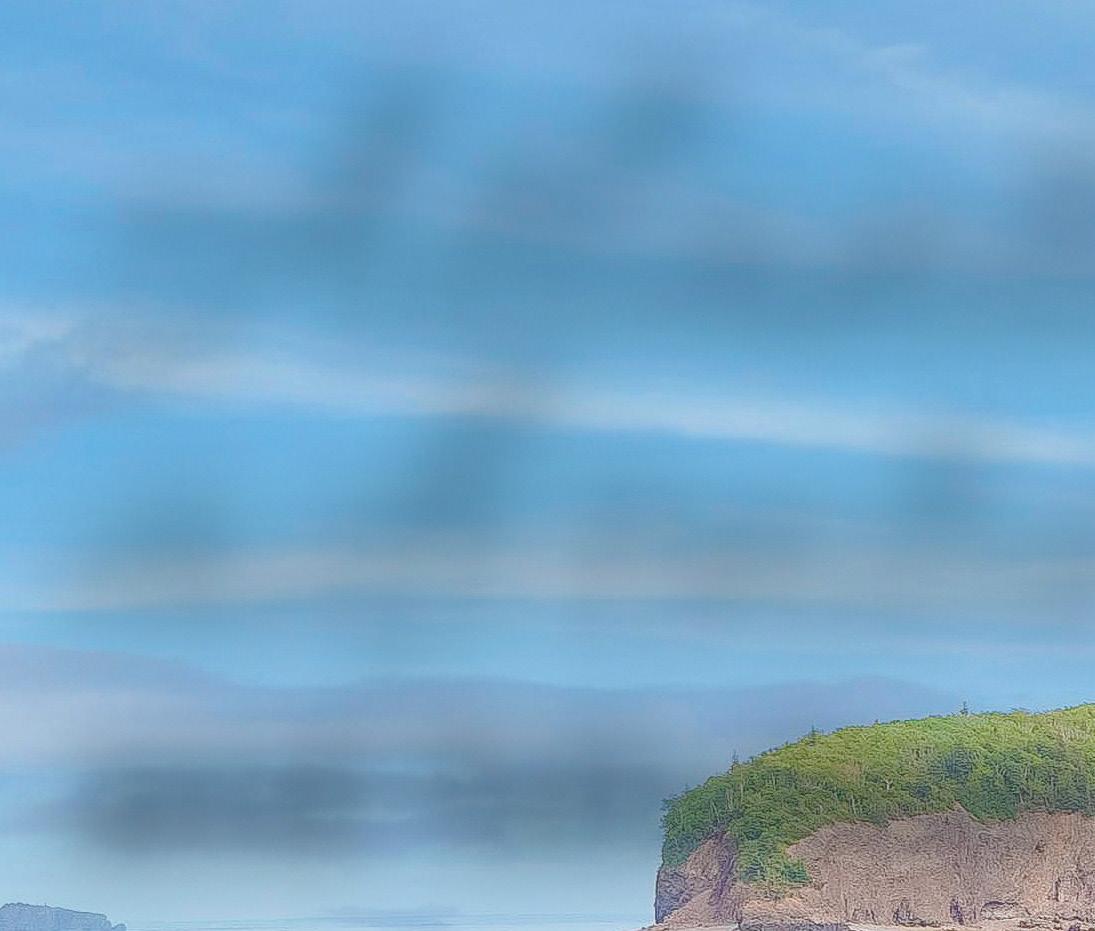


Atlantic
adventures and fabulous food

YOUR ON-THE-GO GUIDE TO CANAD A’ S EAST COAST
YOUR ON-THE-GO GUIDE TO CANADA’S EAST COAS T
Where will your staycation take YOU this year?

saltscapes.com/travel
2024 ISSUE
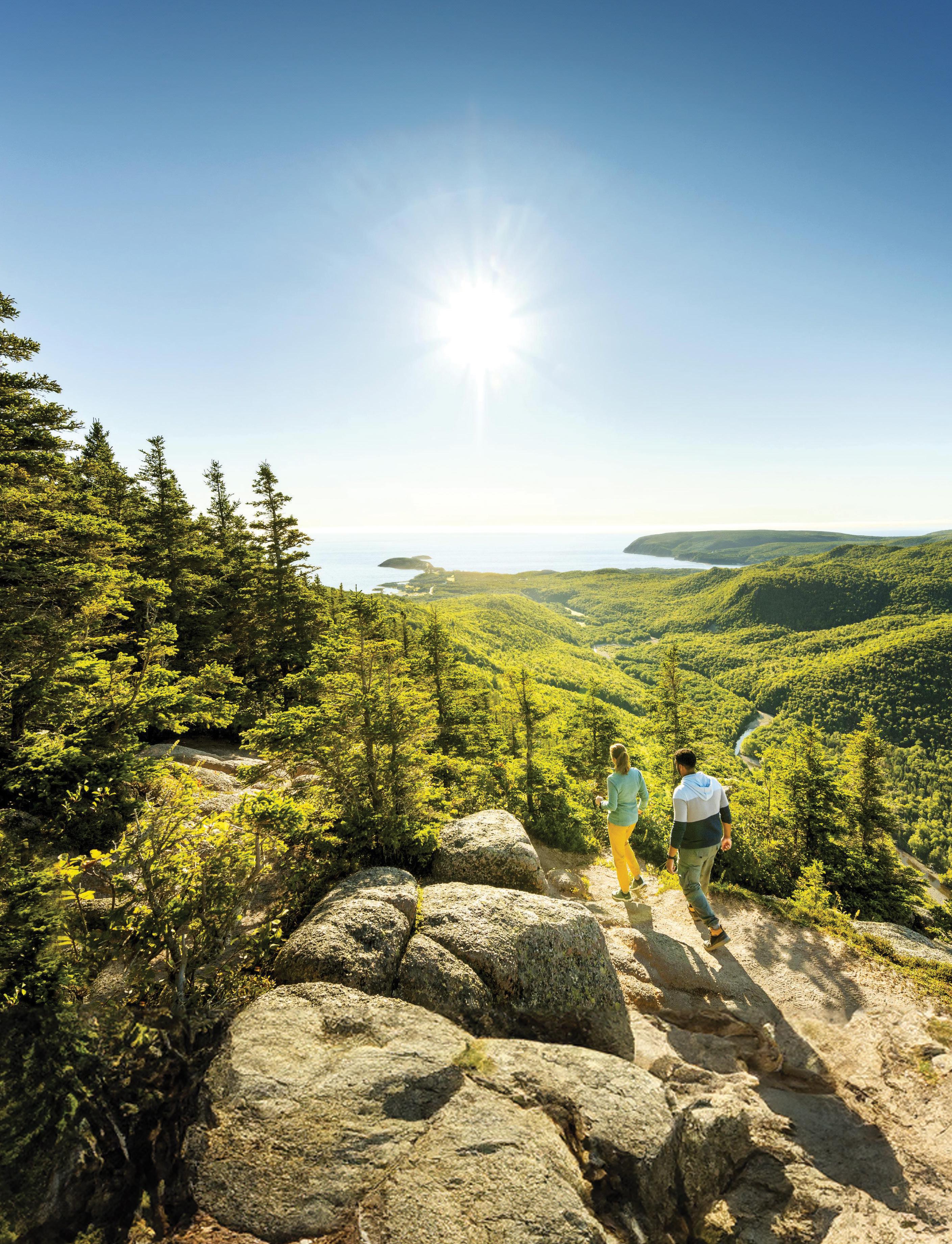
Visit NovaScotia.com to discover Your Ocean Playground. With breathtaking scenery, rich history, and friendly locals, Nova Scotia offers something for everyone. And no trip is complete without a majestic coastal hike. THE PERFECT VACATION DOESN’T EXI... NEVERMIND. Franey Trail, Cape Breton Highlands National Park

NEW BRUNSWICK 6 Kicking axe in New Brunswick A beer fest puts Nackawic on the map 9 I heart Freddy Getting to know Fredericton by water and trail 12 The hidden treasure of the Fundy Parkway Walton Glen Gorge 15 Off-grid luxury and fine eats (and drinks) A getaway featuring geodesic domes, great brews, and yummy food 18 Politics and puffin people Watching migratory birds on disputed Machias Seal Island NEWFOUNDLAND AND LABRADOR 22 Fire circles, frying bannock Seeing Gros Morne through the eyes of the First Peoples 24 Not just a drive-by Why you should plan a day trip (or longer) to Cormack 26 Heart of the city Exploring St. John’s downtown Water Street 28 The Resettlement comes alive Immerse yourself in a community from Newfoundland’s past 30 Art by the sea Take the turnoff to the Eastport Peninsula NOVA SCOTIA 32 The urban village on the harbour Spend a delightful day in downtown Dartmouth 36 Three days on Isle Madame Escape to the tiny archipelago off Cape Breton’s southwest coast 40 Kids add colour Indigenous history, art, and culture in Millbrook 44 35 Acadian things Heritage stops from East Pubnico to Saint Bernard 48 Temperance tapestries and hilltop ships Quirky spots to visit along the Canso Loop 51 Magic and gems The creative pulse of the island on an artisan tour of the Cabot Trail
EDWARD ISLAND 53 Bannock and clams Breaking bread in Mi’kma’ki 56 Sandy beaches and city streets Take a trip around parts of P.E.I. by horseback contents
PRINCE
Your staycation plans start here!
DARCY RHYNO
3 YOUR ON-THE-GO GUIDE TO CANADA’S EAST COAST
Artwork by Alan Syliboy.



MAGDALEN ISLANDS 60 Feet of the wind, goats of the air Artisanal cheeses of the Magdalene Islands SAINT PIERRE AND MIQUELON 62 The spirit of France St. Pierre and Miquelon are a slice of French culture ATLANTIC PROVINCES 64 The right notes Embrace your love of a good tune at these events 68 Relax and recharge Spas and wellness on the East Coast 72 The African heritage treasure hunt Geocaching the Black history of Atlantic Canada 74 Out in a Boat Great experiences on East Coast waters 76 Top of the leaderboard Treat yourself to one of the challenging golf resorts in our region 79 ADVERTISING: Sea views and saved time Bay Ferries and Northumberland Ferries offers great fun for all RECIPES 11 Mushroom and Leek Soup with Fiddleheads and Pancetta 34 Crispy Tempura Maitake Mushroom Risotto 46 East Coast Seafood Gratin 50 Fortress Rum Caramel Sauce 52 Giovani Gems from Cabotto Chocolates 54 Lennox Island Bannock 61 Mussels, Magdalene Islands Style NEW BRUNSWICK TOURISM Publisher/Editor-in-Chief Crystal Murray • cmurray@saltscapes.com Vice President of Sales Fred Fiander • ffiander@saltscapes.com Senior Editor Jodi DeLong • jdelong@saltscapes.com Senior Editor/Copy Chief Trevor J. Adams • tadams@metroguide.ca Vice President of Business Development Linda Gourlay • lgourlay@saltscapes.com Account Executives Susan Giffin • sgiffin@saltscapes.com Pam Hancock • phancock@saltscapes.com Senior Director Creative Design and Production Shawn Dalton • sdalton@saltscapes.com Production Coordinator Nicole McNeil • nmcneil@metroguide.ca Designers Roxanna Boers • rboers@saltscapes.com Zoey Zsingor • zoey@acgstudio.com Saltscapes is published seven times annually by: Metro Guide Publishing, a division of Advocate Printing & Publishing Company Ltd. 2882 Gottingen St., Halifax, N.S. B3K 3E2 Tel: (902) 464-7258, Sales Toll Free: 1-877-311-5877 Contents copyright: No portion of this publication may be reprinted without the consent of the publisher. Saltscapes can assume no responsibility for unsolicited manuscripts, photographs or other materials and cannot return same unless accompanied by self addressed stamped envelope. Publisher cannot warranty claims made in advertisements. Saltscapes is committed to Atlantic Canada’s unique people, their culture, their heritage and their values. Subscription Services Enquiries please contact: Toll Free: 1-877-885-6344 subscriptions@saltscapes.com PO Box 190 Pictou, N.S. B0K 1H0 Subscriptions: Canada, one year (7 issues) $39.95, two years (14 issues) $59.95 (plus applicable tax) U.S. one year $39.95 (Cdn.) plus $17.00 shipping Overseas one year $39.95 (Cdn.) plus $29.00 shipping Subscriptions are non-refundable. If a subscription needs to be cancelled, where applicable, credits can be applied to other Metro Guide Publishing titles. Please note that each circumstance is unique and election to make an offer in one instance does not create obligation to do so in another. We acknowledge the financial support of the Government of Canada. Canada Post Publications Mail Agreement No. 40064799 ISSN 1492-3351 Return undeliverable Canadian addresses to: Saltscapes Subscriptions, PO Box 190 Pictou, NS B0K 1H0 E-mail: subscriptions@saltscapes.com Printed by: Advocate Printing & Publishing, Pictou, N.S., Canada On our cover Saltscapes: Photography by Tourism Nova Scotia/ Nova Social Media and Marketing Sobeys: Photography by Tourism Nova Scotia/James Ingram Bay Ferries & Northumberland Ferries: Photography by Tourism Nova Scotia/ Nova Social Media and Marketing Saltscapes is a member of: Canadian Magazine Publishers Association CMCA AUDITED 2024 issue
YOUR ON-THE-GO GUIDE TO CANADA’S EAST COAST
Shediac Lobster Festival.
4 YOUR ON-THE-GO GUIDE TO CANADA’S EAST COAST
Horseback riding in P.E.I.
OUTBACK WILDERNESS 2024




Discover new worlds in the most ruggedly capable Outback ever. Take on new trails with durable 17" all-terrain tires for more grip and control, increased ground clearance and rugged body cladding for added protection. Confidently explore uncharted territory with legendary Subaru Symmetrical Full-Time AWD and Enhanced Dual-Function X-MODE®. Enhanced EyeSight® Driver Assist Technology also comes standard to help ensure safe exploration. Top it all off with a spacious and well-appointed comfortable interior from a manufacturer with a reputation for enduring quality and dependability. Book a test drive at your local Atlantic Subaru dealer today.















Dramatization. Do not attempt. Always park your vehicle away from hazardous edges. Model shown is a 2024 Outback Wilderness. See your local Subaru dealer for complete details. Vehicles shown solely for purposes of illustration and may not be equipped exactly as shown. Accessories shown and corresponding lifestyle items are extra and may not be available at the dealer. See Owner’s Manual for complete details on system operation and limitations. EyeSight® is a driver-assist system, which may not operate optimally under all driving conditions. The driver is always responsible for safe and attentive driving. System effectiveness depends on many factors such as vehicle maintenance, and weather and road conditions. Ratings are awarded by the Insurance Institute for Highway Safety (IIHS). Please visit www.iihs.org for testing methods. See your local Subaru dealer or visit www.atlantic.subarudealer.ca for complete program details. Outback Wilderness and Subaru are registered trademarks. “welcome to uncommon” is a trademark of Subaru Canada Inc.







Kicking axe in New Brunswick
A beer fest puts Nackawic on the map with another big axe
 BY DALE DUNLOP
BY DALE DUNLOP
For more than 100 years, national brands under the Molson’s and Labatt’s labels, plus Saint John’s Moosehead Brewery, dominated New Brunswick’s beer scene. That began to change in 1994 when Picaroons opened in Fredericton, with Pump House in Moncton following in 1999. Those craft breweries were producing distinctly different products than the large establishments, and in miniscule volume compared to the big guns’ output.
Things were tough as these pioneers fought for the right to sell their products directly to customers in their own taprooms. Opposition from both the government and the big three kept the number of breweries to a minimum for a while, but eventually crumbled in the face of a growing demand new brews, and for better tasting products. The number of craft breweries in New Brunswick started to explode in the second decade of the 21st century. Today there are more than 50, along with many in Nova Scotia, Newfoundland and Labrador, and Prince Edward Island.
In 2004, Pete Cole moved from his home province of Newfoundland and Labrador to the small village of Nackawic, N.B. It’s a
 Boaters pull up at the marina, then head to the beer festival.
Pete Cole and Crystal Ford operate Big Axe Brewery and the beer festival.
Boaters pull up at the marina, then head to the beer festival.
Pete Cole and Crystal Ford operate Big Axe Brewery and the beer festival.
6 NEW BRUNSWICK
DALE DUNLOP
relatively new town with a paradoxical long history. Once known as the United Empire Loyalist lumbering community of Otis, it has an ideal location at the confluence of the Wolastoq (Saint John) and Nackawic rivers. With the creation of the Mactaquac dam in the late 1960s, Otis was destined to flood. The residents were moved to a higher location, renaming the town Nackawic. The lumber industry is still the predominant employer and when in 1991 Nackawic was named Forestry Capital of Canada by the Canadian Forestry Association, residents celebrated by building the world’s largest axe. Until recently, this was the main draw for tourists.
After working in Nackawic for 10 years, Pete Cole found his true calling as a brew master and in 2014 he opened Big Axe Brewery with the slogan is “Craft beer that kicks axe.” His beers were an immediate hit, and you can now sample a dozen different products at the taproom on Otis Drive.
Pete’s vision was greater than just owning a successful craft brewery. In
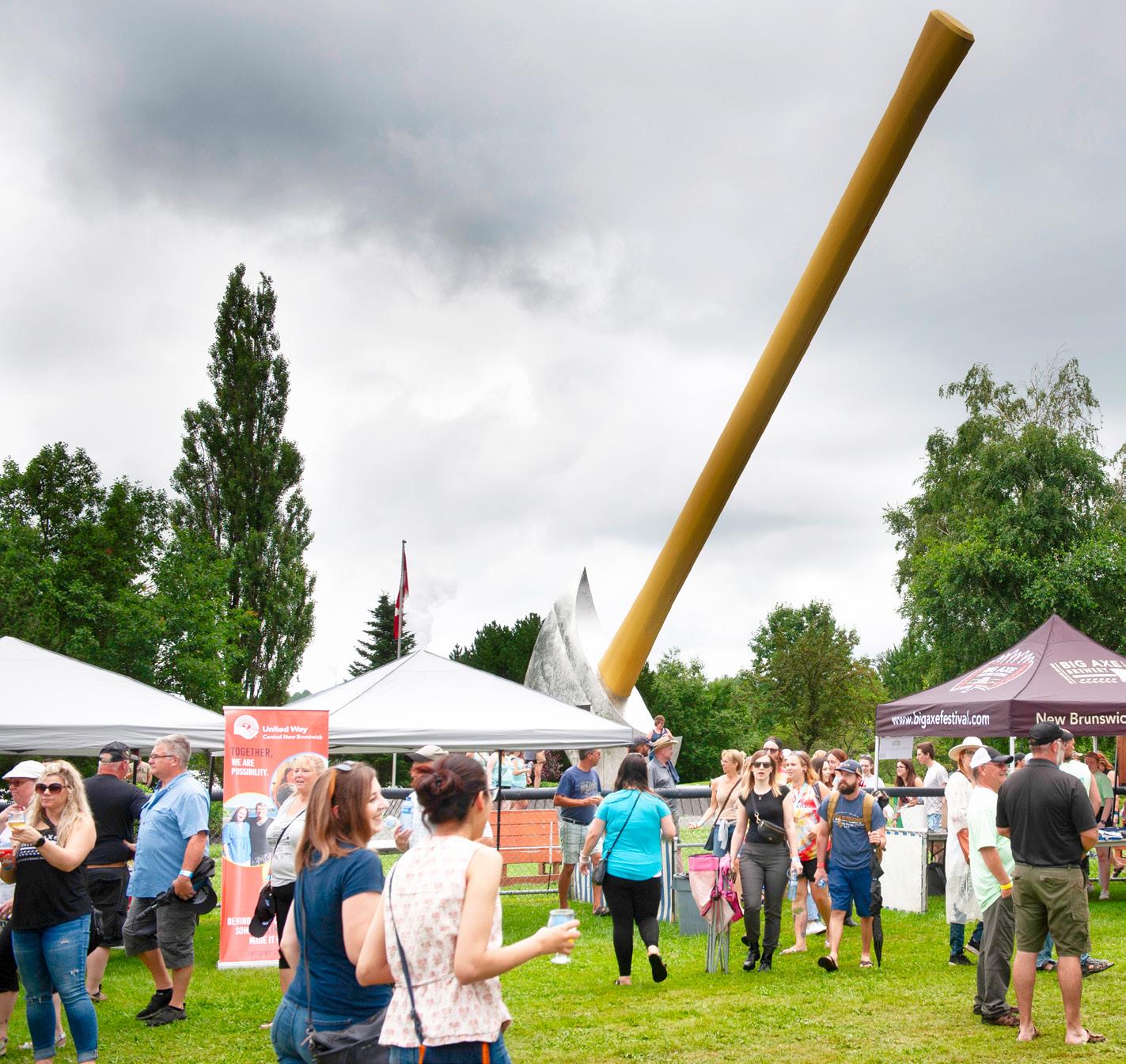



Welcome to ELSIPOGTOG MI'KMAQ CULTURAL CENTRE Heritage Path Tour & Artisan Gift Shop Welcome to (506) 521-0308 www.heritagepathtour.com Welcome to ELSIPOGTOG MI'KMAQ CULTURAL CENTRE Heritage Path Tour & Artisan Gift Shop Heritage Path Tour & Artisan Gift Shop (506) 521-0308 www.heritagepathtour.com Welcome to ELSIPOGTOG MI'KMAQ CULTURAL CENTRE Heritage Path Tour & Artisan Gift Shop
With Nackawic’s Big Axe as backdrop, the beer festival is in full swing.
BIG AXE CRAFT BEER FESTIVAL BIG AXE CRAFT BEER FESTIVAL 7 NEW BRUNSWICK

2017, in cooperation with local officials, he founded the Big Axe Craft Brewery Festival on the open community space right beside the world’s largest axe.
The first festival was held in 2017 and
attracted 30 craft brewers from around the Maritimes, and a modest crowd of 700 attendees. 2018 saw an increase in numbers of both brewers and attendance, but then COVID-19 struck, and the festival was forced into a two-year hiatus. When it was safe to hold public gatherings again, there was a pent-up demand to socialize while tasting great beers in a congenial outdoor atmosphere. In 2023, there were 40 vendors, seven food trucks, and the largest crowds yet.
The festival takes place under a large canopy where the various brewers set up. Last year, several cideries, distilleries, and even a New Brunswick winery joined them. Attendees buy a ticket that gets them water, a commemorative glass, and the right to sample as much beer as they might desire from 4 p.m. to 8 p.m.
The night before the festival, there is live music under the canopy from 5 p.m. to 10 p.m. with several different acts.
There’s little accommodation to be had in the village, so organizers charter buses

to run festival goers from Fredericton, Woodstock, and Saint John/Rothesay to Nackawic and back. The Delta in Fredericton now offers a festival rate.
Other options include renting a houseboat in nearby Mactaquac Provincial Park and pulling up to the marina in Nackawic. This is a popular choice, so make make reservations in advance. There are also two campgrounds nearby and seven within easy driving distance, many with locations on the Wolastoq River. One bus picks up ticket holders at campgrounds on the way from Fredericton to Nackawic. Organizers say the combination of transportation and accommodation options means there’s never been a known incident of drunk driving by a festival-goer.
The Big Axe Craft Beer Festival is just getting started, but has already attracted repeat attendees from as far away as British Columbia and California. Plans are underway to expand the festival for up to four days in the future. The 2024 date is July 13. Bigaxefestival.com

 The world’s largest axe is 15 metres tall and honours Nackawic’s forestry history.
The world’s largest axe is 15 metres tall and honours Nackawic’s forestry history.
8 NEW BRUNSWICK
DALE DUNLOP
I heart Freddy
Getting to know Fredericton by water and trail
STORY AND PHOTOGRAPHY BY DARCY RHYNO
It’s said that Fredericton has a wild side. To fully appreciate it, I head to Second Nature Outdoors (secondnatureoutdoors.com), the riverside outlet that rents bicycles, ebikes, kayaks, canoes, and stand-up paddleboards. Alexi Roy is assigned to take me on a bike tour this morning. He’s one of their customer experience officers. “The abbreviation is CEO, so it’s a big role,” he jokes. He does take on pretty well anything thrown at him. Canoe outings are his favourite, but today, he’s perfectly happy to lead a 15-kilometre bicycle tour. With big parks and endless trails
beside the Wolastoq (Saint John) River, Fredericton is renowned for its outdoor activities. Some 45 kilometres of bike lanes and 39 kilometres of bike routes crisscross the city. Fredericton’s 120-kilometre trail system extends on both sides of the river. Of those, 21 kilometres are paved and accessible for wheelchairs and all bicycles. The river, meandering past the downtown, is a scenic and watery playground for paddlers.
We set off along the paved trail between the Wolastoq River and the urban core, eventually crossing the river on the old
Fredericton Railway Bridge, now the Bill Thorpe Walking Bridge. It’s a stately, old truss bridge with new decking and great views of the downtown framed through its steel struts. On the far side, we follow the trail beside the Nashwaak River, a tributary of the Wolastoq River. When I stop to take photos, I spot a couple of deer. Roy fills me in on the animals and birds that live along these trails. “We have eagles and osprey,” he says. “We had one eagle flying around yesterday. He did a few laps. In the water, we have beavers, and I see river otters quite frequently.”
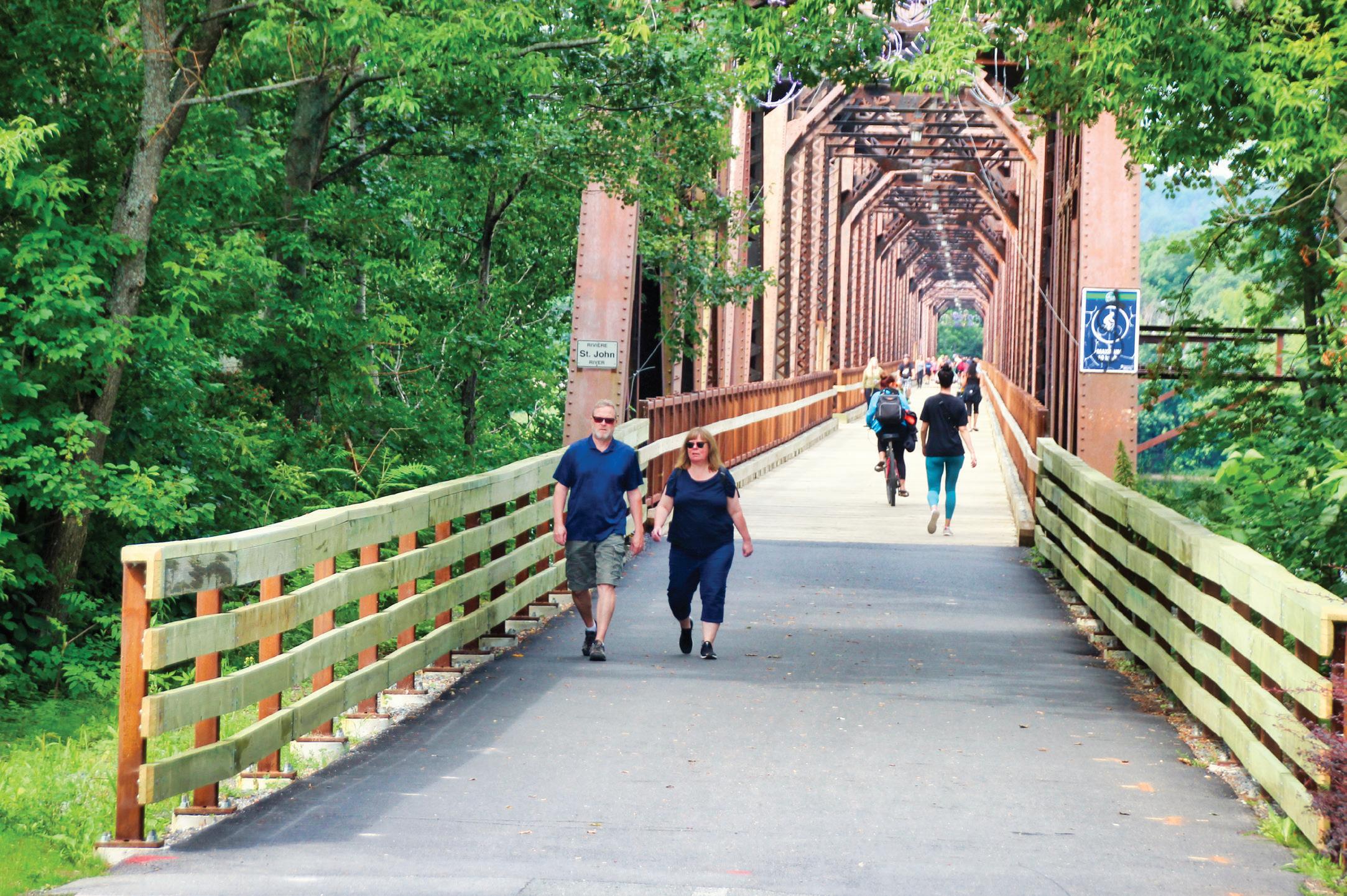 Fredericton’s 120-kilometre trail system extends on both sides of the Wolastoq (Saint John) River.
Fredericton’s 120-kilometre trail system extends on both sides of the Wolastoq (Saint John) River.
9 NEW BRUNSWICK



Five kilometres inland, we emerge from riverside forest into Marysville, a fascinating national historic site. It was once an entirely self-contained mill town that businessman Alexander Gibson, AKA Boss Gibson, bought and greatly expanded in the mid 19th century. He named his mill town after his wife and daughter who shared the same first name. We ride past the four-storey, former cotton mill, now
an office building, shops, and dozens of workers’ homes, almost all of them made of brick, giving the now-residential area a neighbourhood feel.
We head down the Nashwaak, along the Wolastoq and back to Second Nature. I’m almost ready for my next adventure, but before I set out again, I need refreshment. Roy recommends the coffee at the onsite Lady Dipper Cafe, but he adds that he tries
something different every day. I go for the tropical twist smoothie and take a seat on a bench until it’s time to paddle.
Danika Bridgeman fits me with lifejacket and paddle. We carry the canoe to the water and set off across the river, the guide navigating from the stern. She points us into a smaller tributary than the Nashwaak. It’s called the Nashwaaksis Stream and enters the Wolastoq River at



LIFE W E L L C R A F T E D Where nature, culture, history, local artisans, and craft brews weave together to create an unexpected and memorable experience Discover life well crafted in the Fredericton Capital Region FrederictonCapitalRegion.ca
10 NEW BRUNSWICK





a wide wetland, then squeezes through a residential area before winding its way into a park. It’s narrow enough that huge, old trees lean over it, their upper branches sometimes forming a canopy, dappling light across the still waters.
As we paddle those waters, a movement catches my eye. A bald eagle lifts from a branch and glides upstream away from us. It takes me a moment to mouth words of astonishment to Bridgeman. She’s less surprised, saying that eagles are common along the stream where they fish. I think of what Alexi Roy told me about all the wildlife he spots in Fredericton’s wild places. When we round the next bend, there’s the eagle again, and once again it lifts and glides out of sight. We spot the eagle three times before it tires of the game and disappears above the canopy.
We paddle deeper, reaching further into Fredericton’s north shore. This feels nothing like a city, even when we drift past backyards of residents lucky enough to live beside this shaded, little stream. By the time we head back downstream, I’m ready to claim status as an honourary local. After cycling and paddling into the heart of Fredericton, I might even buy one of those “I heart” T-shirts and refer to the city by its nickname: I heart Freddy!
Mushroom and Leek Soup with Fiddleheads and Pancetta
From Jenna White of Jenna’s Nut Free Dessertery (nutfreedessertery. com) in Fredericton, who likes to create dishes with local fiddleheads foraged in spring and frozen for later use. She says this soup pairs perfectly with fresh bannock or rolls.
Ingredients
½ lb (228 g) sliced mushrooms
1½ cups (375 mL) sliced leeks
1½ cups (375 mL) fiddleheads, washed
1 cup (250 mL) pancetta
12½ cups (3 L) mushroom broth
2 cloves garlic, minced
2 tbs (30 mL) olive oil
Sprig of fresh thyme
Directions
In a soup pot, heat olive oil and fry the mushrooms, leeks, garlic, and a sprig of thyme. Add the pancetta and continue to fry until the mushrooms are tender. Pour in the broth and bring to a boil. Add the fiddleheads and simmer for 30-45 minutes. Remove the thyme sprig. Add salt and pepper to taste. Let cool slightly and enjoy.




 Costumed actors stroll around the Garrison.
Costumed actors stroll around the Garrison.
11 NEW BRUNSWICK
The hidden treasure of the Fundy Parkway
Exploring Walton Glen Gorge
 STORY AND PHOTOGRAPHY BY DALE DUNLOP
STORY AND PHOTOGRAPHY BY DALE DUNLOP
The Bay of Fundy is one of the world’s great natural wonders. With its enormous tidal changes, unique rock formations and fossil beds, unmatched whale watching, and massive flocks of migrating shorebirds, it’s been attracting tourists since long before the opening of Fundy National Park in 1950. Untiil recently, a big chunk of the New Brunswick coastline from the village of St. Martins to Fundy National Park was still inaccessible to all but the most intrepid hikers.
Mitchell Franklin dreamed of connecting the two points by building a parkway to rival Nova Scotia’s Cabot Trail. In the early 1990s, he convinced the provincial and federal governments to undertake what would become a 26-year project to bring his dream to fruition. The project started from St. Martins, and what became known as the Fundy Trail Parkway opened in increments from 1998 to 2021, when workers finished the final connection to Fundy National Park.
That last section of the parkway opened what many considered to be crown jewel of the entire system: Walton Glen Gorge.
The area was largely unknown until some 30 years ago, when a few experienced hikers made an arduous four-hour trek both in and out to see the second highest
waterfall in the province. Reports from these hikers described “the Grand Canyon of New Brunswick” and a place they called “The Eye of the Needle” where the canyon walls are only three metres wide. Walton Glen Gorge became a place that everyone wanted to see, but few had the ability and daring to attempt it.
That all changed dramatically in 2020 with the opening of the Walton Glen Gorge Observation Deck. This structure allows people to stand in awe some 100 metres above the canyon floor, and take photos and videos of the waterfall across the gorge. Even though I’ve travelled extensively in the Atlantic Canadian wilderness, the majesty of Walton Glen Gorge took me aback.
While everyone should travel the length of the Fundy Trail Parkway at least once, if pressed for time, just visit Walton Glen Gorge. You can spend as little as an hour just going to and from the observation deck or an entire day exploring the other trails that start at the parking lot. There are three ways to get to the starting point: from St. Martins, from Fundy National Park, or most directly from the town of Sussex, just off the Moncton-Saint John highway. From Sussex to the parkway gate is 51 kilometres, and the Walton Glen Gorge

parking lot and Interpretive Centre are just beyond that.
Admission is $11.50 for adults, $10 for seniors, and $6.50 for kids, which allows access to everything the Fundy Parkway has to offer. Arrive as early in the day as possible, as the parking lot fills quickly during summer and fall.
The first destination is almost certain to be the Walton Glen Gorge Observation Deck. Anyone in good physical shape can take a shortcut through the woods to stairs that lead to a brook crossing and then
The 42-metre tall waterfall is the highlight of the Walton Glen Gorge.
12 NEW BRUNSWICK







LIFE W E L L C R A F T E D
Sip your way through the Fredericton Capital Region and Discover our local taprooms and producers Discover the stories behind the brews, and see how each are crafting unique flavours their own way Welcome to Atlantic Canada’s Craft Brewing Capital. FrederictonCapitalRegion.ca
13 NEW BRUNSWICK
The walkway to the viewing platform overlooking Walton Glen Gorge and falls.

back up a wide, but somewhat steep, path. It’s about a kilometre to the observation deck by this route. The area of the brook crossing can get a bit muddy, so wear waterproof footwear.
The other route is longer, but involves no obstacles — easier access for people with mobility issues. This route is 2.3 kilometres each way. No special footwear is required.
At the end of either route, you’ll find the large wooden platform with metal railings that hangs on the edge of the gorge almost directly across from Walton Glen Gorge Falls. The falls are the horsetail variety and the water careens over the opposite side of the gorge some 44 metres into Little Salmon River below. Almost as spectacular as the falls are the cliffs of the gorge and the views all the way out to the Bay of Fundy.
There are other trails in Walton Glen Gorge, including the easy 1.2-kilometre McCumber Brook Wetlands Trail, and the more demanding, 3.8-kilometre MacLeod Brook Falls loop.
For more info, see fundytrailparkway. com/location/walton-glen-gorge-trail




14 NEW BRUNSWICK
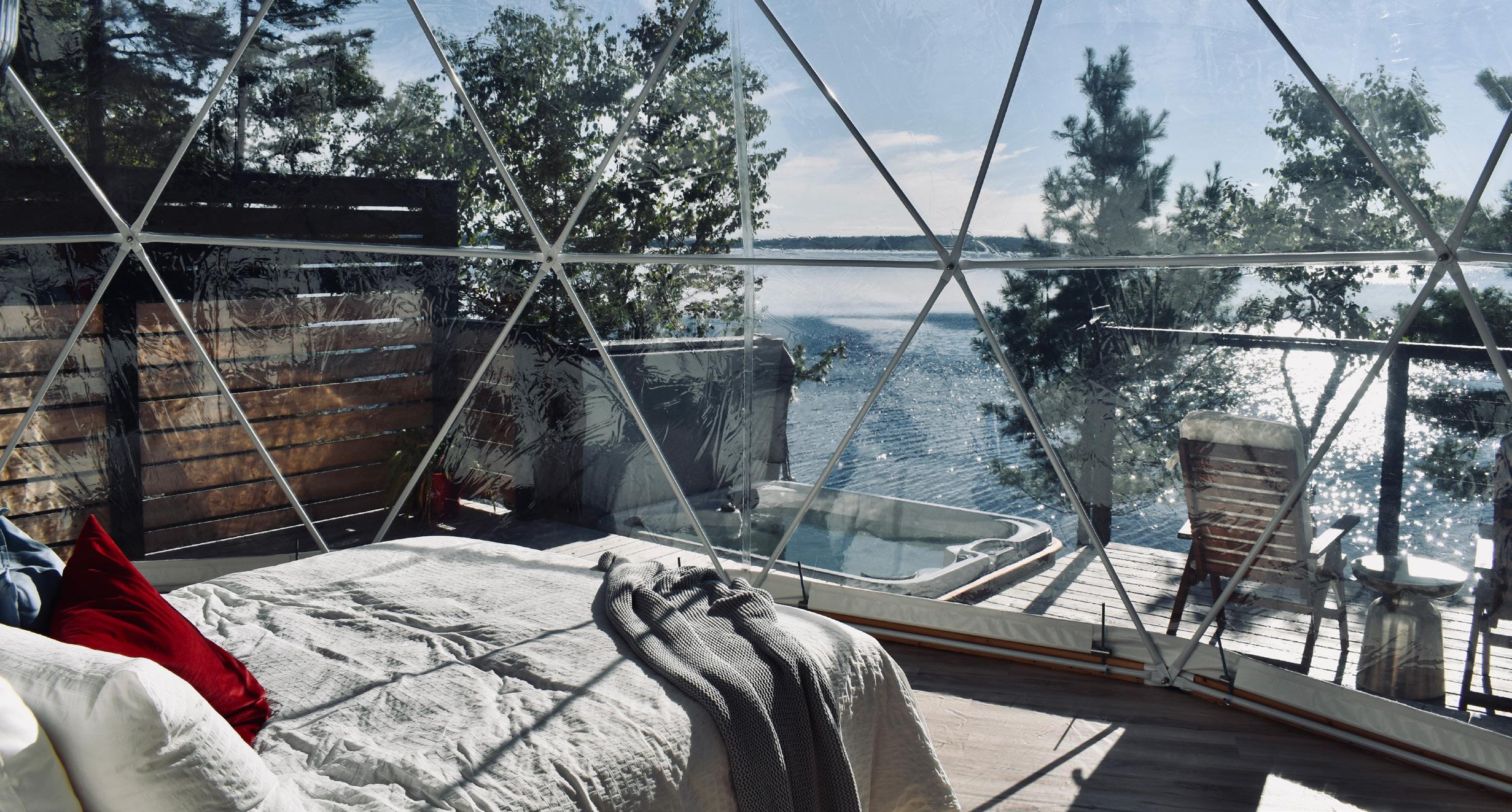
Off-grid luxury and fine eats (and drinks)
A getaway featuring geodesic domes, great brews, and food in New Brunswick
BY SANDRA PHINNEY
When Tallyia MacMullen and Tim Byrne met years ago while working at Ganong Chocolatier in St. Stephen, N.B., little did they know they would become partners, parents, and entrepreneurs. The couple now owns OG Ales, an off-grid brewery and tap room, and four geodesic domes providing luxury accommodations in Magaguadavic, N.B.
In 2016, Randy and Denise Rowe started OG Ales in Harvey. They were passionate about making good craft beer and having a sustainable operation, producing beer off-grid. They accomplished the goals and decided to retire six years later.
When Tallyia and Tim saw a notice on Facebook that OG Ales was for sale, they knew their life was about to change. Although they had great jobs at Ganong, the
twice-daily 80-kilometre commute to and from their fifth-generation homestead in Magaguadavic was a long haul.
They bought the company, and Tim apprenticed with the Rowes to learn the business. Knowing they would relocate the brewery across the road from their homestead, the young couple hammered out plans to bring their vision alive. “We wanted to create a brewery estate,” Tallyia says. “We planned a destination where friends and visitors could meet in a relaxed but special setting, have conversations, and create community.”
They opened the new OG Ales and a stunning tap room in June 2023 and built four luxury geodesic domes along the shore of Magaguadavic Lake.
Although Tim has spent hours setting

up operations, he loves owning his own business. “Having a vision and not needing other people’s approval to make it happen” tops the list of perks, he says. “And now I can take the kids to hockey and basketball, or swimming on a hot day.”
Their dog, Jib, who is featured on cans of Smooth Sailing Pale Ale, is always there to
Bask in the sun or take a dip in the hot tub at OG Ales’ domes. Below: owners Tim Byrne and Tallyia MacMullen at OG Ales.
JODIE SOLOMON @ESCAPEWITHJODIE
15 NEW BRUNSWICK
DENISE ROWE PHOTOGRAPHY

greet you. “Throw a stick: he’ll be your new best friend,” Tim says.
Recently, Tim converted production from bottles to cans. “We have a 15 to 20-barrel system and produce 25,000 cans every two weeks.” An array of 40 solar panels generates 80 kWh of energy, allowing OG Ales to be net carbon neutral.
In their first year, Tim and Tallyia have built an army of fans, including Christa and Todd Sparks from nearby Lake George. “It’s all about having the best experience,” Christa
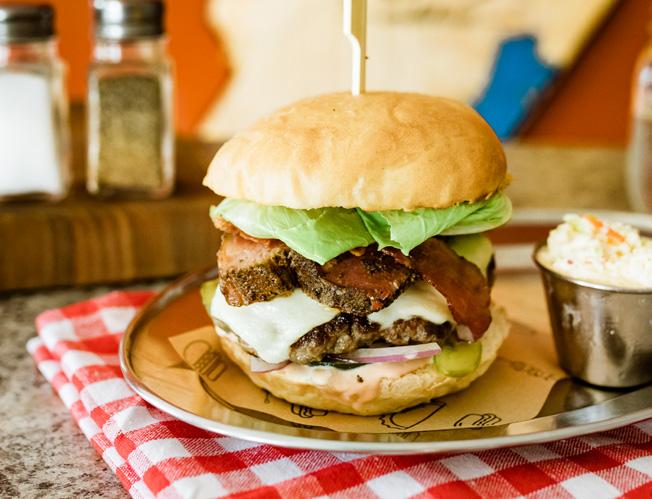
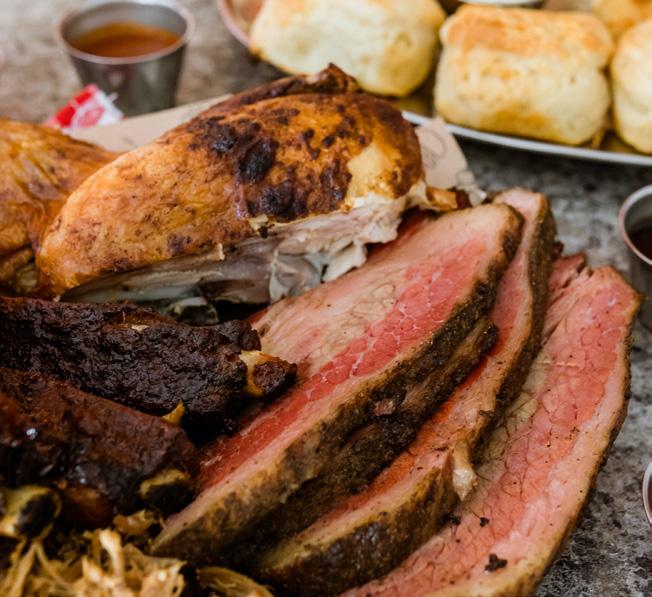
says, “whether you’re there for one beer, a quiet game of crib, or one of their special events.” Christa was especially touched when the owners hosted a wake when her father-in-law died. “You can tell that making customers happy and supporting our local area is their main priority.”
My husband and I celebrated his 78th birthday in the spacious OG Hightower dome. Although it was October, we enjoyed relaxing in the hot tub on the dome’s deck, mere metres from the lake. Barrie and I


have stayed in various yurts, cabins, and geodesic domes over the years, and in our experience, this one tops them all.
Bonus: We were able to select items from a menu designed for OG Dome guests and prepared by Entity 59 Smokehouse. (See sidebar below.) Delicious food was in the fridge when we arrived!
Just down the road
If you can pull yourself away from the taproom and dome, there are fun places to visit in Harvey, only 15 minutes away.
Topping the list is Entity 59 Smokehouse. For lunch one day, Barrie and I had the eye-popping Dinner Date platter: beans, stuffed potato, mac‘n’cheese, coleslaw, barbecue chicken, pulled pork, ribs, Montreal smoked meat, and biscuits. Although stuffed, we also shared a big bread pudding. During lunch, we spoke with the owner, Rohit Pinto, and his right hand, Jessica Lavigne.
Rohit immigrated from India to Canada in 2018, eventually settling in rural New Brunswick. When the former engineer had a chance to buy a small bakery/restaurant in Harvey, he jumped in, changed the name, and decided to specialize in smoked meats.
His love of cooking started when he was six, helping his mother on a small family farm. Now, Rohit’s food is drawing people from far and wide. Jessica had already worked at this location as kitchen manager for six years, and her passion for good food (and skills in the kitchen) was a perfect match.
Entity 59 Smokehouse is in the Upper Village Mall, a small-scale mall on the outskirts of Harvey. This location includes a beauty shop, visitor’s centre, ice cream bar, and a unique crafts shop.
While in Harvey, get a photo of the Big Fiddle — a giant replica of Don Messer’s fiddle. Then, slip into the WWE Smith Country Store and buy a copy of Don Messer — The Man Behind the Music by Johanna Bertin. This story about a local legend makes for great bedtime reading back in your dome.
Above: A few of the different OG Ales on offer. Right, top: The brewery is off-grid, using solar powers to make its brews. Right: Belly up to the bar to sample flights.
KALEIGH BETTY KALEIGH BETTY
JODIE SOLOMON @ESCAPEWITHJODIE
JODIE SOLOMON @ ESCAPEWITHJODIE
SUBMITTED 16 NEW BRUNSWICK





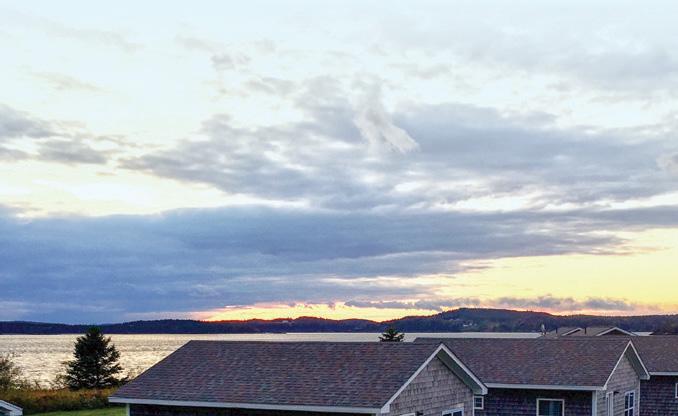

























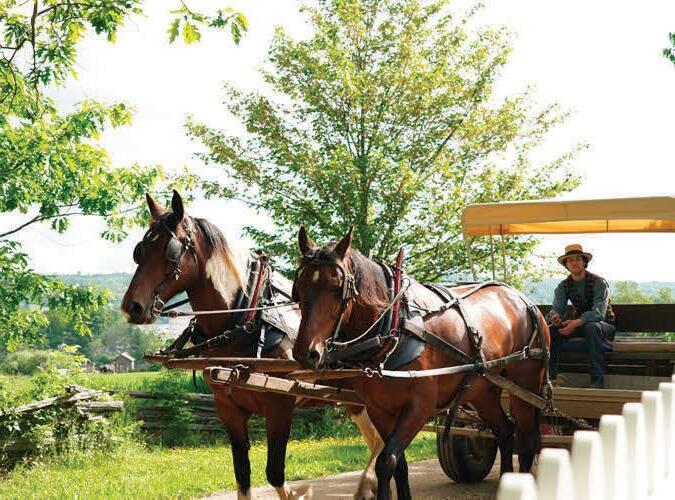



the Roosevelts so loved! Marvel at the stunning SEASCAPES New Brunswick 877-851-6663 RooseveltCampobello.org View whales, porpoise, seals 34-room guided cottage tour Late May - late Oct FREE Admission Eleanor’s Tea 1964-2024 Your Home on Campobello Island info@pollockcove.com• 506-752-2300 1 & 2 Bedroom Cottages Multi Bedroom Houses @ kingslandingnb kingslanding . nb . ca There’s No Time Like the Present to Discover the Past! Step back into 19th century New Brunswick at this open-air museum just 20 minutes from Fredericton.
Politics and puffin people
Watching migratory birds on disputed Machias Seal Island
BY CAROL PATTERSON
Barnacles crunch under my feet as I scramble up a seaweed-covered ramp onto Machias Seal Island. It’s my first visit to a territory that Canada and the United States both claim. Located between the Gulf of Maine and the Bay of Fundy, this tiny island about the size of 10 sports fields has strategic importance to both countries. It also has tremendous value to nesting seabirds, and in 1944 was declared a migratory bird sanctuary by the Canadian Wildlife Service. I hope diplomatic relations hold as I snatch a rare chance to sit amongst thousands of Atlantic puffins.
I journeyed 90 minutes across the Bay of Fundy from Grand Manan Island in a lobster boat that Sea Watch Tours owner and Captain Alec Ingalls repurposed for birdwatching duty. From late June until early August, only 30 people are allowed on the island daily (weather and sea conditions permitting), 15 from Canada and 15 from the U.S.
Huddled among 14 other camera-toting adventurers, I’m eager to visit a small island few Canadians are aware of, and even fewer ever see.
The Indigenous Passamaquoddy people visited the area as hunting grounds for millenia. With European contact, things got complicated. The Treaty of Paris, signed in 1783, claimed the U.S. had rights to any territory less than 20 leagues (about 97 kilometres) off its coast, south of the St. Croix River mouth, and north of coastal Florida. A 1621 land grant from King James I, deeding Nova Scotia to Sir William Alexander, said any island within six leagues of the Canadian coastline would be Canada’s. Both seemed to apply to Machias Seal Island, a situation as murky as the fog surrounding our boat.

The British took the bold move of establishing a light station on the island in 1832 and the Canadian Coast Guard continues to keep two lighthouse keepers on the island for 28-day shifts. In 2018, the United States tested the ownership issue when American Border Patrol agents questioned Canadian fishermen near Machias Seal Island.
As I contemplate the ways governments assert ownership, I admire the clean white lines of the lighthouse tipping the balance towards Canada. Long, green grasses wave in the wind and bird silhouettes are visible on the red roofs of tidy bungalows. This was one of the most remote Canadian destinations I’d visited, but it’s not human border guards I worry about as I grab a metre-long stick for protection.
The island is home to razorbills, Leach’s


storm petrel, common murres, and one of the most southerly Atlantic puffin colonies. It’s also host to an Arctic tern colony that may be the largest in North America.
Many terns nest close to the boardwalks
CAROL PATTERSON
WIKIPEDIA/MELISSA MACMASTERS
18 NEW BRUNSWICK
A seal basks on seaweed-covered rocks with Machias Seal Island in the background. Below: Only 30 people may visit the island each day.



between shore and the various buildings. Not taking chances with junior’s survival, the terns dive bomb humans, often drawing blood with their sharp beaks. Holding a stick straight up in the air prevents a clean flight path to your noggin.
As I hurry to the outhouse-shaped birdwatching blinds, a bird calls near my right ear. A sideways glance confirms a tern eager to move me along.
Also keenly watching our arrival is a lightkeeper. Due to COVID-19 protocols, no one approaches, but a few weeks later,
I speak to lightkeeper Ken Ingersoll. “We are more keepers of the island than we are lightkeepers. It’s our job to make sure that no one else gets on the island except for the two designated tour boats that come once a day,” says Ingersoll.
Like most lighthouses along Canada’s shoreline, Machias Seal Island’s light is now automated. The lightkeepers maintain buildings, monitor equipment, discourage unapproved visitors and landings, and maintain Canadian sovereignty.
There’s always a lightkeeper on duty. “During the federal strike that we had here (recently), they (the Canadian Coast Guard)
took every lightkeeper off every light station except for Machias Seal Island,” Ingersoll says. He recalls his first sighting of American boats near the island, “The first month I was there, the border patrol went around the island,” he says. “Very, very close. And I went and waved, and they just powered by. They didn’t acknowledge me.”
But most days, the biggest challenge is weather or birds. “January’s pretty harsh out there. There are days we could not safely exit the dwelling,” Ingersoll says. And when the terns are nesting, sometimes in grass millimetres from the boardwalks, their attacks are dangerous. “We have our helmets (to wear outside). We have a coat hanger straightened out and duct taped to
BRITTANY CROSSMAN
CAROL PATTERSON
CAROL PATTERSON
19 NEW BRUNSWICK
Above: Fog often envelops the island. Right: Watching and filming the birds from one of the blinds built for the purpose.
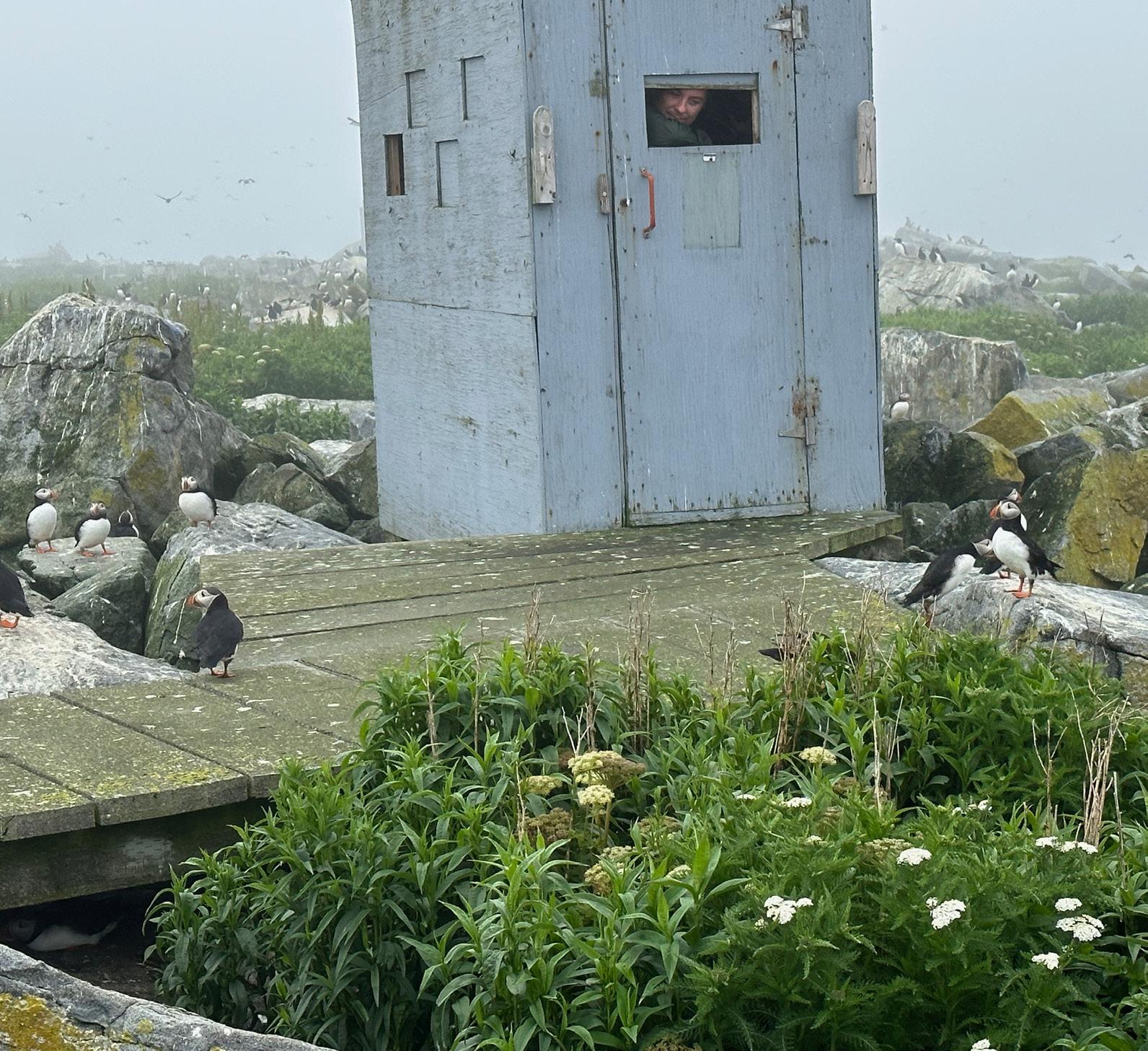

the back of the helmet with a flag on top of it,” Ingersoll says. “One of them laid an egg right by our barbecue so we couldn’t use it.” It took 22 days for the chick to hatch.
Ingersoll, a lifelong Grand Manan resident, knows these birds are also important to the island economy, attracting visitors to local hotels and restaurants. “About the end of June, you start hearing ‘puffin people’ saying, ‘We’ve been to Machias today,’ and you see them watching sunsets at the lighthouses. And they all just love it,” he says.
My excitement over one of Atlantic Canada’s closest puffin encounters builds as we were split into groups of four and
 CAROL PATTERSON
CAROL PATTERSON
CAROL PATTERSON
CAROL PATTERSON
20 NEW BRUNSWICK
Puffins are known as the clowns of the sea because of their colourful bills. The charming migratory birds nest in great numbers on Machias Seal Island every summer.
led to blinds set amongst thousands of flapping, waddling, squawking clown-coloured birds. I would have just over an hour of uninterrupted puffin watching before we’d have to leave.
I quietly raise the slats on our blinds and peek into a seabird world few would ever witness. Football-sized puffins line ridges and march over rocks with tangerine-coloured feet. They leap from ledges and land in a sprawl of outstretched feathers and orange toes.
A few metres from my feet, a clown-like face peers up from amongst the rocks. The orange-and-grey-striped beak holds a tender green leaf. I expected a fish, since puffins can hold several dozen at a time, but this bird seems content amongst the plants. A black-and-red triangle frames its dark eyes. A wrinkle of orange skin at the corner of its mouth punctuates this distinctive facial beauty.
Black-and-white birds dot the landscape, and clouds of sea birds flit over the island. Someone told me puffins sound like chainsaws idling. I don’t hear
the resemblance, but I shiver as their feet padded across the thin roof above me.
I take picture after picture, then put the camera down. I want to remember what it feels like to be here. There’s nothing but the sound of birds and wind as they fly over and into each other. One bird shows his open beak to another puffin, a sign it was too close to coveted territory, much like how people act about this rocky ground.





Join us
June 15 - 16 for a celebration of this historic Mi’kmaq Crossing Place capejourimain.ca





Cape Jourimain
Nature Centre
(506) 538-2220




5039 Route 16, Bayfield, NB, E4M 3Z8



 Photography by Garry Donaldson
Photography by Garry Donaldson
21 NEW BRUNSWICK
Fire circles, frying bannock
Seeing Gros Morne through the eyes of the First Peoples
BY SHELLEY CAMERON-MCCARRON

SUBMITTED
The small zodiac boat pulls up on the beach of isolated Stores Cove, looking up at the Long Range Mountains (Mekapisk in the Mi’kmaw language.) Its passengers are here to see Gros Morne, the spectacular World Heritage Site on Newfoundland’s western coast renowned for its rare glimpse of continental drift. They want to discover Mekapisk through the eyes of Gros Morne’s Indigenous people. The tour, of the same name, offered
through Gros Morne Adventures, (grosmorneadventures.com/indigenoustours) is a hands-on, small-group journey that connects visitors to nature and the first people who inhabited the land, says company co-owner Kristen Hickey. The tour includes learning about life-sustaining plants and animals, cooking bannock over an open fire, and hearing stories about this place in the world. Kristen, who runs the group adventure
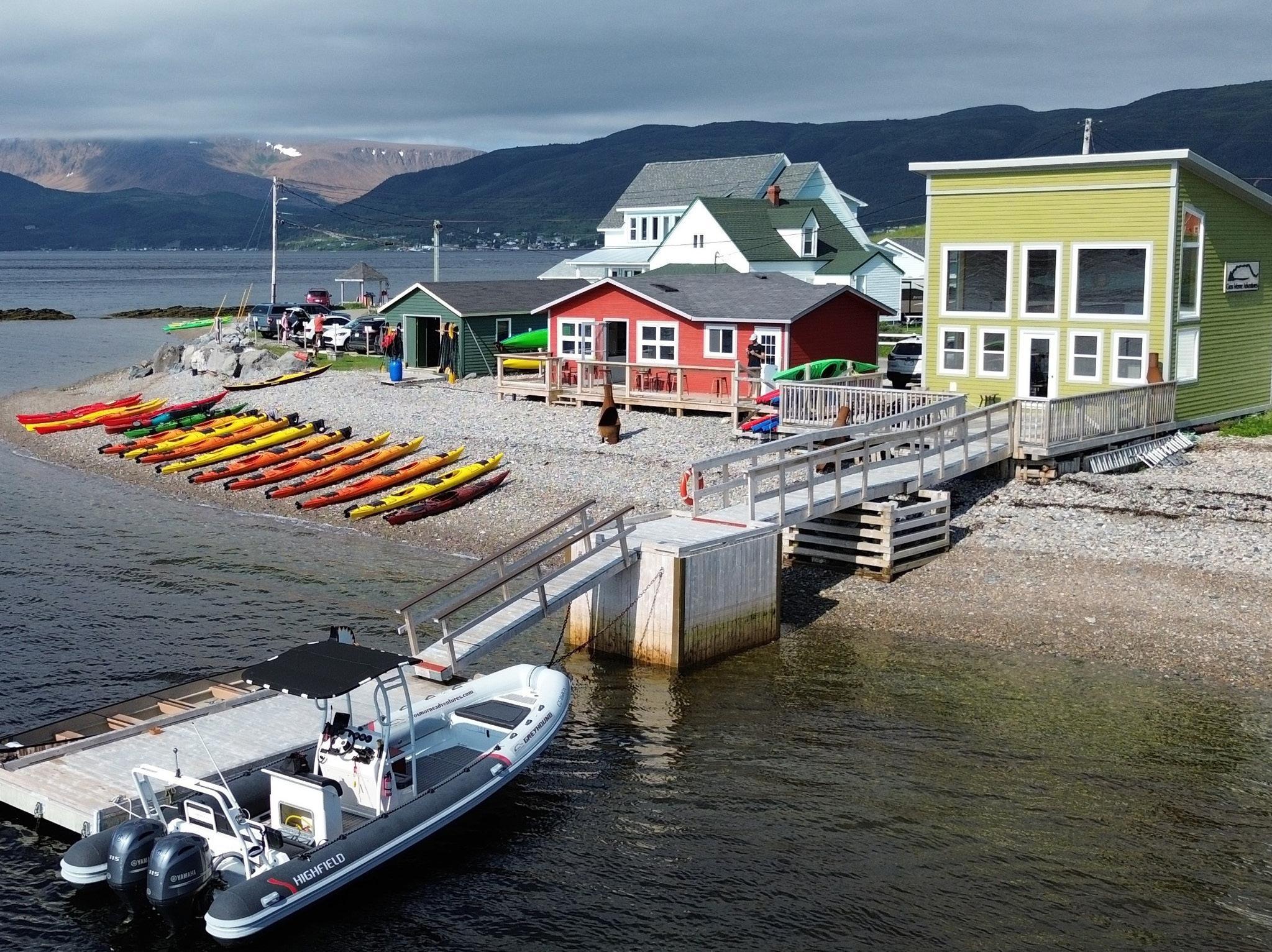
SUBMITTED
Top: A stone arrowhead found on tour. Above: Kayaks on the shore await guests at Gros Morne Adventures.
22 NEWFOUNDLAND AND LABRADOR

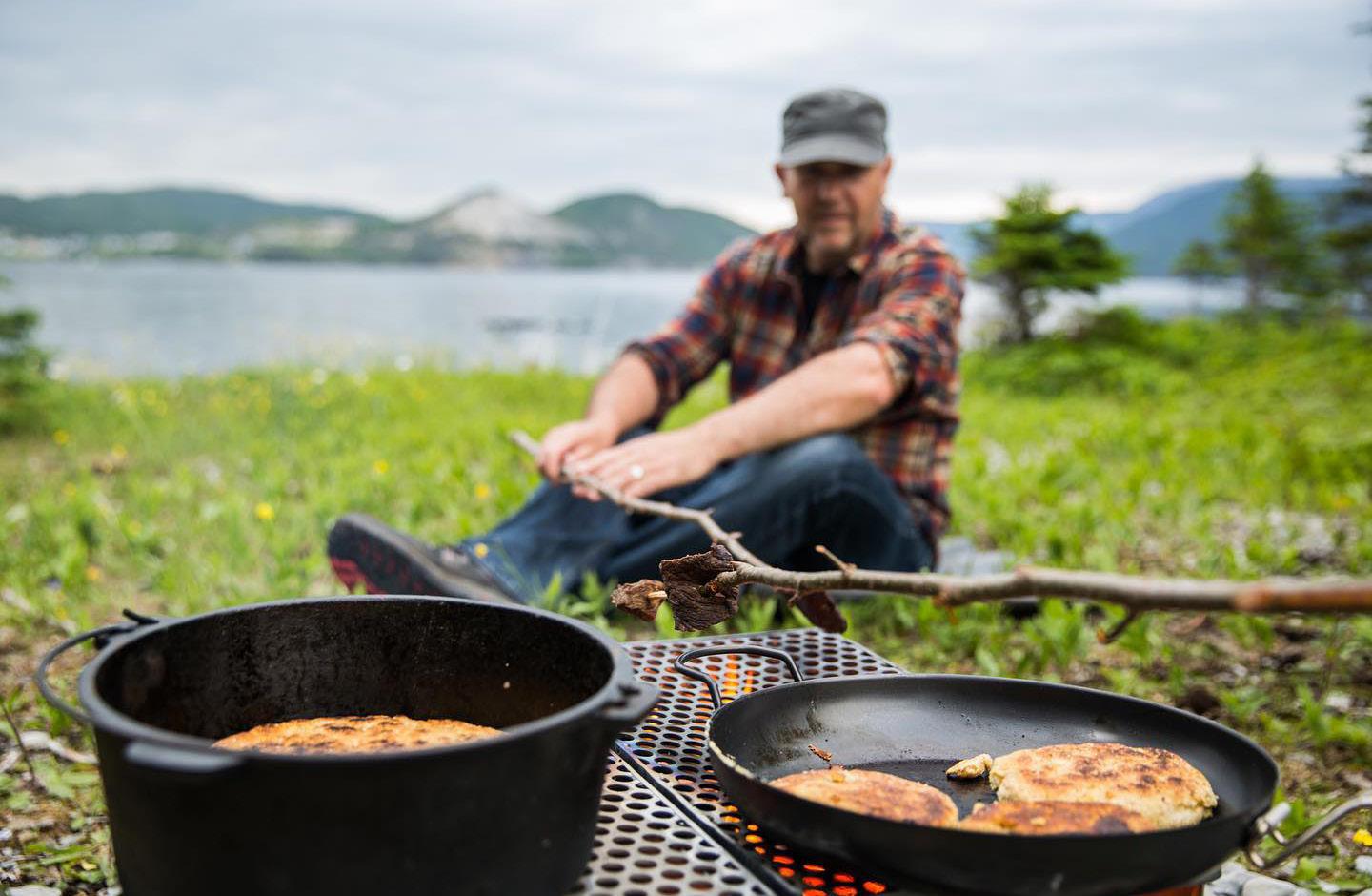
company for active travellers with her partner Robbie Hickey, says their tours blend Newfoundland’s beauty and culture. For Discover Mekapisk, they drew on their own expertise.
“I have a lot of background in paddling, specifically with my father, (expert Mi’kmaw guide) Keith Payne, and I loved Indigenous history in general,” Kristen says. “For me, growing up was going out in the woods … We have our own recipe for bannock, and we are Mi’kmaq. We do a lot of paddling and hiking, we don’t do a lot of experiences simply sitting down and talking.”
They wanted to create an Indigenous experience that supports their family values and aligns with their eco-tourism business offerings. “We have an incredible guide, my father, who is an expert outdoorsman, teacher and professional guide,” she says. “We also have a wonderful supportive network in our community with Parks Canada, Qalipu First Nation Band, and other organizations that are encouraging

experiential tourism and new offerings.”
Guests join Keith Payne on a zodiac ride from the company’s location on the busy Norris Point waterfront in the middle of Gros Morne National Park, to the secluded cove across Bonne Bay, the deep, double-armed fjord.
On the beach across the bay, hidden away behind Shag Cliff, guides lead guests through experiences, including making fire with flint and chert (a type of rock), mixing and frying bannock from Keith’s family recipe, and sharing a fire circle.

Participants look to the land and the sea to understand what attracted the Indigenous peoples here, and how they lived. “We take our time in stimulating all the senses by taking a hike, exploring the geology, using tools, making and tasting food,” Kristen says.
Stores Cove is located on Gros Morne National Park land. The company has a permit to use it and to have a fire there.
Kristen says the experience, suitable for all ages, highlights this area of Bonne Bay. On a walk through the landscape, guests learn about the natural resources.
A highlight is when things get hands-on as participants see if they can light a fire with chert and flint. Kristen says “People get excited,” by this simple but often challenging experience.
The bannock they make is enjoyed with several longtime favourite Newfoundland staples, including bakeapple and partridgeberry (AKA cloudberry and lingonberry) jam-jams, and molasses. They don’t use any plastic during the experience, using instead pine bowls and a cutting board that a local Mi’kmaw woodworker made.
Keith, an outdoorsman who grew up in nearby Rocky Harbour, shares personal stories, and talks about the history of the area and about famous Mi’kmaw guide Mattie Mitchell. He also showcases several items ranging from caribou fur and arrowheads made of chert to Kristen’s grandfather’s eel skin boots.
They offer the three-hour tour once a week in season (June through August), with a group of about four to eight people aboard. Reaction, Kristen says, has been lovely. “People really enjoy it.” Soon, they’re hoping to add a recently-purchased 10-person canoe to the experience.
Kristen observes that offering tours and experiences like this, which draw on the history and heritage of the First Nations, is especially important because so many people in the area are just now discovering what they lost when they grew up without recognition and connection to being Mi’kmaq. “Now, it’s something people want to learn.”
SUBMITTED
SUBMITTED
Above: A zodiac takes guests to Norris Point. Right: Supper cooking over a fire.
Above: Making bannock. Below: Artifacts including eel skin boots and arrowheads.
SUBMITTED
SUBMITTED
23 NEWFOUNDLAND AND LABRADOR
Not just a drive-by
Why you should plan a day trip (or longer) to Cormack
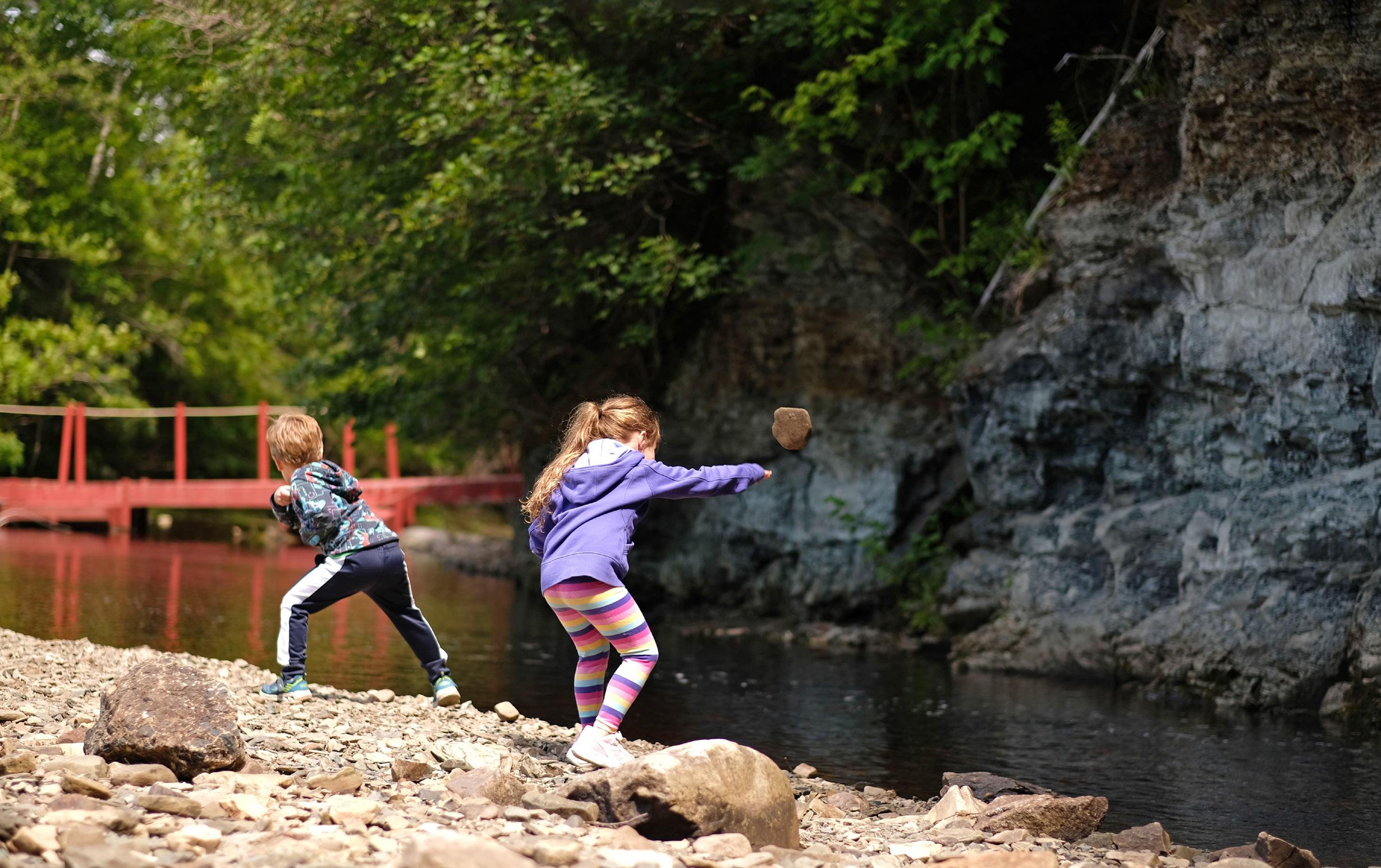 BY SHELLEY CAMERON-MCCARRON
BY SHELLEY CAMERON-MCCARRON
Cormack, a historic farming community that Second World War veterans and their brides settled, is the Newfoundland hidden gem you’ve never heard of but should have on your radar. A 10-minute drive from the Deer Lake airport, Cormack is history-rich and offers Indigenous farm and forage tours, a popular craft brewery, a honeybee operation, parks, and salmon jumping massive falls on their way upriver.
Craft brewer Robert Sutton estimates 250,000 people a year drive by the turnoff to Cormack, a historic farming community near the foothills of the Long Range Mountains in western Newfoundland, on the doorstep of Gros Morne National Park.
It’s where they’ll find a fascinating day trip destination.
“There’s enough to make you turn off and explore,” says Sutton, who grew up here, in one of the province’s largest communities in terms of land mass (there are huge tracts of farmland) and a small population of about 500 people.

High among those reasons is Cormack’s history. Founded following the Second World War, the town had its start under a government program intended to both rejuvenate the island’s declining agricultural industry and be a community for returning war veterans. Originally known
as Upper Humber Land Settlement, war veterans from across the province, together with their wives — including many war brides — pioneered the community in every sense. They each received a shell of a home, 20 hectares of land, and some farming implements, and had to make their way on this forested, wild, rugged land.
Today, their story combines with an up-and-coming tourism experience that makes Cormack, renamed decades ago after Newfoundland explorer William Cormack, an ideal road trip destination.
Take a deep breath
“It’s a quiet community, but there’s a lot happening. You can take a deep breath and relax,” says Sutton, co-owner of Crooked Feeder Brewing Co., a craft brewery and taproom in the former sawmill his family operated for 25 years. The brewery’s “where are you from” map sports pins from Ecuador, Brazil, Africa, Poland, and every continent.
Customers come especially for the sour beers (made with as much local fruit as possible) and for sought-after pours
Cormack is a short 10-minute drive from Deer Lake airport. Below: The Timlin Suite at Rocky Brook Acres.
ROCKY BROOK ACRES
ROCKY BROOK ACRES
24 NEWFOUNDLAND AND LABRADOR
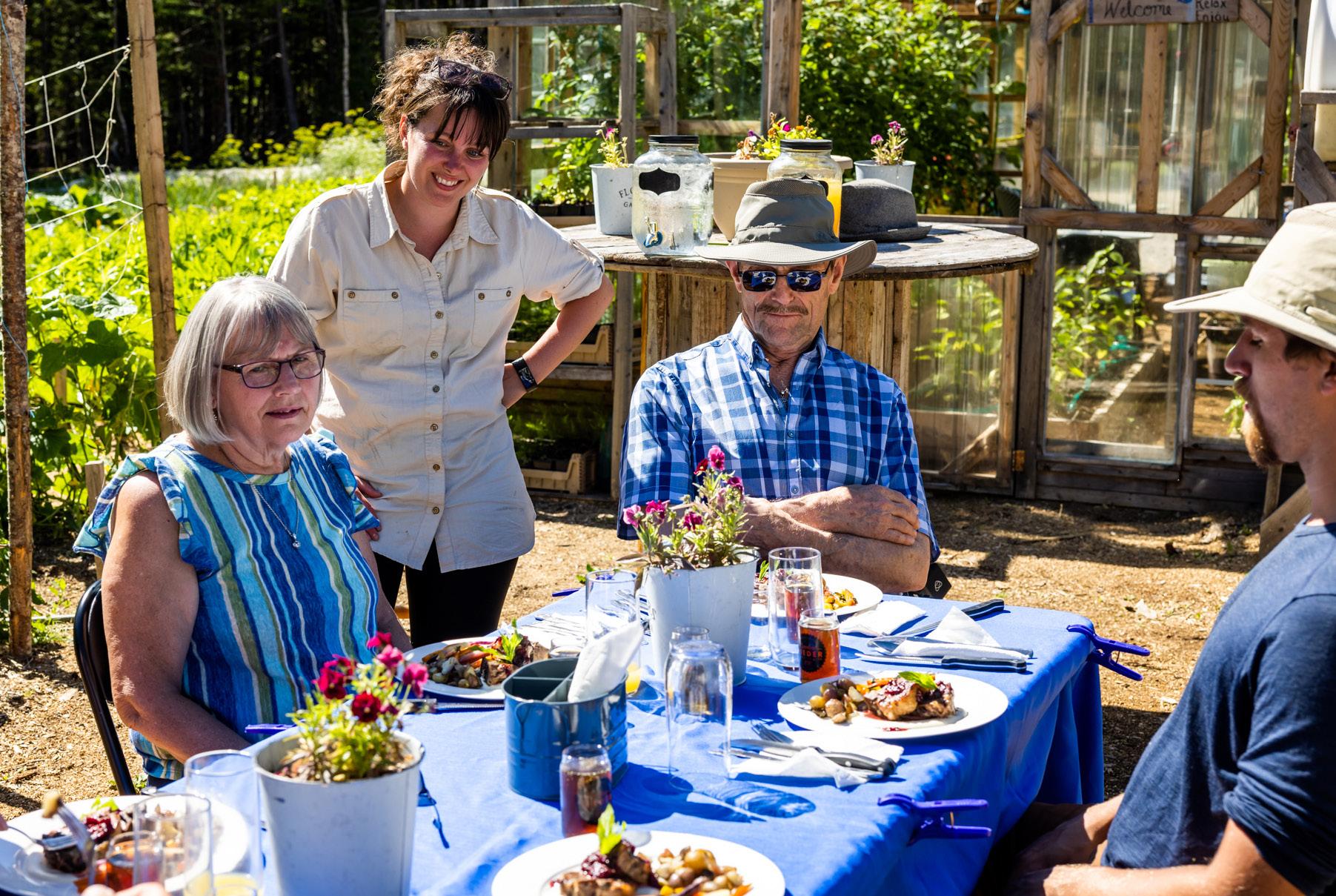
like Good Vibrations, Gros Morne Coffee Porter, and the Texas barbecue menu (pulled pork sandwiches, brisket burgers, rib dinners).
People are seeing the potential of Cormack, a phenomenal winter and snowmobile destination too, with its unique history, modern way of life, accommodations, and things to do, says Sutton.
Even better, there’s a feeling the community is in it together.
“The town’s business community is very supportive,” says Sutton. He points out that one of their beers, Rideout Red, is named after Rideout’s Dairy and Produce Farm, today one of Newfoundland and Labrador’s largest and most well-known farming operations, still run by descendants of the original owners. “They’d do anything in the world for you.”
Sleep like a local
“It’s not your typical Newfoundland town. It’s not on the ocean and properties are not close together,” says Lauralee Ledrew. She and her husband Mark run Upper Humber Settlement (upperhumbersettlement.ca), a FarmStay B&B with farm-to-table breakfasts and peaceful sleeps. If you open a window, you may hear a rooster crowing, geese gobbling in the field. The farmstead has a roadside self-serve “honesty” market (where it’s trusted that people will pay for products), offers natural-grown produce, vegetables, jams and jellies. They offer experiential packages such as an Indigenous Medicine Wheel and Fire Circle Experience and a three-day Live Like a Local offering. Ledrew agrees there are many reasons to turnoff into Cormack, 25 kilometres

from Gros Morne National Park’s entrance, and an hour’s drive from Corner Brook.
Among them is Sir Richard Squires Memorial Provincial Park, “Big Falls,” as locals call it, which offers camping, and a spectacular salmon show. Over 30,000 Atlantic salmon migrate to their spawning grounds on the mighty Humber River, and in July and early August, visitors can watch salmon, returning to their home, jump off the massive falls.
The park makes for a particularly lovely evening drive to watch the sunset, says Roseann Brake, owner of family-run Rocky Brook Acres suites and holiday homes, who grew up in Cormack, the daughter of one of the original veterans.
Coming to Cormack, “gets you in a different place, a different mindset,” she says. Biking the back roads is one of her favourite activities, she says, with some 26 kilometres of intertwined, little travelled,
mostly-dirt roads found off the one main road that runs through Cormack.
Town history is proudly on display in interpretive panels at both the Heritage Centre at Cormack Community Centre and at the local dog and day park.
Cormack Bee Company is a must-stop for a tour and gift shop browse, as is visiting shops like Sea Salt and Twig, and lapping up fresh cream, cheese, butter, and meat from local operators.
Veterans and war brides
Ledrew says many people who visit are interested in, and find connections, to the veterans and their brides. “It just gives you a different side of Newfoundland. The history is so recent,” she says. “You’ll learn how the rough, rugged and harsh conditions have shaped the people of Newfoundland. Our story is in our grandparents’ memory. The community is trying to tell the story and why this place matters, to share the history.”
She says her mother, who grew up here, always talked about Cormack. “There’s a sense of community. It’s belonging. I belong here.”
Brake likes to joke life got brighter in 1966, the year the town received electricity, and the year she was born. Growing up, she never thought anything of hearing dialects from Wales, England, or Scotland, but as she got older, she became interested in the history.
Settlers had it rough, she says, receiving a house, a few basic implements, a barn, and just two usable hectares — the rest they had to clear. “It sounded like a dream, but it was anything but.” From the outset, there were challenges, from trying to grow crops on rocky ground and in Newfoundland’s moody climate, to that lack of electricity until the mid-60s, and many left. Those who stayed learned to carve out a life for themselves.
After working away, Brake moved back in 2010, buying the family business and rebranding it as Rocky Brook Acres. She added war bride suites, and storyboards telling their personal stories.
“I love our history, how hard people had to work to carve out a living,” she says. “Many did stay and did create this community for their sons, daughters, and grandchildren. We have something special and unique to offer.”
Upper Humber Settlement is a FarmStay bed and breakfast located in Cormack.
25 NEWFOUNDLAND AND LABRADOR
UPPER HUMBER SETTLEMENT/ TOM COCHRANE UPPER HUMBER SETTLEMENT/ TOM COCHRANE
Heart of the city
Exploring Water Street in downtown St. John’s
BY DALE DUNLOP

Google “Oldest street in Canada” and the result will likely be Le Petit Champlain in Quebec City, which dates from the city’s founding in 1608. Don’t tell that to natives of St. John’s, N.L., though. They make a good argument that their Water Street is much older. There are apparently historical records documenting a Lower Path in what is now the Water Street area, as far back as 1527. Fishermen from many countries were stopping in St. John’s Harbour during the summer fishing season off the Grand Banks from early in the 16th century. So why doesn’t Water Street get recognition like Le Petit Champlain?
The reason Is simple. Le Petit Champlain looks much as it did hundreds of years ago and Water Street doesn’t. St. John’s was a city built of wood for many centuries, and disastrous fires in 1816, 1846, and 1892 resulted in the street straightening and widening from the two-metre-wide path that existed in the 1500s. With the infilling of the harbour, the front part of Water Street is no longer next to the water, but one street up. Yet, it is indisputably the heart of the city.
With the closure of a four-block stretch to motor vehicle traffic between noon and 10 p.m. during summer, Water Street has become a destination for both tourists and locals. Started as an experiment in 2020 to assist businesses during COVID, the Downtown Pedestrian Mall is now an annual event. The many bars and
 GREG LOCKE
GREG LOCKE
A sculpture commemorating Newfoundland musician Ron Hynes, “the man of a thousand songs.”
GREG LOCKE
GREG LOCKE
A sculpture commemorating Newfoundland musician Ron Hynes, “the man of a thousand songs.”
26 NEWFOUNDLAND AND LABRADOR


restaurants on this stretch set up open air patios, businesses hold sidewalk sales, and the city puts out picnic tables for those who just want to sit and take in the lively and festive atmosphere as the buskers and musicians perform.
Nothing expresses the spirit of the Water Street area better than Morgan MacDonald’s statue A Time. It features legendary Newfoundland singer/songwriter Ron Hynes, comedian Tommy Sexton, and accordion player Wilf Doyle, who represent the unflagging spirit of the city. Set up at the junction of George and Water streets near YellowBelly Brewery to celebrate the designation by the Canadian government of St. John’s as the Cultural Capital of Canada in 2006, it is now one of the most popular meeting places in St. John’s and the start of many pub crawls. Within a few minutes of here, you’ll find more than two dozen pubs, many offering live music and the chance to get “screeched in,” a Newfoundland tradition involving kissing a cod fish and downing a shot of fiery Screech rum. The late chef and food writer Anthony Bourdain

had his screeching in at Christian’s Bar, an institution on George Street.
If you’re not up for “a time” on Water and George streets, there are plenty of other reasons to visit the area. There are many stores selling authentic local souvenirs, of which the Heritage Shop, with year-round locations on Duckworth and Water streets and a seasonal one on Signal Hill, is perhaps the best known. It is a non-profit where all sales proceeds go to the Historic Sites Association of Newfoundland and Labrador. The Murray Premises, dating from 1846, is a national historic site preserving the oldest mercantile buildings related to the fishing industry in the province. Today it houses shops and restaurants, along with the city’s first boutique hotel, which has become so popular that it has expanded twice since opening in 2001.
Perhaps the most unique attraction on Water Street is the Newman Wine Vaults. Dating back to the late 1700s, these are among the oldest structures in St. John’s. As legend has it, in 1679 a vessel travelling from Portugal to London laden with barrels

of port for the Newman company was storm-tossed and ended up wintering in St. John’s harbour. When it did reach London the next spring and the owners sampled the cargo, they found its quality had improved dramatically. Shortly after, it became a tradition for Newman’s to age its port in the wine vaults specifically built for that purpose. The vaults served their purpose for almost 200 years, finally shipping the last barrels to London in 1966.
At the opposite end of Water Street from the Newman Wine Vaults is Harbourside Park, where on Fridays during summer there are free lunchtime concerts. Dog fanciers come to the park to photograph the statues of Newfoundland and Labrador’s two celebrated breeds, the Newfoundland dog and the Labrador Retriever. History buffs will be interested in the plaque marking the spot where Sir Humphrey Gilbert landed in 1583 and claimed Newfoundland for the British crown.
Chances are when you visit St. John’s, the Water Street area will be the start and finish of your day.
Direct flights from



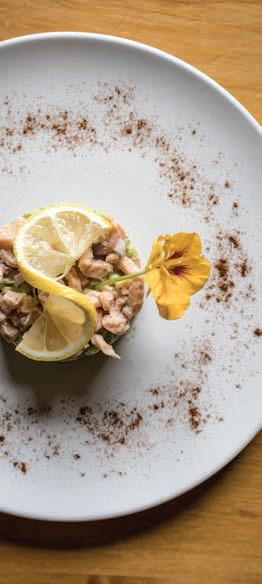
 GREG LOCKE
ST. JOHN’S TOURISM
GREG LOCKE
ST. JOHN’S TOURISM
France, closer than you think... www.airsaintpierre.com
John's, NL 40 mn Halifax, NS 1h30 Montréal 3h
Above, left: Distinctive YellowBelly Brewery anchors Water Street. Right: The Newman Wine Vaults are among the oldest standing structures in St. John’s.
St.
@tourismeSPM 27 NEWFOUNDLAND AND LABRADOR
The Resettlement comes alive
Immerse yourself in a former community from Newfoundland’s past
BY SHELLEY CAMERON-MCCARRON
Brian Avery walks along the seaside in Deer Harbour, a community that doesn’t exist anymore, on Newfoundland’s wild eastern coast.
“It’s a little bit surreal in some ways,” he says. “You’re there and the only sound you hear is a little bird chirping. You’re part of the ecosystem. I think that’s what people like,” says Brian, co-owner of Gypsy Sea Adventures, who leads tours to the resettled former fishing community where he was born and his father grew up. “They like sitting, watching the birds, the pure silence and mindfulness of what the place offers, the nature. And then the stories. Telling the stories allows them to

be immersed in a community of the past.”
It’s a past he’s helping live on. The retired Canadian Coast Guard project manager lived here until age three, in 1967, when the community (it had about 78 families, 250 residents, a general store and a post office) became one of more than 300 shut down across the province.
The Resettlement, running roughly from the 1950s through the 1970s, was a controversial, province-changing policy as government looked to centralize its population, resettling thousands from remote, hard-to-reach settlements.
Now, Brian Avery is one of several tourism operators using these abandoned communities, ghost towns from the past, as a basis for boat tours, vacation homes, even a resort, to help the Resettlement come alive, letting people become part of the history and nostalgia.
Outport delights
Loyola Pomroy started Woody Island Resort on resettled Woody Island in 1989
to give guests a feel for what it might have been like to have lived in one of those communities. She says many ex-residents and their descendants continue to go back to their old communities each summer.
“Most of the old homes have fallen down but many have built cabins on their old homesteads,” she says. “They go back for a few days or weeks’ vacations to show their kids where their ancestors used to live, how they lived, and have them enjoy the many delights that you can get only in an outport community.”
Woody Island, an outport in Placentia Bay, once had a population of around 400. Today guests come to stay overnight, taking in fresh sea air, and enjoying a chance to scan for bald eagles or whales as they steam there from Garden Cove aboard the MV Merasheen.
Once landed, there’s opportunity to explore, walk roads unmaintained for 50 years, visit the cemeteries, visit the resort’s “store loft museum,” row a small boat, enjoy supper offerings like pan-fried haddock and “grandmother’s favourite” cottage pudding, or simply sit and enjoy the spectacular scenery.
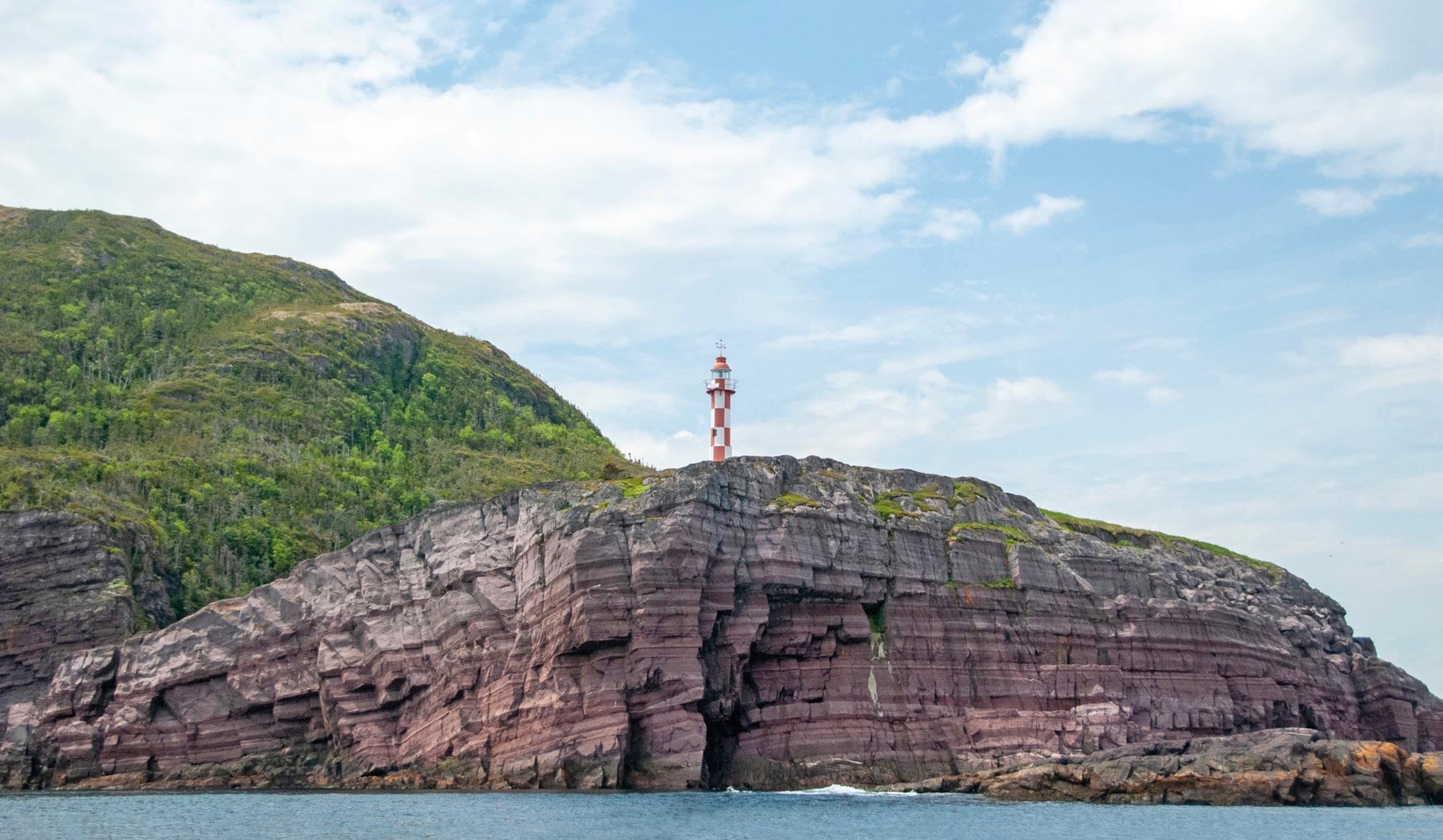 GYPSY SEA ADVENTURES
GYPSY SEA ADVENTURES
28 NEWFOUNDLAND AND LABRADOR
GYPSY SEA ADVENTURES
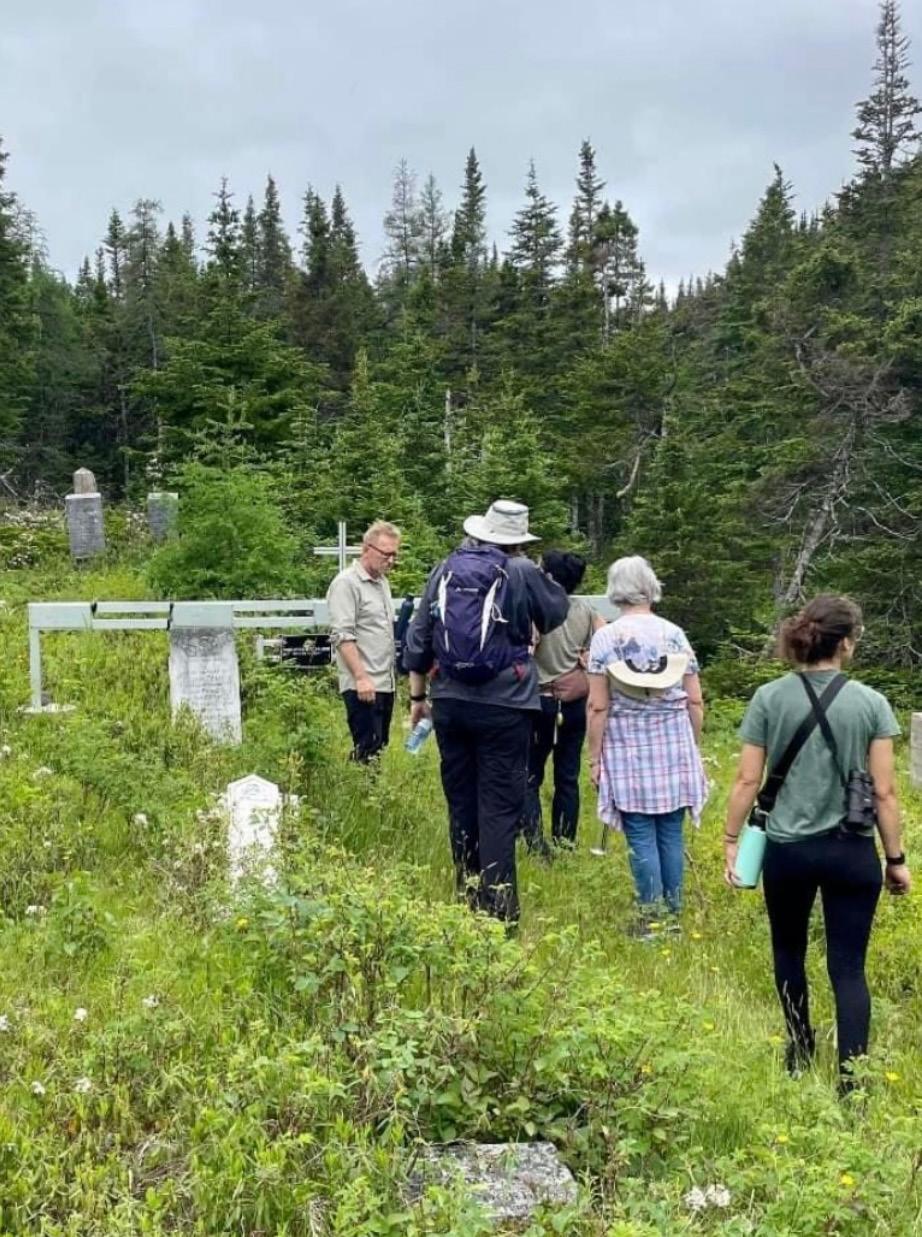
Best years of his life
Brian Avery, who grew up in Hickman’s Harbour on Random Island, says he wouldn’t have thought much about Deer Harbour if it wasn’t for his father, who had the chance to return in 1998 after retiring from fishing. Spending time there and listening to his stories intrigued him.
“He spent the best years of his life in the community of Deer Harbour,” he says. “This was a significant time for Newfoundland and Labrador. We lost some of our identity, of who we were. As older generations pass, so too do the stories and a way of life will be gone. I watched my dad spend time in Deer Harbour … I knew what Deer Harbour meant to him. I kind of created this business so that I would spend my time here and get that same fulfillment.”
In building the product, he brought in a folklore consultant. He researched books and photos. “More importantly, I had Dad’s stories.”
It was a simpler life. “Conversation around the dinner table was paramount,” he says. “Kids were going out on the beach playing, helping parents with chores.”
After the Resettlement, life changed. Adults had cars, nightclubs and many other things they never had before. And communities couldn’t always stay together.


“With housing, everyone couldn’t move to the same community and sometimes work dictated where people went,” Brian explains. “In Newfoundland, every little cove was a community, and they’d often know the neighbouring communities. It was a very significant era in our time.”
A sense of belonging
Brian wanted to bring guests back to a time when folks sat around a radio. He wanted people to think what it would be like to live there, walking in the footsteps of residents in this pristine environment where puffins, whales, otters, eagles, fox, and caribou are spotted. He shares old pictures, books and literature so visitors can feel that sense of belonging “and look within themselves and find their own sense of belonging.
“Today, you get wrapped up in everyone else’s life,” he says. “You start your day on your phone looking at Facebook. The thing I want for people to do is to think about what it would have been like to live there.”
On the two-day tour, guests meet in Hickman’s Harbour, a modern fishing community that provides an example of what Deer Harbour could be like today if it had survived.
Passengers jump aboard a zodiac or larger boat, depending on tour size,
and steam 1.5 hours past cliffs and rock formations. They go around Eastern Head Lighthouse, which gives a first hint that people lived here, before arriving in the beautiful bowl-shared harbour, home now to a scattering of painted solar cabins.
Guests have a brief history before settling in, with maybe a campfire and some chili. The next day, Brian leads a walking tour, replete with community history.
He works to replicate activities, including taking guests to where residents used to picnic, so they can do the same. “So that they really have that sense of belonging.”
The tour just finished its third year, but it’s something he’s been thinking about for more than a decade. “I put a lot of thought into what would work. I wanted to be sure to get it right.”
Now, he’s planning a five-day option with different itineraries: a lighthouse tour, a resettlement tour to nearby communities, a day fishing, a reflection day, and time to kayak and hike.
“We want people to be truly relaxed and to think about and to feel all about what Deer Harbour brings,” he says. “For me personally, because I am a romantic, in some ways I want to share what my dad shared with me.”
Website: gypsyseaadventures.com
Above: Visitors explore an abandoned graveyard. Right: Deer Harbour today and (inset) as it was before the Resettlement.
29 NEWFOUNDLAND AND LABRADOR
PHOTOS: GYPSY SEA ADVENTURES
Art by the sea
Visiting Newfoundland’s Eastport Peninsula
STORY AND PHOTOGRAPHY BY SANDRA PHINNEY
On a recent visit to Newfoundland, my sister and I veer off the Trans-Canada Highway close to Glovertown, about a three-hour drive from St. John’s, on to Route 310 and followed our nose into the Eastport Peninsula.
The journey feels mystical. Beyond the northeastern edge of Terra Nova National Park, many ponds and lakes flank the road.
Twenty minutes later, we’re in Eastport Peninsula, home to a handful of outports with a combined population of approximately 500.
First stop is the Beaches Arts and Heritage Centre (beachesheritagecentre. ca), smack in the middle of the village of Eastport. The quality and scope of crafts and fine art on display is impressive, as

is the building’s 200-seat theatre. It hops all summer with concerts, dramatic and musical performances, and festivals.
We’ve booked an art class with Brenda Matchim, a renowned portrait artist. Brenda gives Art in the Park lessons at Terra Nova during summer. Off-season, she does them in the lower level of Chucky’s Seafood and Wild Game Restaurant (happyadventureinn.com), part of the family business in the village of Happy Adventure.
Brenda grew up in Hong Kong, where she became an artist. In 1973, she immigrated to Canada with her family. Seven years later, she met the love of her life from Eastport Peninsula. They married and started a family, plus opened the Happy Valley Inn, which featured Chucky’s. Now, her family operates both while Brenda paints and teaches art lessons.
Carmen and I have a splendid lesson, each conjuring a coastal scene on a 16-by-24-inch canvas, replete with a lighthouse, boulders, and crashing waves. Working up an appetite, we slip upstairs to the dining room for dinner. As the sun set over the harbour, we eat cod tongues,


30 NEWFOUNDLAND AND LABRADOR
Above: Brenda Matchim demonstrates how to make waves during an art lesson. Right: An artisan at work making felted codfish at House of Diamonds.
seal flipper pie, a rack of ribs, and a big fat moose burger. Carmen doesn’t have room for dessert, but I somehow have no trouble putting away some homemade blueberry ice cream.
We fit in another visit to the peninsula a week later and hike on the Damnanable Trail: a network of paths that the first settlers blazed through the boreal forest and along the coastal headlands. Our trail starts at a beach less than a 30-second drive from the highway outside of Eastport. It warms my heart to see a wide rubber mat providing wheelchair access from the parking lot to the beach.
That evening, we join Time in the Hall Dancers in the Society of United Fishermen (SUF) hall. I’m 79 and relatively fit, but after a demanding square dance set called Running the Goat which can go on for as long as 45 minutes and is for four couples in a group, I’m exhausted. And I’m merely a spectator!
Carmen accepts an invitation to dance the Virginia Reel, while I excuse myself to take photos, resisting the urge to trip the light fantastic.
During a break, I talk with many dancers, including Mabel Hunter, the spry senior who started the group. Mabel recalls years past, attending traditional square dances called “a Time” in community halls. “There always was lots of food,” she says. “We square danced for hours, and everyone had a time.” Although they are mostly in their ‘60s, ‘70s, and ‘80s, they welcome visitors of any age.
I yearn to go back to this region.

Glovertown
This town’s claim to fame is the House of Diamonds Arts Centre. (thediamondhouse.ca)
During our visit, a dozen artists are present, doing crafts ranging from knitting and rug hooking to photography and felting. It’s pure pleasure chatting with them over a coffee.
Bonus: we meet the chairman of the centre — Kevin Blackmore, a local legend known as the lead star of the former musical and comedy ensemble Buddy Wasisname and the Other Fellers. Now that Kevin’s retired after 37 years on the road, he and a team of volunteers arrange several events at the centre, from makers markets to talks, soirées, and musical events.
Soon to be a reason to visit Glovertown is the Old Mill — a haunting, long-abandoned site which rises above the tree line, with a photographer’s wow factor of 10 out of 10. In 1921, workers began building a 35-metre-tall and 400-metrelong pulp mill for a hydro plant planned for metres away on the Terra Nova River. Anticipating the creation of hundreds of jobs, the province built houses, schools, and a medical centre. Then the company leading the construction ran into financing difficulties and everything came to an abrupt halt.
Now, efforts are underway to preserve the old mill and offer tours.


 Square dancers having a time in the SUF Hall.
Kevin Blackmore at House of Diamonds.
Square dancers having a time in the SUF Hall.
Kevin Blackmore at House of Diamonds.
31 NEWFOUNDLAND AND LABRADOR
The Old Mill is a photographer’s delight.

The Urban Village on the Harbour
A day in downtown Dartmouth
STORY AND PHOTOGRAPHY BY DARCY RHYNO
Apleasant ferry ride across the harbour from Halifax, the 20 city blocks that make up downtown Dartmouth have a small-town feel. “We think of ourselves as an urban village beside the harbour,” says Tim Rissesco, CEO of the Downtown Dartmouth Business Commission. “We’re one distinct community on a more human scale where independence and small businesses thrive.”
The 15-minute crossing to Alderney Landing Ferry Terminal is Nova Scotia’s oldest saltwater ferry ride, and possibly the second oldest in the world, and is still just $2.75 per adult. Joseph McAllister, marketing and communications coordinator at Alderney Landing, considers the Alderney Landing area a community centre. “We take pride in being an accessible space for people to come together for large-scale events, art exhibitions, theatre productions, and community markets,” he says.
The Alderney Landing Farmers Market runs three days weekly: Saturday mornings for the farmers market, Sundays for the
artisan market, and Wednesday afternoons for the full market. Some downtown businesses such as New Scotland Brewing, Humble Pie Kitchen and Two If By Sea café (TIBS, as the locals call it) got their starts at the market.
On non-market days, hit TIBS for an expertly-pulled latte. The croissants are known across the city as the real thing; big, buttery buns that pull apart like folds of soft fabric. For French authenticity, go for the plain croissant, although the pain au chocolat and almond croissants are tempting. Scones, muffins, and cookies add to the variety, as do caffeine-free drinks such as hot apple cider.
After a leisurely morning coffee, browse the neighbourhood. There’s a sense of nostalgia driving much of the activity in downtown Dartmouth, where second-hand shops specialize in things like vinyl at Renegade Records and Taz Records.
Vintage clothing is the specialty at Room 152 Clothing Boutique.
Independents like the Trainyard General

to explore.
32 NOVA SCOTIA
Downtown Dartmouth is highly walkable, with plenty of interesting shops and restaurants
Store, Dart Gallery, and Kept prioritize local products like Nova Scotian art, giftware, and cards. Since the 1960s, Dartmouthians have been buying and repairing their shoes at Hiltz’s Shoe Repair. Today, the grandson of the original owner still operates the shop.
Even as long-running businesses continue to serve the downtown, change is afoot. “In recent years, we’ve seen many new businesses thriving,” says Bea MacGregor, Alderney Landing’s CEO. “Major developments are bringing new residents into our community.” New towers are popping up around the downtown on land claimed from the harbour shoreline.
Change is most obvious in the dining scene. You can get an energy boost with an invigorating juice or smoothie at Sprout Therapy. Nationally celebrated chef Renée Lavallée at The Canteen has appeared as a judge and competitor on Top Chef Canada Stop in for substantial fare like mussels and frites. On Sundays, a sweet and salty plate of French toast and bacon at the Side Hustle Snack Bar makes a memorable brunch.
In the afternoon, treat yourself at Shaydz

Above: Cocktail time at Dear Friend bar. Right: Get together with friends for unique fun at Timber Lounge Axe Throwing.
CI-Saltscape FT Guide 2023 OUT.pdf 3/1/2023 5:31:51 PM
Beauty Salon or Interlude Spa. Visit Quaker House, one of the city’s oldest buildings with links to 18th century New England and the greatest of all whaling stories, Moby Dick. Walk to Sullivan’s Pond, a quiet refuge where ducks often paddle. The pond is part of the historic Shubenacadie Canal that links downtown Dartmouth to the Bay of Fundy on the west side of Nova Scotia. This waterway is undergoing renovations with

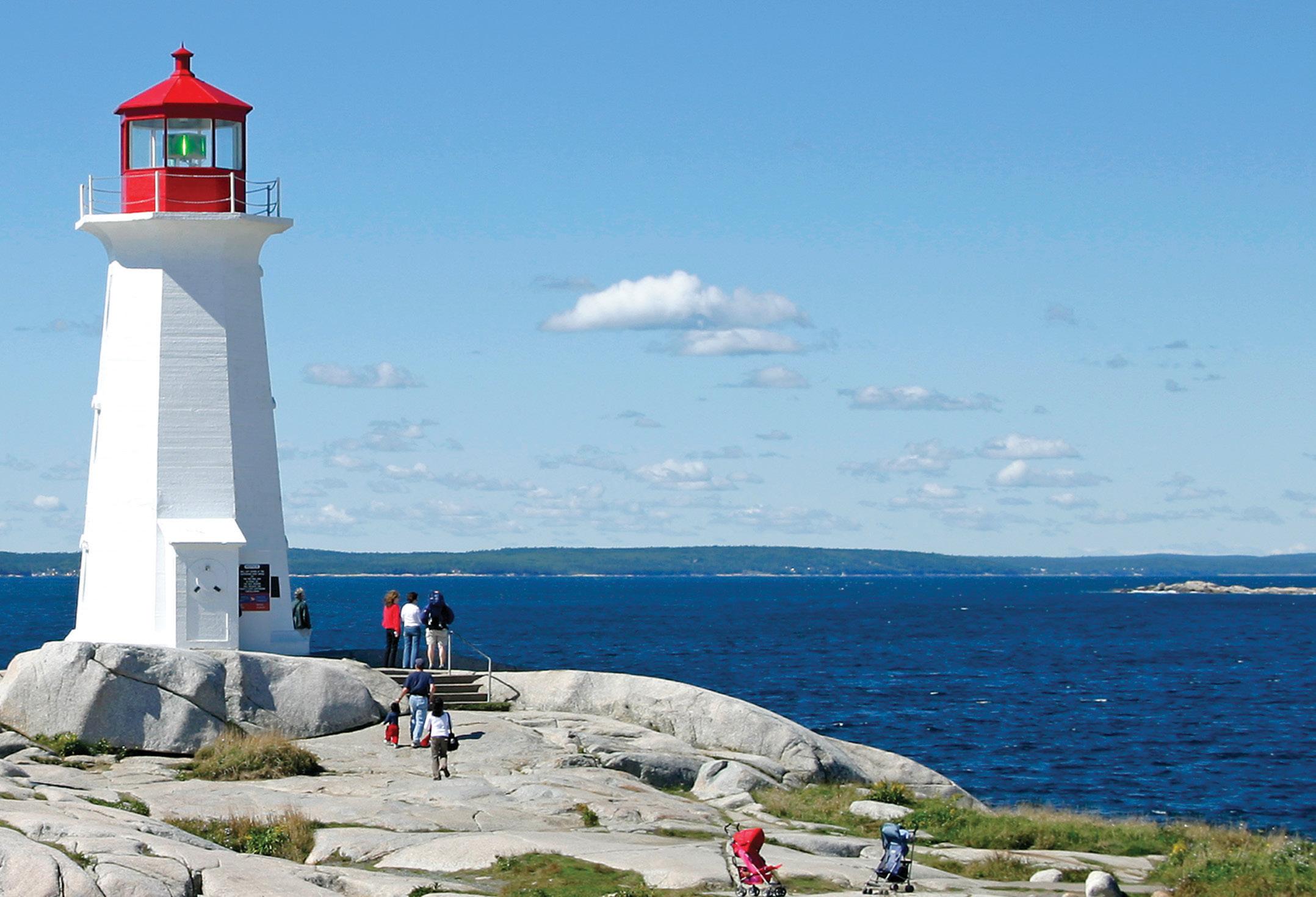


C M Y CM MY CY CMY K
33 NOVA SCOTIA
Africville Museum


Monday-Friday 10am-4pm



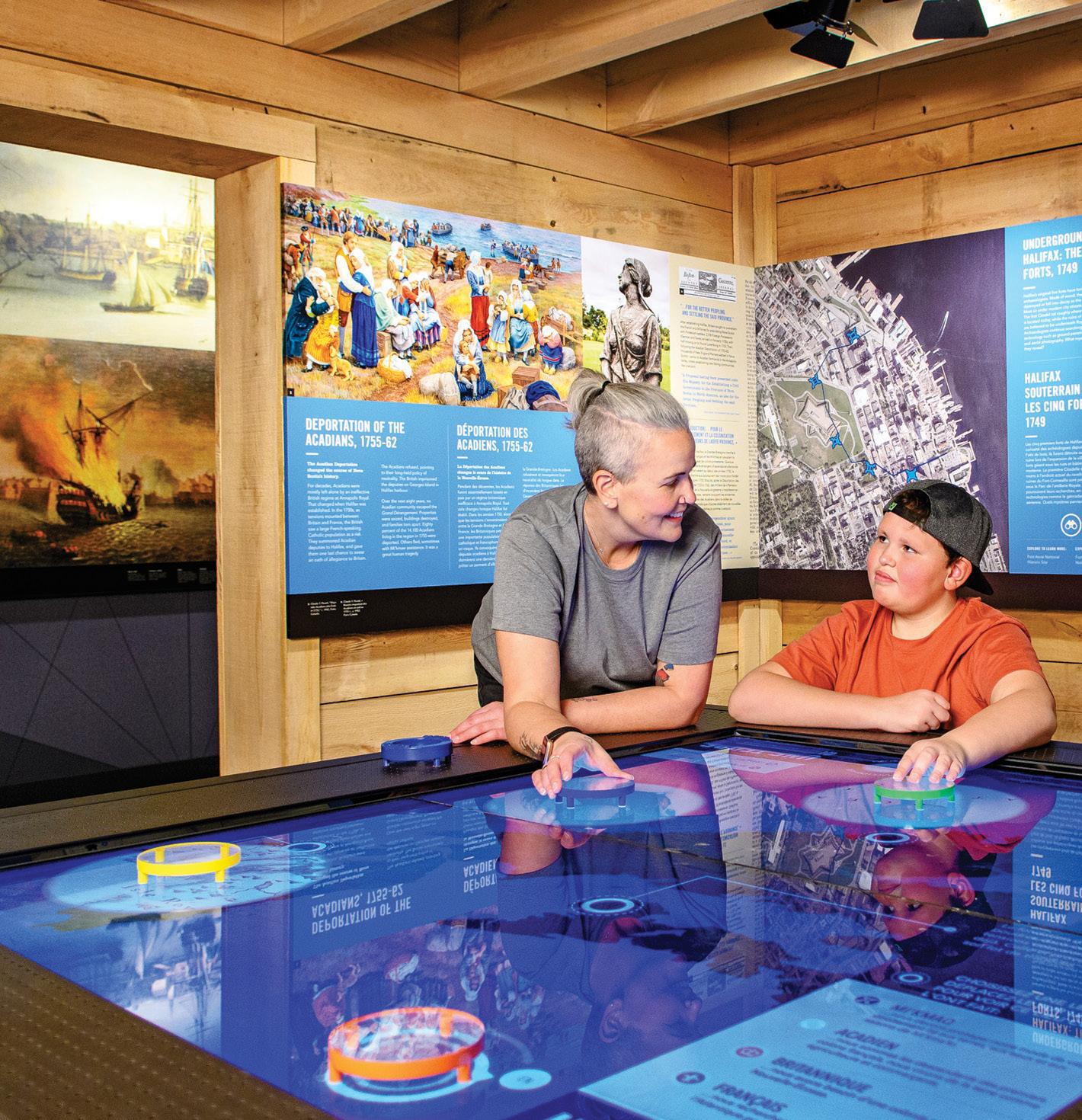
Crispy Tempura Maitake
Mushroom Risotto
From Oxalis Restaurant in downtown Dartmouth Serves 4
Ingredients
Mushroom Risotto
7 oz (200 g) arborio rice
4 ¼ cups (1 L) vegetable or chicken stock
7/8 cup (200 mL) cooking wine
2 shallots
2 tbs (30 mL) olive oil thyme to taste
3 garlic cloves,
12 oz (350 g) Parmesan, finely grated
2 tbs (30 mL) butter
3 oz (80 g) whipped cream
2 tbs (30 mL) truffle paste
5 ¼ oz (150g) wild mushroom mix
Tempura Maitake
4 pieces Maitake mushroom
1 cup (250 mL) all-purpose flour
1 cup (250 mL) ice cold sparkling water
egg
½ tsp (2.5 mL) baking powder pinch of salt vegetable oil for frying
Method
Bring stock to a simmer. Sauté shallots and garlic in olive oil until translucent. Add rice and toast for 1-2 minutes. Deglaze the pan with cooking wine, stirring until absorbed. Gradually add stock, incorporating thyme during cooking. In a separate pan, sauté wild mushroom mix. Add sautéed mushrooms to risotto. Finish risotto by adding parmesan, butter, whipped cream, and truffle paste. Season to taste.
Prepare tempura batter: Mix flour, sparkling water, egg, baking powder, and salt. Dip maitake mushrooms in batter and fry in a deep pot of oil at 350-375F (175-190C) until golden and crispy (2-3minutes). Remove from the pot, drain on paper towels, sprinkle with salt. Spoon risotto onto plates, top with a crispy mushroom. Garnish with additional parmesan.
We’re glad you’re here. Come visit us!
34 NOVA SCOTIA
the addition of ladders to help fish return to traditional waters.
On to dinner. Oxalis offers an elevated European farm-to-table dining experience. Dinner can preface a live performance at Eastern Front Theatre. Those who enjoy a dinner that extends into a full evening at one location will enjoy Battery Park Beer Bar and Eatery, but get there early, because this place fills almost every night of the week.
“Dear Friend is known as one of the top bars in Canada for their cocktails,” says Rissesco. “I also like the patio at Celtic Corner Public House that has a great view of the harbour. The microbreweries and cideries like Brightwood, New Scotland, and Lake City are all favourites.”
For a unique evening out, drop into Timber Lounge Axe Throwing, created by seven-time log rolling world champion, Darren Hudson. For $30 per person, friends can get together for a fun evening of chucking axes, with assistance and tips from an experienced staffer. Spectators are welcome.





 DHA Motorcycle Rally June 2024
DHA Motorcycle Rally June 2024
TIME EVENTS
KENTVILLE,
www.kentville.ca go big in a small town Start planning your awesome visit now!
Kentville Multicultural Festival (TBA)
BIG
SMALL TOWN VIBES
NOVA SCOTIA
#WeAreKentville
Kentville Mural Festival July 2024
35 NOVA SCOTIA
Colourful murals, retro shops, and great food options help give downtown Dartmouth its flavour.
Three days on Isle Madame
Escape to a tiny archipelago off Cape Breton Island’s southwest coast
STORY AND PHOTOGRAPHY BY SHELLEY CAMERON-MCCARRON
It’s a summer Saturday night in D’Escousse, N.S., and I’m sitting among musical legends. Johnny Cash is here, with his full head of dark hair. A young Bob Dylan has his harmonica and guitar. And, of course, John, Paul, George, and Ringo hold pride of place.
I gaze upon framed photos of the Fab Four, who headline an eclectic collection of Beatles and music memorabilia splashed across the cranberry-coloured walls of the Groundswell Pub and Inn, (thegroundswell. ca) an almost one-stop tourism shop that is breathing new life into the community’s former general store.
Joy at an easy pace
Tiny, quiet, and beautiful, Isle Madame is a place with big experiences including renting kayaks to paddle sheltered inlets, cycling
quiet coastal shores, and driving through a landscape studded with fishing villages. A 30-minute drive from the Canso Causeway, Isle Madame doesn’t see the crowds jam its popular spots the way the Cabot Trail and Peggy’s Cove do.
Seals bob in the vivid blue Atlantic, locals invite you into conversation, birdwatching abounds (especially osprey), everything is close, and you feel yourself savouring these surprise moments, like here at the Groundswell where second-floor inn rooms are named for Beatles tunes (Penny Lane, Strawberry Fields) and conversation and music are welcome dinner companions. The pub’s stage and a back deck host epic concerts. People sometimes spot dolphins, following the mackerel, by the island in the harbour, visible just past the apple tree and fishing boats, near where
Groundswell offers watersports rentals. Matt Johnson, co-owner with wife Colleen, say they visited D’Escousse with thoughts of an oyster farm. Plans changed (they have backgrounds in food and beverage, business, and music) and in six years, they’ve never looked back, drawn to the area by its people, pristine waters, slow pace, and the fact their kids can roam free.
Do nothing or everything
The area is a hidden gem, agrees fellow Isle Madame resident and business owner Ingo Vollmer, whose family has run Vollmer’s Island Paradise (vipilodge.com) for more than 30 years on Janvrin Island, one of several little islands off the larger island. They have six log cottages, a sauna, meditation path, clubhouse and a beach pavilion scattered through forest and shore.

There is tranquil beauty and lovely views everywhere you look on Isle Madame.
36 NOVA SCOTIA

The appeal, he says, is doing nothing (very popular) or as much as guests want — a beach campfire, kayaking, yoga, spotting seals and eagles, and for certified divers, opportunity to see shipwreck sites.
Vollmer says his late father opened the tourism lodge, after the family emigrated from Germany, building it “how he wanted to spend a holiday in Canada as a German.”
Day One
Arichat, Isle Madame’s largest village, is home to the Clairestone, (theclairestoneinn. com) a 17-room drive-up motel and boutique inn with spacious rooms and heaps of hospitality. A special feature is the Clairestone Chronicle, the inn’s clever four-page broadsheet, offering itinerary and photo-op suggestions, history tidbits, and even the owner’s mother’s traditional Acadian chicken fricot recipe.
The ocean-facing Clairestone, with a front verandah suited for daydreaming, is the type of place that can fill your tourist

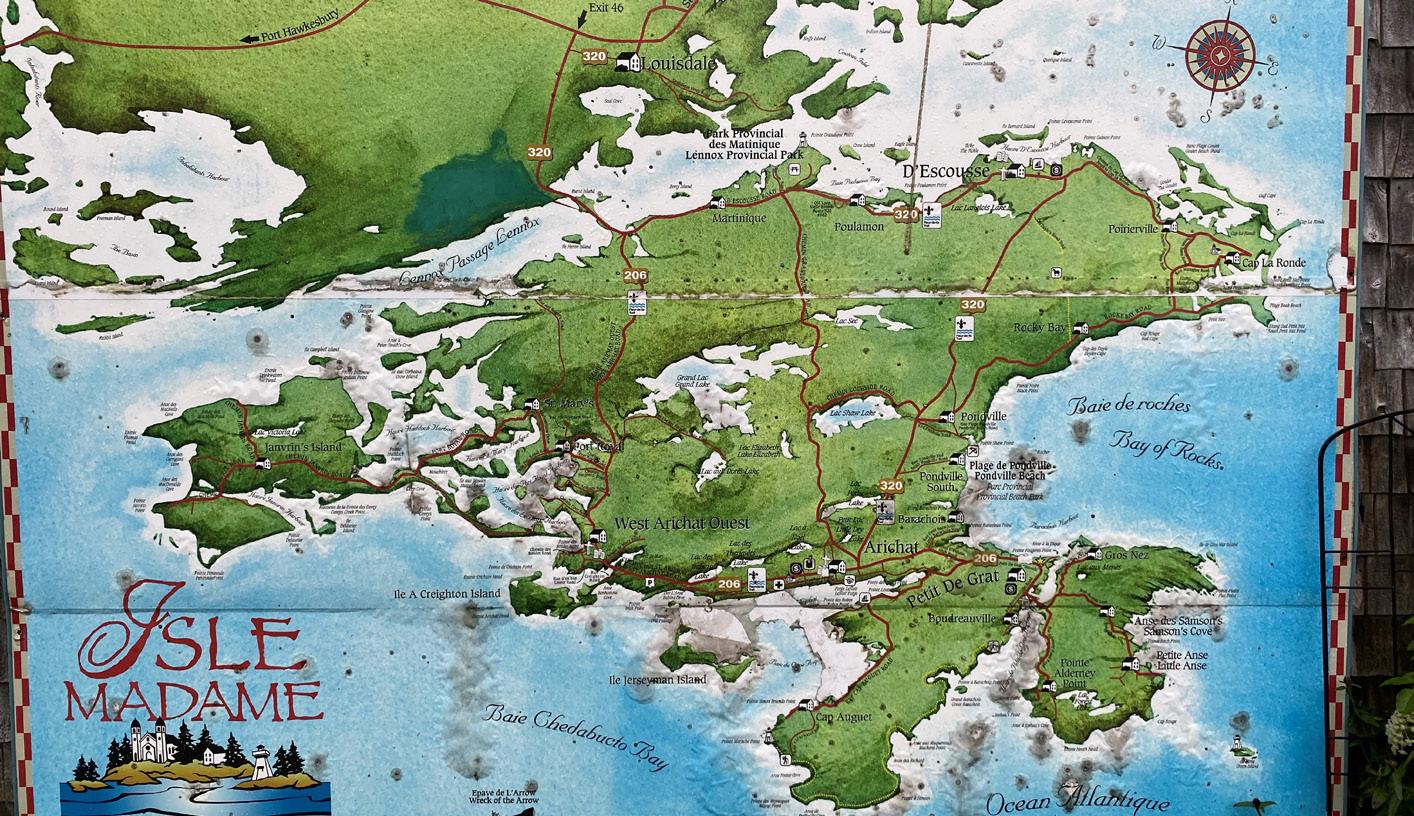
map with insider favourites. It offers cozy relaxation nooks, such as in the plant-filled lobby with its inviting piano, or outdoors under twinkling firepit lights.
Come evening, drive the narrow rabbit warren that’s the twisting road by Cape Auguet Bay to Marache Point Lighthouse, surrounded by ocean. You can drive most
of the way, then walk a rugged seaside path lined with Queen Anne’s lace in high summer, where dogwalkers and photographers may stop to chat.
Day Two
Breakfast is included at the Clairestone (it’s great) but do save room for a latté and
 Marache Point Lighthouse.
A bonfire pit at Clairestone.
Marache Point Lighthouse.
A bonfire pit at Clairestone.
37 NOVA SCOTIA
Historic map on the barn at Groundswell.


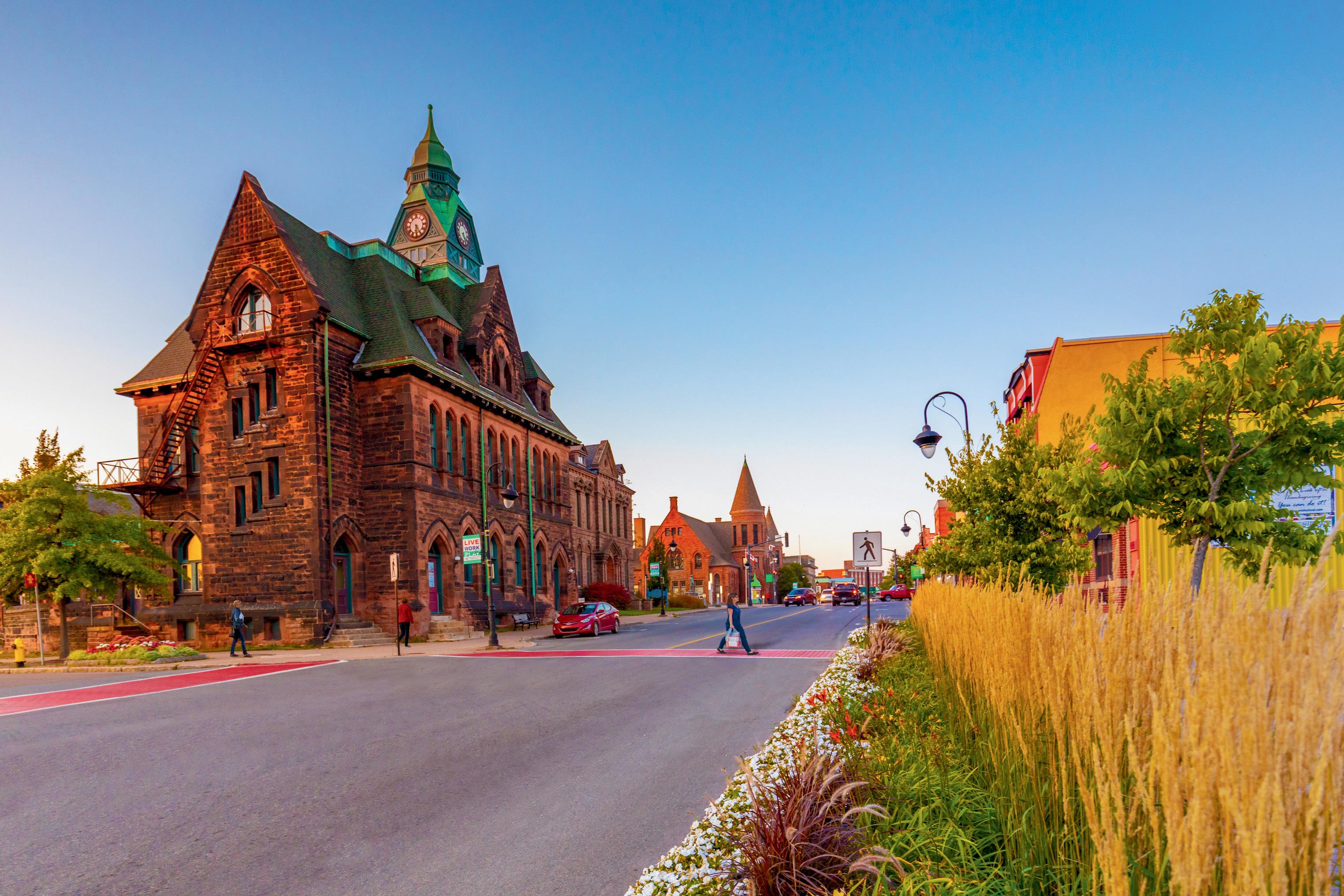



www.amherst.ca Historic downtown Amherst, Nova Scotia #SeeWhyWeLoveIt Dayle’s Grand Market
LeNoir Forge museum in Arichat.
38 NOVA SCOTIA
Interpretive panels at La Goélette à Pépé.
stock up on (addictively good) scones and jams at neighbouring La Goélette à Pépé (lagoeletteapepe.ca), a coffee and gift shop where interpretive storyboards share great information on Isle Madame’s Acadian history and culture. This is also a place where faithful regulars are known to pull visitors into the banter.
Visit waterfront Le Noir Forge, a restored French stone blacksmith shop turned museum, before road-tripping through picturesque Petit-de-Gras and Little Anse, often compared to Newfoundland with its houses clustered on hills by the ocean. Roads run, seemingly, without reason, sometimes suddenly ending at someone’s house. The area’s ideal to find a front row seat to just sit and watch waves crash.
Nearby, Pondville Beach Provincial Park brings the bliss along a one-kilometre sandy shore. The coastal walk continues to Back Beach, reachable only on foot.
End the day with dinner or overnight at the Groundswell. Sunsets on the north side are exquisite.
Day Three
Set your sights on Lennox Passage Provincial Park, another favourite local hangout with two kilometres of walking trails, a lighthouse, a rocky explorer’s beach, and great birding.
Finish with a flourish by renting kayaks or bikes from a local operator for one last sail through island beauty.


















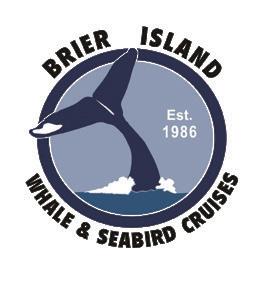









OPENING JUNE 28! info@splashadventure.ca | 902-865-1025 | splashadventure.ca Follow us F atlanticsplashadventure Brier Island Whale and Seabird Cruises PO Box 1199 223 Water St., Westport, Brier Island, Nova Scotia B0V 1H0 1-800-656-3660 www.brierislandwhalewatch.com Brier Island’s Original and #1 Chosen Whale Watch Dedicated to Research & Education Since 1986! & Grandview Dining Room
39 NOVA SCOTIA
One of the log cabins at Vollmer’s Island Paradise, West Arichat.
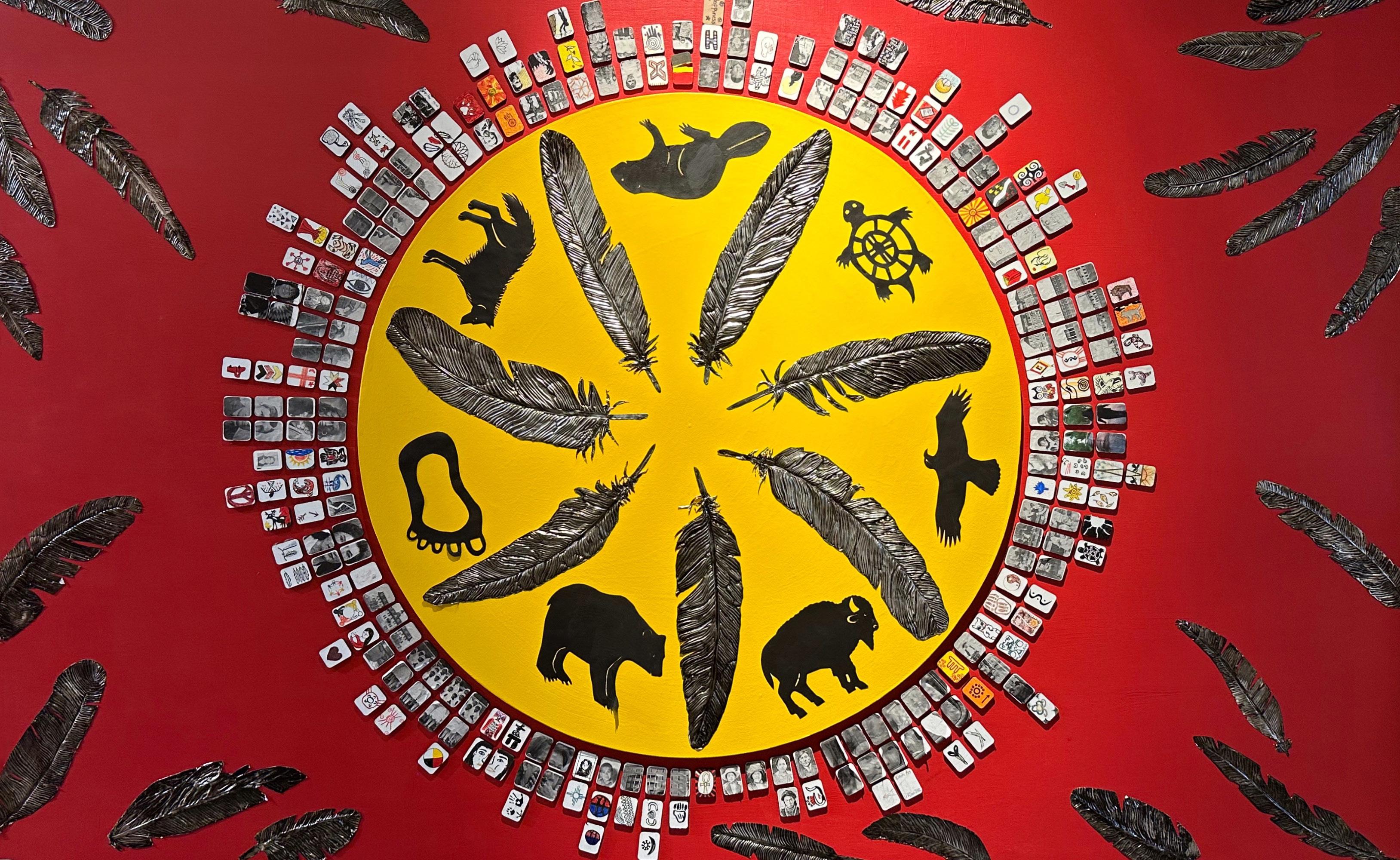
Kids add colour
Indigenous history, art, and culture in Millbrook
STORY AND PHOTOGRAPHY BY DARCY RHYNO
Awork of boldly coloured art catches the eye. From a distance, it looks like a yellow wheel with heavy treads and seven feathers for spokes. Between the feathers, silhouettes of iconic North American animals stand proud: wolf, beaver, bear, bison, and eagle. The components appear embossed on a blood-red background with more feathers scattered about. The whole work is set in a simple, black frame about 1.5 metres wide by a metre high. It’s one of several bright works hanging in the Millbrook Cultural Centre just outside Truro, N.S.
Looking closer, the feathers are metal. The treads are built from hundreds of tiny tiles stacked two, three, and four deep, arranged around the yellow centre. Each tile is itself a work of art. Some are very

simple: a blue maple leaf, a bear’s footprint, an Indigenous colour wheel, the photo of a child. Others are complex. One set of four is the face of an Indigenous woman wiping away a tear. A triptych depicts a residential
school. A set of eight is a deconstructed photo of Indigenous kids dressed in white, their hands poised in prayer. When I search for an artist’s signature, I come up empty.
Turns out, this work of art that’s so unified in composition and theme was a school project by a group of students studying residential schools in Canada. Moving to the next work, also made with small, painted tiles arranged on a bold, red background, this one in the shape of a turtle, I sense a childlike hand at work.
These works speak to the current and growing atmosphere of Indigenous cultural awareness, and to the Millbrook centre’s creative use of artifacts, exhibits and films to tell the story of Indigenous culture in Mi’kma’ki territory: Nova Scotia, Prince Edward Island, the island of Newfoundland,
A complex and beautiful mosaic, made by schoolchildren, in the Millbrook Cultural Centre.
40 NOVA SCOTIA
Birchbark boxes on display in the gallery.

and parts of New Brunswick and Quebec. Interpretive panels tell much of the story, with accompanying artist renditions and photos at stations around the centre, which is awash in natural light pouring in from high windows.
The story begins, according to the panels, between 13,000 and 9,000 years ago at the waning of the last ice age when glaciers smothering the region pulled back, leaving a landscape of drumlins and lakes where flora and fauna could thrive. Descendants of today’s Mi’kmaq were here from the beginning of this new age, making imaginative use of the natural resources around them including animal sinew, red ochre, shells, grasses, the inner bark of basswood and cedar, blueberries, salmon,
and caribou. The panel about birchbark’s versatility is mounted next to a glass cabinet of finely made cylindrical boxes with lids, their surfaces etched with delicate decorations. Birchbark is waterproof and long-lasting. Experts can carefully stitch it to make canoes, moose calls, wigwams, and even raingear.
After colonization, Mi’kmaw culture and daily life changed forever, influenced by new materials and resources such as metal, glass, and textiles. Over time, Mi’kmaw women developed many kinds of handcrafts for trade, often lavishly ornamented with Native motifs. They applied their generationsold skills using traditional and European materials to make pincushions, slippers, vests, beaded bags, and coin purses. Fine



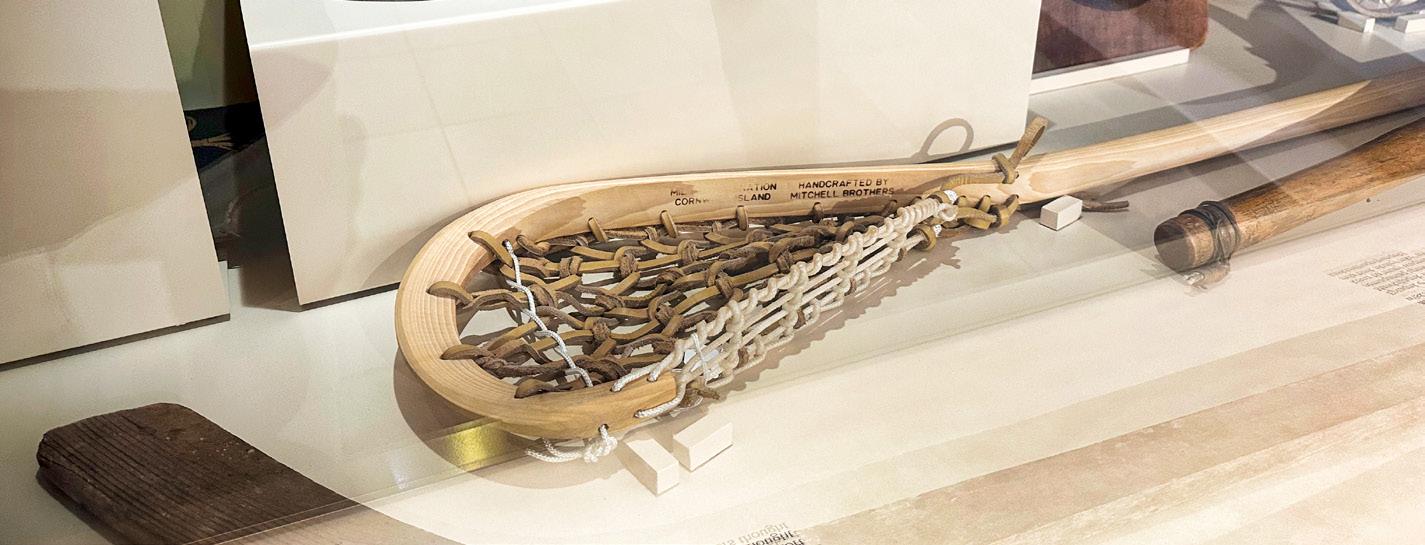


1274 Hollis Street, Halifax, NS 902-446-4077 | www.art1274hollis.ca Visit and Experience Local Fine Art And Fine Craft
Gordon
Blazevic
Colleen Underwood Bonnie Baillie Judy
Anthony
A lacrosse stick at the cultural centre.
41 NOVA SCOTIA
Displays and artwork in the centre.


10
East Coast places to learn Indigenous history
Millbrook Cultural Centre, Millbrook, N.S.
Kejimkujik National Park, Maitland Bridge, N.S.
Eskasoni Cultural Journeys, Eskasoni, N.S.
Metepenagiag Cultural Centre, Metepenagiag, N.B.
Elsipogtog Mi’kmaq Cultural Centre, Elsipogtog, N.B.
Lennox Island Mi’kmaq Culture Centre, Lennox Island, P.E.I.
Port-au-Choix National Historic Site, Port-au-Choix, N.L.
Beothuk Interpretation Centre Provincial Historic Site, Boyd’s Cove, N.L.
Labrador Interpretation Centre, Happy Valley-Goose Bay, N.L.
Illusuak Cultural Centre, Nain, N.L.

42 NOVA SCOTIA
Top: Art by Alan Syliboy. Above: The sculpture of Kluskap watches over the Centre.


examples of such works are on display here in the centre.
Outside the centre, a 12-metre-tall statue of the famed Mi’kmaw god Kluskap is so big, every motorist passing on highway 102 can easily see it. In Mi’kmaw mythology, Kluskap is often a giant who gets up to mischief so epic, his activities change the landscape and give animals characteristics we still recognize today.
The Millbrook centre is in a business park beside the highway. Inside Alan Syliboy’s new art studio and gallery, the past folds into the present in his brilliantly rendered works of contemporary art. Syliboy gets his inspiration from traditional Mi’kmaw themes, values, motifs and especially petroglyphs. He is perhaps the most prominent Mi’kmaw artist working today, but the painter is also an author, musician, filmmaker, and book illustrator. For his significant contribution to life in Canada, he was awarded the Queen’s Golden Jubilee Medal in 2002, the year he opened this gallery.
I discover that Syliboy’s works have something in common with the artworks inside the Millbrook Cultural Centre. Each is set against a background of tiny dots of paint so vibrant, the work almost seems to be vibrating. Here’s the thing. These dots were applied by Syliboy’s grandchildren. These paintings and the works in the centre show just how much colour kids add to Mi’kmaw works of art.

 Hand decorated regalia.
Hand decorated regalia.
43 NOVA SCOTIA
Painting by Alan Syliboy.
35 Acadian things:
Heritage stops from East Pubnico to Saint Bernard

STORY AND PHOTOGRAPHY
BY DARCY RHYNO
Arough, stone bridge arches across Point Hipson’s Creek like something out of a Brothers Grimm fairy tale. A fire pit and picnic table welcome visitors to an adjacent park. The place has an ancient European feel, though it’s just a century old.
From south to north, the Hipson’s Creek Stone Bridge (1) is the first of 35 spots along Nova Scotia’s French Shore between East Pubnico in the south and Church Point in the north. Most stops have some connection to the history of the Acadians who have lived in the region since 1604. Others, like this stone bridge that a Scottish mason built to memoralize people lost at sea, have only their location along Nova Scotia’s French Shore in common. All are worth a stop along this historic route.
From East Pubnico, look across the bay to the Pubnico Point Wind Farm (2) and Dennis Point Wharf (3). Next to the wharf where fishing boats dock three abreast, the Dennis Point Cafe (4) serves up heaping platters of fresh seafood.
On the same peninsula, immerse yourself in historic French culture at the Acadians of Pubnico Museum (5) and the seven-hectare Historic Acadian Village of Nova Scotia (6), where interpreters in period costume take visitors back in time with experiences like blacksmithing and cooking on a woodstove.


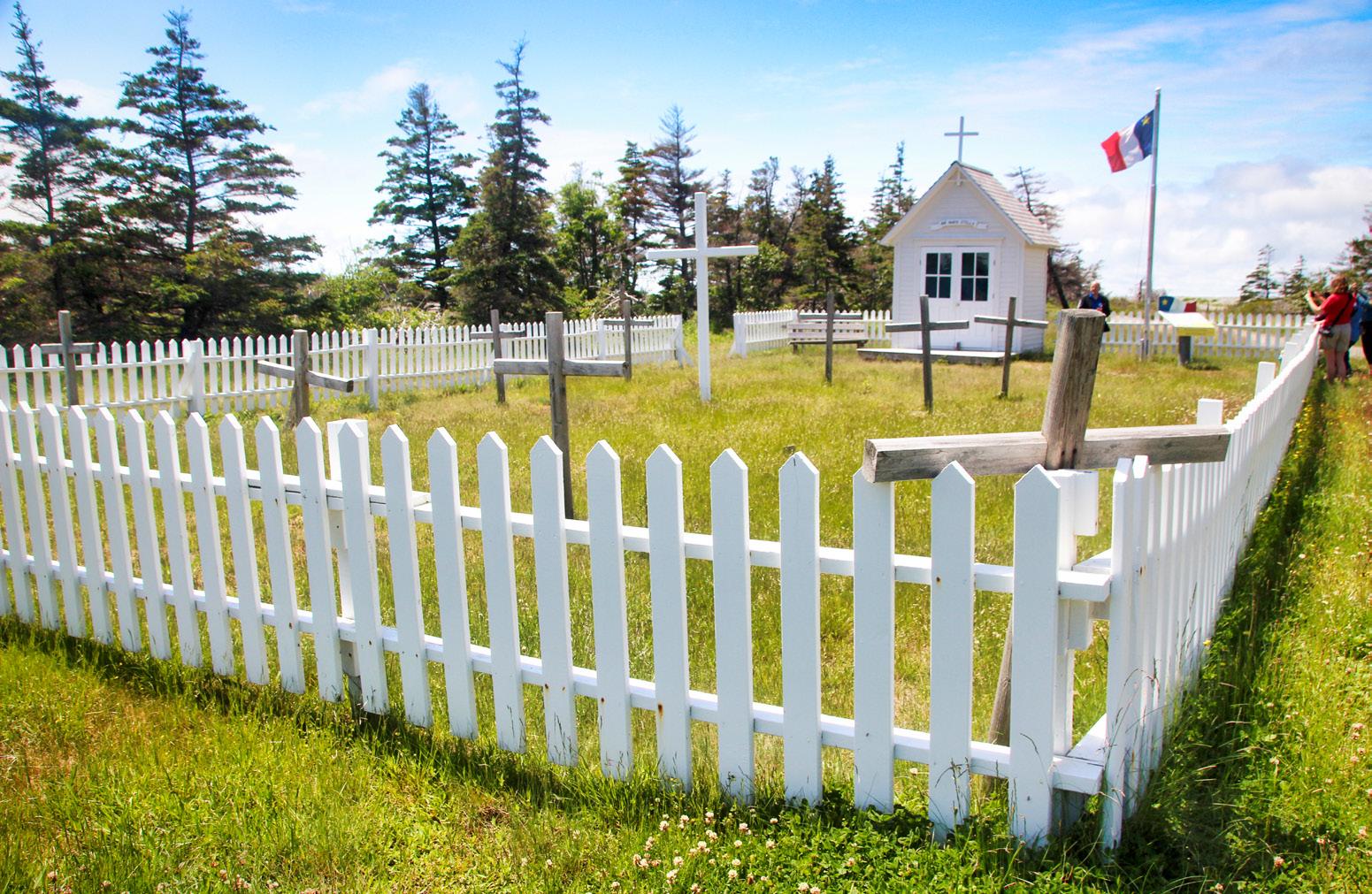 Quilts at Acadian Museum, Pubnico.
Site of Clare’s first cemetery, Belliveau Cove.
The old school in Belliveau Cove.
Quilts at Acadian Museum, Pubnico.
Site of Clare’s first cemetery, Belliveau Cove.
The old school in Belliveau Cove.
44 NOVA SCOTIA


Stop at Boatskeg Distilling (7) to sample salted caramel vodka and other spirits that two Acadian fishermen make in the former boatbuilding shop.
Continue on Route 3 to two spiritual stops, the Chapel Site at Rocco Point (8), a picnic area with a lovely seaside vista, and Ste-Anne Church (9), a grand Romanesque wooden structure worth exploring. Take a boat tour of the Tusket Islands (10) where the huge tidal range requires tall, spindly wharves for the summer fleet that fishes from these remote islands.
At the Argyle Township Courthouse and Gaol (11), Canada’s oldest courthouse, descend into the basement to the gloomy cells fitted with original barred doors. Guides share stories of famous inmates and quirky, small-town crimes. At nearby Amiraults Hill, haystacks (12) are built to demonstrate their unique construction on the salt marsh. In times past, up to 1,000 of these haystacks dotted the landscape. You’re near the mouth of the Tusket River (13) and an exit off Highway 103 where the Tusket Falls Brewing Company (14) serves up excellent pints.
In Wedgeport, check out the Founding Families Monument (15) and the story of Israel Pothier, a local hero. Butte-de-LaCroix (16) commemorates Early Acadian pioneers in Wedgeport. At the end of this peninsula, stop by the Wedgeport Sport
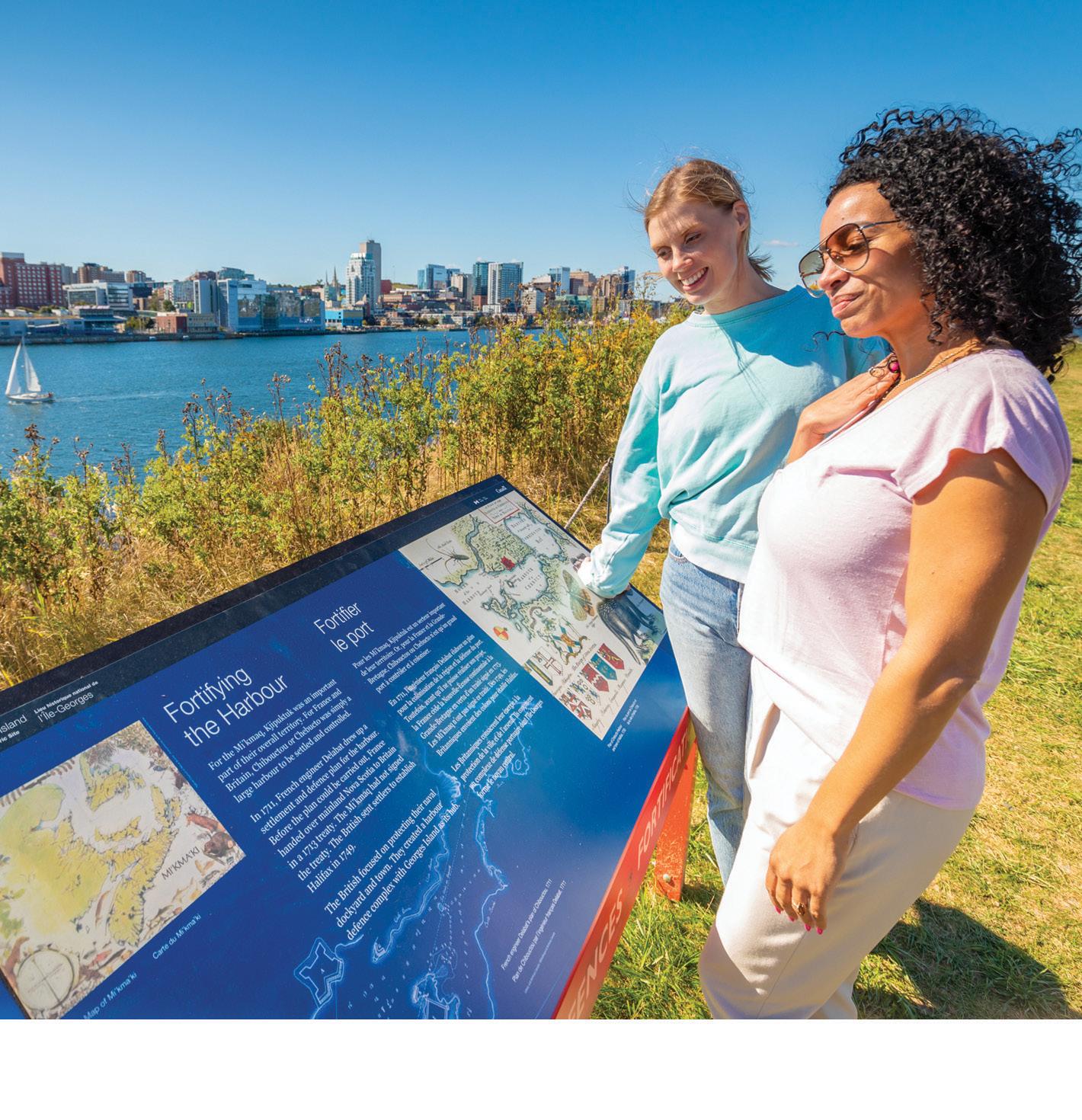
Wood-Fired Hot Tubs


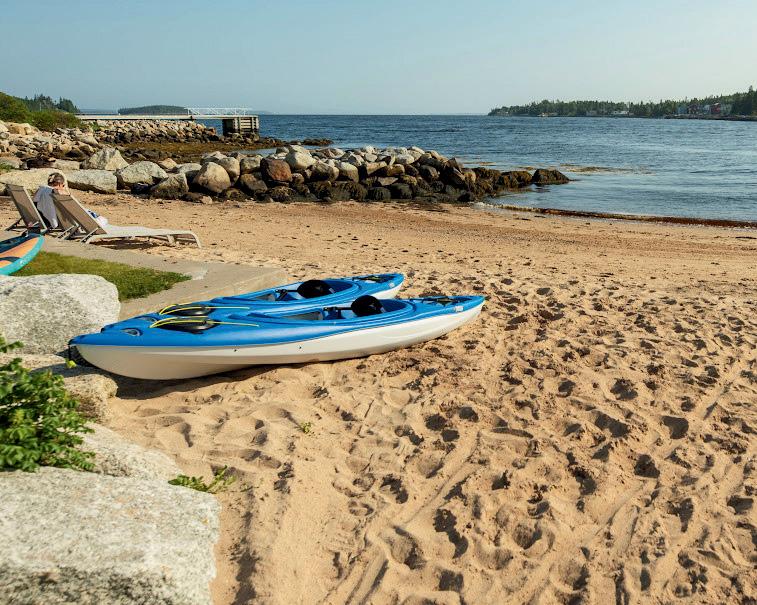
Wood-Fired Sauna Oceanfront Cottages


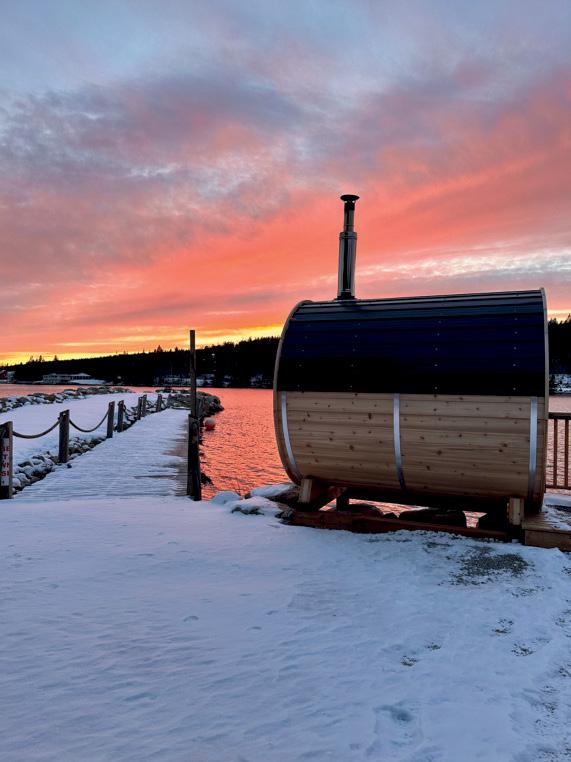
WilsonsCoastalClub.com
Sainte-Marie Church in Church Point is the largest wooden church in North America.
45 NOVA SCOTIA

Tidal adventures await Guided tours, tide times & more burntcoatheadpark.ca




EAST COAST SEAFOOD GRATIN
Shane Robicheau, a chef and food truck operator, is the son of Nadine and Scott who own la Cuisine Robicheau, a popular restaurant in Saulnierville, N.S. He created this recipe in collaboration with Comeau Seafoods and Taste of Nova Scotia. Serves 2
6 sea scallops
2 tbsp (30 mL) salted butter
1 tsp (5 mL) garlic, minced ¼ cup (60 mL) white wine
¼ lb (115 g) lobster meat, diced
11/3 cups (315 mL) cream
1/3 cup (70 g) cold water shrimp


Check tidal bore times easthants.ca/fundy





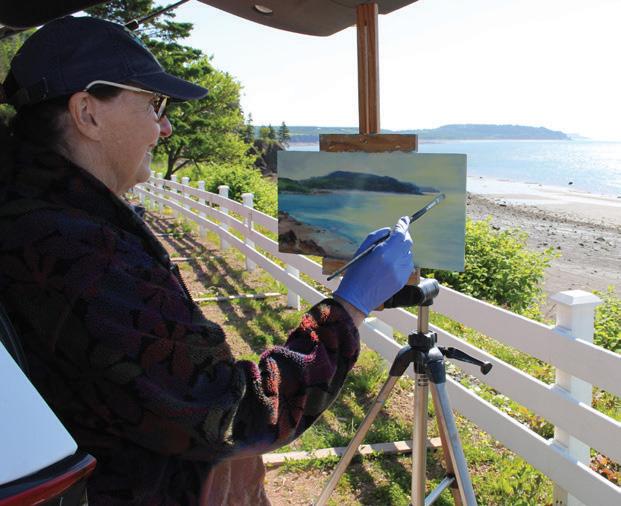
Parrsboro International Plein Air Festival
June 19th-23rd, 2024, Parrsboro, Nova Scotia
Awards Ceremony and exhibition June 22, starting at 6pm Observe, Celebrate and Buy beautiful works by 30 Of the best Plein Air Artists from Canada and the USA
More info at: www.parrsborocreative.com/pipaf

4 slices bacon, cooked and diced
3 sprigs parsley, finely chopped
1/8 cup (30 mL) breadcrumbs
¼ cup (60 mL) Gouda cheese, shredded
1/3 cup (80) mozzarella cheese, shredded
Cracked pepper to taste
Method
Combine butter and garlic in a pan over medium heat. Slow cook for three minutes until ingredients becomes translucent. Add wine and cook until mostly reduced. Add lobster meat, let it lightly sizzle. Gradually add small amounts of cream to thicken the lobster sauce. Once sauce is no longer runny, turn off the heat and add shrimp to the pan.
Slice scallops in half horizontally and add them, in a circular formation, to two oven-safe escargot dishes, followed by bacon and Gouda. Broil dishes in oven until cheese is golden brown. Remove dishes from oven and top with cooked lobster sauce.
Mix finely chopped parsley with a dash of black pepper and breadcrumbs. Coat both dishes with this mixture.
Top with shredded mozzarella and broil until golden brown and sizzling. Pair with homemade rolls and a Tidal Bay wine for a full East Coast culinary experience.

Tuna Museum and Interpretive Centre (17) to learn about the international tuna fishing tournaments of the past.
Across the water on Comeau’s Hill, stands Saint Peter’s Rock/Roche St-Pierre (18). It was here in 1769 that clergy gave religious rights to the first Acadians to return after the end of the Great Expulsion.
In Yarmouth, climb the Cape Forchu Lighthouse (19) and marvel at the massive whale skeleton. Carry on to Mavillette Beach Provincial Park (20), perfect for a beach day on the wide sand flats exposed at low tide. From there, you’ll see the Cape Saint Mary Lighthouse (21) with an accompanying monument to those lost at sea. Another unique Acadian religious site, the Saint-Alphonse Church (22) features twin towers, a hand-carved grotto, and murals.
The next stop is Smuggler’s Cove Provincial Park (23). Steep stairs lead to a sea cave where rum runners stashed their booze in prohibition days. In Metaghan, wander the busy wharves (24) and strike up a conversation with friendly fishermen. Look for the 44-kilometre “rails to trails” hike (25) in Metaghan Station. Check out one of North America’s last functioning water powered turbine sawmills, (26) located in Bangor.
Visit the oldest church in the district of Clare, the 1880 Sacré-Coeur Church (27) in Saulnierville. Across the street, enjoy a hearty Acadian meal at la Cuisine Robicheau (28) where there’s traditional music most Thursdays. Continue to Church Point and Université Sainte-Anne (29) and
A giant Acadian chair located outside a dwelling in Clare.
46 NOVA SCOTIA


its inviting visitor centre with an extensive museum to Acadian history. On the same grounds, see the massive, Gothic-style Saint Mary’s Church (30), North America’s largest wooden church. It’s not currently open to visitors, but it’s still well worth a look from the outside.
Majors Point Historic Site (31) marks the solemn location where Pierre Beliveau landed with 100 refugees in 1755 during the Expulsion of the Acadians. At Beliveau Cove, take the walking trail and learn the story of bravery and perseverance behind Joseph and Maria Dugas Municipal Park (32), named for the region’s first permanent Acadian settlers. Enjoy an Acadian seafood dinner in a century-old schoolhouse, now la Vielle École restaurant (33).
It took 32 years to build the final attraction on this French Shore tour. The grand Saint Bernard Church (34) is now deconsecrated and preserved.
Oh, and while you’re touring these 34 Acadian sites, tune to radio CIFA 104.1 FM (35), the home of local Acadian music.

 Argyle Courthouse and Gaol.
Argyle Courthouse and Gaol.
47 NOVA SCOTIA

Temperance, tapestries, and hilltop tall ships
Quirky stops on the Canso Loop

On a drive around the Canso loop that links Guysborough, Canso, and Larry’s River, I spot a simple monument at a scenic lookoff on Route 16, part of Nova Scotia’s Marine Drive. A plaque engraved with an astonishing claim is fixed to a 14-tonne boulder. Next to it, an interpretive panel tells a strange and unproven story. It claims that Prince Henry Sinclair led 12 tall ships from Scotland to Chedabucto Bay, between the mainland and Cape Breton Island, in 1398, a century before Columbus crossed the Atlantic.
With no evidence, this unlikely tale relies on imagination, but it’s fun to ponder and a hint to the many quirky attractions on the Canso loop, among them a ship on a hill, painted boulders in the shape of an anchor, and a national historic site that’s little more than a patch of grass. The fun begins in Guysborough with an enormous tapestry that promotes abstinence from alcohol.
At the mouth of the long, narrow Guysborough Harbour, the community has gathered the flotsam of its cultural heritage in a white building that served as the seat
48 NOVA SCOTIA
STORY AND PHOTOGRAPHY BY DARCY RHYNO

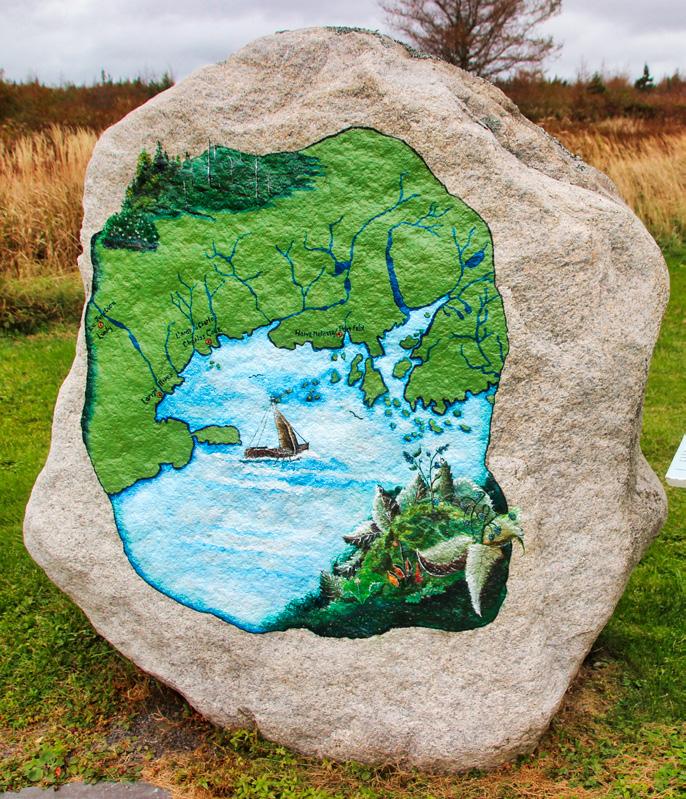
of county law from 1842 to 1973. Today, surprising treasures pack the Courthouse Museum, including model ships and artifacts from the town’s forestry, shipbuilding and fishing heritage. There’s even an old telephone switchboard to play with. One of the most remarkable artifacts is impossible to miss. Taking up most of the wall behind what served as the judge’s bench hangs a tapestry that reads, “The Eyes of All are Upon You. Guysborough Total Abstinence Society, Instituted 1830.” The museum sells T-shirts printed with these words.
Following Route 16 to Canso, I reach the Parks Canada visitor’s centre for the Canso Islands National Historic Site. On Grassy Island, not much remains of the 18th-century fishing station and the earthen fort that protected it. In August 1720, French and Mi’kmaw forces attacked New
Englanders building Fort William Augustus, because its construction was in violation of French-Mi’kmaw agreements that gave them exclusive shared rights to the island and local fishing grounds. The interpretive signs help visitors imagine the buildings, fortifications, and battles on what is now a quiet, seaside meadow.
Backtracking from Canso, I turn onto Route 316 which traces the shores of Tor Bay. High on a hill in Port Felix, I find another strange monument, this one built in the shape and size of a tall ship’s deck and bow. Interpretive panels tell an astonishing story, this one historically accurate, that people should better know. The bow points to the bay and the Sugar Islands where, in 1607, Capt. Savalette, a Basque fisherman, met the French explorer and so-called “Father of New France,” Samuel de Champlain.
While Champlain was just beginning his explorations, Savalette had already established a friendly relationship with the Mi’kmaq. When the two explorers met, Savalette told Champlain that he’d been fishing for cod in these waters for the past 42 summers, salting and drying the catch on the islands. So, Savalette crossed the Atlantic some 25 times more than Champlain himself, a remarkable feat so early in European settlement.
Continuing along Route 316, I arrive at Larry’s River. Across the street from lovely
Rennesouth Properties


As seen on HGTV’s Trading Up with Mandy Rennehan! Luxury Rennesouth Properties in picturesque, Yarmouth & Port Maitland, Nova Scotia.
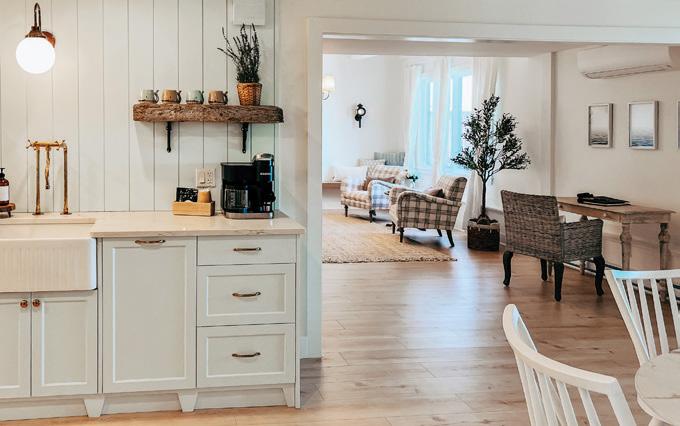

You are literally steps away from the Beach! Rentals for 6-8 people with breathtaking unobstructed views of Port Maitland Beach with replaces in each suite.
Restored, & celebrity designed suites in Downtown Yarmouth with harbour views, all in the privacy of your own luxury apartment. Only 3 minutes from the Cat Ferry.
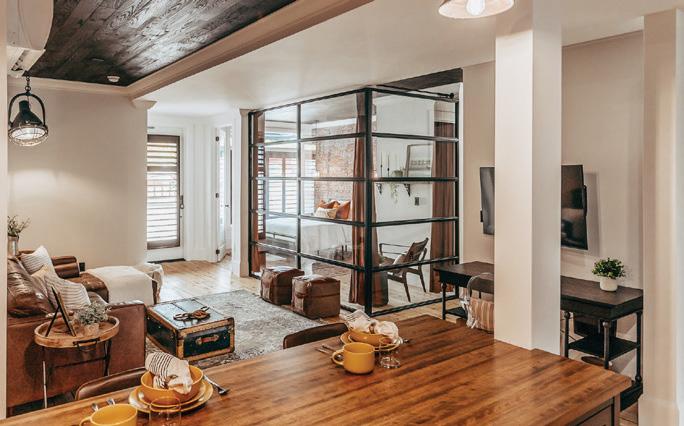

Open year round, reserve your luxury getaway today.
www.rennesouth.com
Ancestor’s Park, Tor Bay scene, Larry’s River.
49 NOVA SCOTIA
The abstinence tapestry in the Guysborough Courthouse museum.

St. Peter’s Church, I pull over at Parc de nos Ancêtres (Ancestors’ Park). Arranged in a gentle arc, 10 boulders have painted scenes from French and Acadian history. Beside each is a small interpretative panel. At the end of the single path leading to the centre of the arc of boulders stands another stone, this one in the shape of the stern of a chalupa, one of the small boats fishermen like Savalette used in these waters. Viewed from above, the whole arrangement is in the shape of a ship’s anchor.
The monument’s odd shape is a
Fortress Rum Caramel Sauce
This recipe from Chef Anna Nickerson at DesBarres Manor Inn in Guysborough is a perfect match to serve warm over rum cake, including the locally made Fortress Rum Cakes made from Authentic Seacoast. Alternatively, Anna recommends serving the sauce on waffles or bread pudding with a scoop of French vanilla ice cream.
Yield – 1 cup sauce
Ingredients
1 cup (240 mL) brown sugar
¼ cup (60 mL) butter
1 cup (240 mL) coffee cream
4 tbsp (60 mL) Fortress Rum (amber rum)
Cook butter 2 to 4 minutes, whisking slowly and constantly until the butter is melted. Combine with sugar. Slowly add cream until well mixed. Add rum. When all ingredients are combined, it’s ready to serve. Leftovers store well in the refrigerator for up to a week. Reheat in the microwave.

reference to a story from the founding of Larry’s River. When Bishop Plessis of Quebec journeyed here in 1815 to assess the condition of his parishioners, he came upon desperate poverty. When he begged the settlers to leave for more prosperous communities before they died of starvation, an elder replied, “We have thrown our anchor. We are here to stay.” And so they were. The descendants of these early Acadians still live around Tor Bay today. From here, Larry’s River Road turns inland and runs back to Guysborough. The
Courthouse, which is now home to that enormous temperance tapestry, had quite a life before it became a museum. The building hosted debates about Canadian Confederation and enlistment drives during the world wars. Such events were crucial in forging the nation we know today. The apocryphal exploits of Prince Henry Sinclair, sailing across the Atlantic a century before Columbus, are fun to ponder, but it’s here and at other quirky, historic sites that you can appreciate the Canso loop’s true history.
 DENNIS JARVIS
Place Savalette with view of Tor Bay. The Old Court House Museum in Guysborough.
DENNIS JARVIS
Place Savalette with view of Tor Bay. The Old Court House Museum in Guysborough.
50 NOVA SCOTIA
Ancestor’s Park, scattering of Acadians painted scene, Larry’s River.
Magic and gems
An artisanal tour of the Cabot Trail unearths the heart of the island
STORY AND PHOTOGRAPHY BY DARCY RHYNO
Beginning a road trip around the Cabot Trail on Nova Scotia’s Cape Breton Island, I discover a stash of magic and gems about 50 kilometres north of Baddeck. This stretch of lonely road beyond the Englishtown Ferry follows the Atlantic shoreline before it tucks and turns around the highlands of Cape Breton, a northern outcrop of the Appalachian Mountains, half a billion years of time and natural forces having flattened their peaks.
I discover the magic and gems at Cabotto Chocolates inside the Colouratura Art Gallery in Englishtown. Sisters Penny Steele and Deb Karn own the chocolate shop and gallery in a former roadside church. They needed something to sell when their vibrant paintings weren’t moving. Chocolate was the answer. Their chocolates proved popular, so the sisters built a kitchen behind a glass wall so visitors can watch the delicious process.
Today, chocolates have overtaken paintings as the main attraction, but both display artistry. Mermaid Magic is a bark of pale orange melt-in-the-mouth confection swirled with milk chocolate and dotted with candy bits. Giovani Gems are bars of Belgian white chocolate studded with pistachios, cranberries, apricots, and pineapple. The company, the gems and the trail are named for the Italian explorer, Giovanni Caboto (John Cabot) who may well have explored these shores 500 years ago.
I leave Cabotto with a bagful of gems and magic, but I don’t get far. Internationally renowned as one of the world’s top destinations, Cape Breton Island boasts plenty of reasons to visit. However, visitors sometimes overlook the dozens of arts and crafts shops that dot the Cabot Trail in favour of world-class golf courses, the wonders of Cape Breton Highlands National Park, and the splendour of the trail itself.

 Cabotto Chocolate Shop and the Colouratura Art Gallery.
Cabotto Chocolate Shop and the Colouratura Art Gallery.
51 NOVA SCOTIA
Mermaid Magic is a dreamy confection of orange, chocolate, and candy bits.

Ingredients
2 lbs (907 g) Belgian white chocolate ¼ lbs (115 g) raw pistachios, shelled 1/3 lbs (170 g) cranberries, dried 1/3 lbs (170 g) apricots, dried ¼ lbs (113 g) pineapple, dried wedges
Equipment needed
9x13 cookie sheet with raised edges
Heat gun
Large knife
Cutting board
Scissors
Meat or candy thermometer
Cut pineapple and apricots into pieces with scissors. Line cookie sheet with wax paper. Melt chocolate in a double boiler or in a plastic bowl in the microwave in short bursts until chocolate reaches 90F (32C.) (Don’t use a glass bowl or overheat as the chocolate will burn.) Once at temperature, remove chocolate and stir in the other ingredients. Heat the back of the tray slightly with a heat gun or hair dryer. Pour mixture into pan and evenly distribute. Tap pan to create a smooth surface. It will start to set, so work quickly. Place in the fridge for three minutes. Cut into one-inch (2.5-cm) squares with a large knife. Place the tray back in the fridge for five minutes.

And yet, it’s in these small, artisanal shops that visitors encounter the true heart of Cape Breton Island.
Back on the road, I discover a series of arts and craft shops along the trail near Englishtown: Wildfire Pottery, Piper Pewter, and Leather Works by Jolene. Sew Inclined: Funky Hats and Clothing by designer Barbara Longva is delightfully surprising. Her shop stands out with a couple of hand painted cars parked out front. Inside, I find a shop stuffed with whimsical hats and elegant clothes. Some are tall and floppy as if inspired by Dr. Seuss. Others are sleek and tidy, based on traditional designs like the Irish flat cap.

Contrasting the quiet, cozy corners of Sew Inclined, Wendy Smith’s Glass Artisans Studio & Gallery along the same route not far from Ingonish is all bustle and blaze. A glass blower dips white hot blown glass into vibrant powders laid out on a metal table. Behind them, a furnace roars. All around me, delicate glass lamps, tropical fish mobiles and elegant vases by various artists catch rays of sun streaming through the windows.
Back on the road, I head up and over Cape Smokey, down into Ingonish. Near Dingwall, I reach Tartans and Treasures. Inside is a world of plaid. Yes, there are kilts, but the place is also stocked with all the plaid ties, socks and even mugs someone of Scottish heritage would ever need. Still in Dingwall, before entering the park again, I pull over at Arts North, an art co-op. Driftwood whales, fine photography, beach glass jewelry, ceramic lamps and a lot more are arranged in attractive displays around the store’s two floors.
I drive onto the park’s highest peaks, then back down a road that hugs the mountainside and hangs high over the ocean. When I reach the Acadian town of Cheticamp, I sense a change. It’s more than just the predominance of French. Acadian identity is woven into the fabric of the community. Lola’s Hooked Rugs is the first shop after emerging from the park. Inside, Cheticamp’s signature art form comes to life in hundreds of works.
Learn more at Les Trois Pignons, a museum identified with its three red peaks or pignons. Inside, the life, times and major works by the great Elizabeth Lefort, one of the world’s most accomplished rug hookers, come to life in displays created with great reverence. A Canadian patriot, Catholic, and celebrity admirer, she hooked likenesses of prime ministers, movie stars, religious figures, and American presidents.
Returning to Baddeck, my last stop is Gallery La Bella Mona Lisa. Even the name suggests whimsy. The roadside sign features a folksy likeness of Michelangelo’s smiling subject crowned by an equally folksy fish. One of the paintings inside places Mona Lisa in a barnyard with cows and poultry. This gallery where cows and classic art collide is the kind of creative magic sparkling with attractive gems I’ve come to expect from the artisans of the Cabot Trail.
Giovani Gems from Cabotto Chocolates
Wildfire Pottery ceramic puffins.
Wooden folk art fish.
52 NOVA SCOTIA
Les Trois Pignons museum.
Bannock and clams (or oysters)
Breaking bread in Mi’kma’ki

When I arrive, Carman Augustine is already a couple hours into building and tending the fire next to the Mi’kmaq Cultural Centre on Lennox Island, P.E.I. Augustine has to get the fire hot enough and build up enough coals to heat the sand beneath. The sand will help cook the bannock and shellfish I’m here to share with him and four German tourists in the centre’s Bannock and Clams in the Sand experience.
As he prepares the fire, I walk around the neighbourhood to see the new school and band office, photograph the tall, yellow St. Anne’s church, and visit a small craft shop. This is the heart of the community. About 450 Mi’kmaq live and work on the 540-hectare island on Malpeque Bay. Aficionados have called the bay one the world’s best oyster growing locations for more than a century. And for 10,000 years, it’s been the heart of Mi’kma’ki, the traditional Mi’kmaw homeland.
When Augustine calls us back to the fire, he’s ready to mix the bannock, a simple Scottish bread adapted by the Mi’kmaq


centuries ago. In a big bowl, he blends the flour, salt and baking powder before adding a small puddle of vegetable oil, then water to make a soft ball of dough. He takes a shovel to the fireplace, pushes the coals aside and digs until he reaches sand. Now hot and dry, the sand forms the oven’s base. A layer of flour keeps the sand from sticking to the dough. Another layer over it protects the dough from the coals shoveled back on top.
While we wait for the bannock to bake, Augustine produces a box of oysters picked
just hours ago. Clams aren’t always available due to seasonal harvesting regulations, so oysters are replacing them. Augustine throws a metal grate over the fireplace and sets oysters on them. Within seconds, steam hisses from the shells. As the oysters open, Augustine plucks them from the fire to cool. The Germans are tentative as they sample the first oyster, but soon gobble them right from the shell.
When we’ve eaten our fill, we follow a guide into the cultural centre for a trip deep into Mi’kmaw history. We learn that
STORY AND PHOTOGRAPHY BY DARCY RHYNO
Quick steaming oysters.
Bannock going into the fire to bake.
53 PRINCE EDWARD ISLAND
Mi’kmaq Culture Center, Lennox Island.

in the Mi’kmaw language, the letter “k” is pronounced like the English letter “g.” So the Mi’kmaw word for P.E.I., spelled Epekwitk is pronounced “E-peg-weg.” The word translates as “lying in the water,” a perfect descriptor for the island province. A canoe made of birchbark stitched together with spruce root, the seams sealed with spruce gum, looks as mint as when it was built nearly 125 years ago.
We see a stuffed bald eagle that died of natural causes. Our guide says the eagle is a sacred animal for the Mi’kmaq because it lives in both the physical and spiritual realms. It’s said that when sacred tobacco, sage, sweet grass, and cedar burn in ceremony, the smoke carries prayers to the sky where the eagle delivers them to the Creator.
In the next room, we find a glass case filled with 215 children’s shoes. Photos of residential schools surround it. The shoes represent the remains of Indigenous children, buried on the grounds of a former residential school in Kamloops, B.C. Officials continue to search other school grounds across Canada for Indigenous children who died after government forced them into the church-run schools.


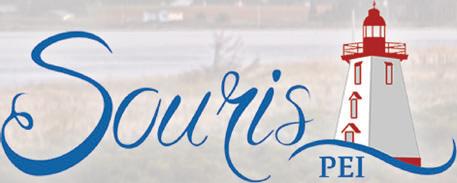



Our tour ends with a display of beautifully made baskets that look new, but are up to 300 years old. Some are large and sturdily built for carrying heavy foods. Others are small and light for berry picking. Decorative quill work, moccasins for babies, small baskets, and bead jewellery from local artisans and summer staff are for sale.
Outside, the bannock is ready. Augustine digs from the fire a hot, dark, smoking ball that looks anything but edible. “I’m usually pretty confident in my bannock making, but if it’s undercooked, it’s the weather’s fault,” he says. “If it rains the night before, there’s a good chance that the sand wasn’t dry or hot enough.”
Sure enough, when Augustine scrapes away the coals and sand, then cuts open the bannock, the centre is still raw. He removes it, then slices the cooked bannock into pieces. Slathered in butter and drizzled with molasses, it’s a soft, warm, sweet treat —true comfort food. It’s an honour to be welcomed into a community and break bread with people who thrive of their own accord, while taking comfort in food and the friendship of settlers like me and the German visitors, our fingers sticky with molasses.

Lennox Island Bannock Ingredients
6 cups (1400 mL) flour
1 tbsp (15 mL) salt
3 heaping tbsp (60 mL) baking powder
¼ cup (75 mL) vegetable oil
Up to 4 cups (1 L) water
Method
Place several inches (10 cms) of sand in a clean, outdoor fireplace. Build a fire on the sand 1 to 2 hours ahead of baking time. Mix the dry ingredients together. Make a well in the dry ingredients and pour in the oil. Add 2 cups of water and mix. Add more water until the dough comes together, usually another 2 cups. The dough should stick to itself rather than your hands. Form the dough into a ball. Shovel the coals away from the sand. Coat the sand with flour. Place the dough in the flour. Coat with flour. Heap hot sand and coals over the dough. Add some firewood. Cook for at least 90 minutes. Cut open and serve hot with butter and molasses.

A historic fishing town with stunning sandy beaches and scenic views abound We

F T
PEI • sourispei.com
guarantee you will want to stay, Souris
Photo Courtesy of JoAnne Dunphy
Left: Handmaid clothing in the cultural centre; Above: Carman Augustine mixing bannock.
54 PRINCE EDWARD ISLAND









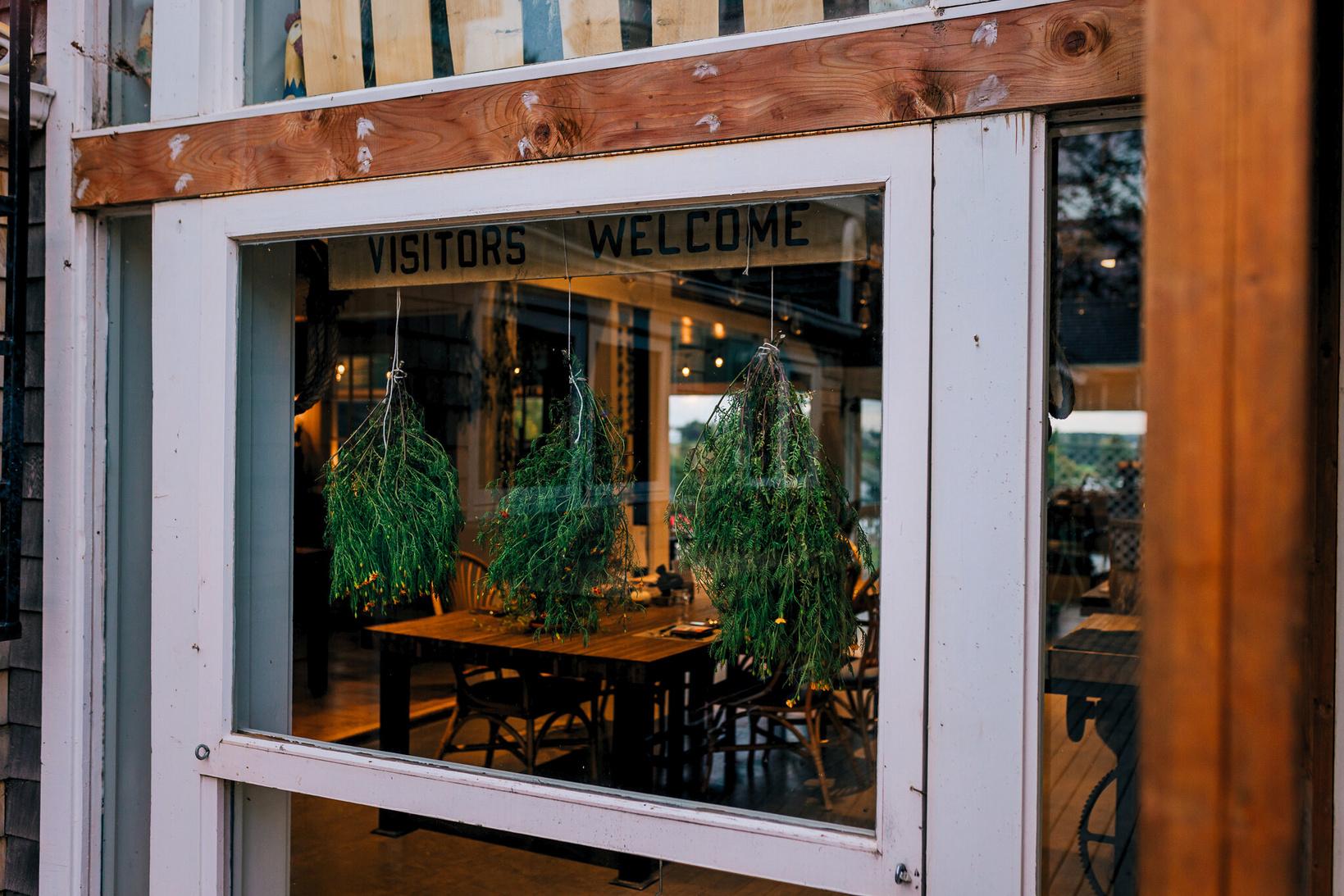


THE FIREWORKS FEAST CHEF MICHAEL & CHASTITY SMITH, PROPRIETORS OF THE INN AT BAY FORTUNE FORTUNE, PRINCE EDWARD ISLAND | INNATBAYFORTUNE COM | @INNATBAYFORTUNE A FARM-TO-FORK LIVE FIRE DINING EXPERIENCE CANADA'S 100 BEST RESTAURANTS! & tartan shop northern watters knitwear HOME OF THE 100% BRITISH WOOL SWEATERS & ACCESSORIES SHOWCASING OVER 250 ARTISTS & ARTISANS! FINEST CANADIAN CRAFTS - CAPES - POTTERY - YARN - BLANKETS MOHAIR SOCKS - PRESERVES - JEWELLERY - SHEEPSKIN SLIPPERS SCOTTISH & IRISH PRODUCTS - FIRST NATIONS ITEMS DEERSKIN PRODUCTS AND MUCH MORE NWKNITWEAR.COM - 1-800-565-9665 VICTORIA ROW 150 RICHMOND ST CHARLOTTETOWN, PE (902) 566-5850 HISTORIC PROPERTIES 1869 UPPER WATER ST HALIFAX, NS (902) 405-0488 PIER 20 1209 MARGINAL RD SUITE 115 HALIFAX, NS (902) 405-0488
Sandy beaches and city streets
Take a horseback trip around parts of P.E.I.
 STORY AND PHOTOGRAPHY BY DARCY RHYNO
STORY AND PHOTOGRAPHY BY DARCY RHYNO
I’m thrilled to be the first ever customer at Lakeside Trail Rides, but from where I sit, I’m certain I won’t be the last. The view over Miya’s mane is of three other horses and riders ahead of me and a long beach devoid of people. Scanning the sand
around Miya, I can’t spot a single human footprint. Santana Gidney, the 21-year-old horse whisperer leading this tail-to-nose convoy, tells me that in 2022, hurricane Fiona isolated this part of Lakeside Beach from the main strand.

“It’s where everybody goes,” Gidney says of the much more accessible part of the beach. “There’s a million people on it every day. It just works out really well now with this sectioned off so we’re not in the way of the public. It’s beautiful here,” she muses.
 Horses back in the barn after a trail ride at Lakeside Trail Ride.
Santana Gidney at Lakeside Trail Ride.
Horses back in the barn after a trail ride at Lakeside Trail Ride.
Santana Gidney at Lakeside Trail Ride.
56 PRINCE EDWARD ISLAND
Often, the only tracks you’ll see are from horses.
“Sometimes, the waves come up on the beach, and we can walk in the water a little. It’s something everyone needs to come and try for themselves.”
It’s something I need to try. Horses and I have just never trusted each other. Then I meet Miya. The gentle ol’ girl is most welcoming at the stables where I tumble into the saddle with Gidney’s help. Off we trotted — or whatever is slower than a trot; more like a bob — in a line with the other horses, past a lush pond-side marsh and beneath an occupied osprey nest crowning a tall tree. One by one, the horses step onto the beach.
Riding on this lonely stretch near Morell on the north coast is special, but it’s far from unusual on Prince Edward Island, Canada’s smallest province. “Every property owner has a horse,” says Gidney. “You can’t drive a straight line without seeing four farms on your way.” She should know. She’s been riding since she was seven— two thirds of her life. She’s spent much of that time volunteering and working for the family that operates Lakeside Stables, Ambyr and Carson Cooper.
The Coopers also run Brudenell Riding Stables in a provincial park on the eastern side of the island. Gidney says that site is more geared toward families than this one, with both offering trail rides to a beach.
Carson Cooper tells me about Emerald Isle Carriage Tours, a third family business, a year-round urban operation. In summer, their horse drawn carriages take visitors, many of them cruise-ship passengers, around the capital city of Charlottetown. In winter, the Coopers offer sleigh rides and tours to see Christmas light displays. School visits and birthday parties also help to supplement the business.

“It’s full time,” says a jolly Carson Cooper. “There’s always lots of horsing around.”
Elsewhere on the island near Freetown, Jasmine and Marc Bastarache run Venture Stables. Their programs invite visitors to stick around. Horse camps and competitions for kids run regularly. In Horse Communication Class, participants learn how horses use body language to talk to each other and to humans. The highlight of this workshop is learning the secret horsy handshake. Venture keeps goats, pigs, rabbits, and cats around for the littlest kids to pet and get used to animals before they climb on a horse for the first time.
For grownups, Venture puts together
gatherings like the Wild Woman’s Weekend Retreat. Every Friday evening is Adult Fun Night for beginning riders like me who aren’t used to settling into a saddle. On a Friday night, I book the Overnight Farm Stay and Sunset Horseback Trail Ride so I can enjoy a ride and time afterwards around the campfire before hitting the hay.
Back at Lakeside Trail Rides, Santana Gidney turns our horse convoy around, retracing our steps down the beach and past the pond. I’m feeling an unfamiliar strain in my thighs. Gidney calls it cowboy legs and warns that I’ll likely find the strain amplifying into pain over the next few days.
Back at the barn, I dismount, leg fatigue

57 PRINCE EDWARD ISLAND
Venture Stables co-owner Jasmine Bastarache.

already evolving into minor aches. As I pose with my horse, I forget about the discomfort and give thanks that, with the help of my new friend Miya, I’ve managed to call a truce with horsedom, at least for the day. The discomfort will disappear in a few days, and I’ll be left with the memory of bobbing along on a big, sensitive animal, totally alert to my every whim and, I’ve come to believe, to my enjoyment of an accidentally secluded, impossibly serene, soft sand beach.
Here’s how to get in touch to book trail rides, carriage tours and other equine experiences on P.E.I.
Brudenell Riding Stables, Lakeside Trail Rides, and Emerald Isle Carriage Tours
Reservations by phone only. (902) 652-2396
off-season: (902) 313-1000 info@brudenellridingstables.com off-season: ambyr@live.com
235 Brudenell Island Blvd., Cardigan, P.E.I.
760 Lakeside Rd., Morell, P.E.I. 6 Prince St., Founders Hall, Charlottetown, P.E.I.
brudenellridingstables.com lakesidetrailrides.com emeraldislecarriagetours.com
Venture Stables (902) 247-0195
venturestablespei@gmail.com
124 Campbell Rd., Freetown, P.E.I. venturestables.com



 Red Shores Racetrack & Casino is a year-round entertainment property in the heart of Charlottetown.
58 Kensington Rd. Charlottetown (attached to Eastlink Centre)
Enjoying the scenery at Lakeside Trail Rides.
Red Shores Racetrack & Casino is a year-round entertainment property in the heart of Charlottetown.
58 Kensington Rd. Charlottetown (attached to Eastlink Centre)
Enjoying the scenery at Lakeside Trail Rides.
58 PRINCE EDWARD ISLAND
Venture Stables cabin.
STAYCATION


We thank all our readers for sharing their east coast vacation pix and stories during our 2023 Subaru and Saltscapes Staycation Contest!
Congratulations to our grand prize winner Robyn Houle from New Brunswick. Robyn will be enjoying a brand new Subaru two-year lease.
Every year the Atlantic Balloon Fiesta takes place in September, just after the long weekend. It’s amazing to see so many balloons floating in one place!
— Robyn Houle
GRAND PRIZE WINNER
Balloon Fiesta Sussex, N.B.


Whether it was a city cultural or culinary getaway with your sweetie, a relaxing and remote cottage rendezvous, rediscovering a great annual festival, a long overdue party with friends and family, or going for a beach hike at a trail you’ve always wanted to visit, we enjoyed each of your submissions highlighting everything our beautiful Atlantic Canadian provinces have to o er.
Visit Saltscapes.com for a complete list of ongoing contests.
Thank you for celebrating Canada’s east coast together in 2023!









saltscapes.com SUBARU & SALTSCAPES Contest
Visit
Feet of the wind, goats of the air
Discover the artisanal cheeses of the Magdalene Islands
STORY AND PHOTOGRAPHY BY DARCY RHYNO

Éric Longpré can call each of his 50 goats by name.
When visitors accompany Éric Longpré and his goats to the beach, the animals and their new friends seem happier. The beach is just over the field and down a steep, rocky shoreline, but the trek is like a walk in the park for the sure-footed goats. Down on the sand where Longpré says few people go otherwise, there’s a spring in every step, a curiosity about their gamboling, a smile on every face.
Longpré’s goat farm and cheese-making business, Goats of the Air, (la Fromagerie Les Biquettes à l’Air) is near Bassin on Île-du-Havre-Aubert, the most southerly island on the Magdalene Islands (Îles-de-la-Madeleine) archipelago. Long stretches of soft sand beach link six of these seven inhabited red, rocky islands between P.E.I. and Newfoundland.
The Magdalenes are part of Quebec, but feel European. The small population of 12,000 Madelinots have two local artisanal cheese makers: goat cheeses from Longpré’s farm and cow milk cheeses from la Fromagerie du Pied-de-Vent (Feet of the Wind Cheese House).
Before he settled in the Magdalenes, Longpré was a wanderer. The Montreal native lived in Whistler, B.C., New York, Miami and Central America, but when he ended a cross-country van trip on these islands, he fell in love. “I was a ski bum, then a beach bum,” he says. “Now I’m a barn bum.”
Back at his farm, he can call each of his 50 goats by name. “That’s Mocha, Dairy Queen, Billy, Purple.” They’re just as lively in the barnyard as on the beach, hopping onto stacked boulders, practising their mountain-climbing skills. As they bleat, their

slim faces light up, punctuated with tall, alert ears, and those engaging eyes with rectangular pupils.
Inside the shop, I sample the goods. “It’s a lot of hard work,” says Longpré, who works long hours and rarely takes a day off. “It’s just me and my girlfriend. I was up at 5:30 this morning.”
The goats need feeding and milking twice daily, most months of the year. The feta is delicious, even more so knowing the work and love that goes into it. Longpré also makes several fresh chèvres with flavourful herbs, forming the cheese into rough, thick disks, then rolling it in seasonings. L’œil de Bouc (Goat’s Eye) is hand-shaped and salted for a melt-in-the-mouth texture. It’s flavoured with lemon zest and garlic flowers, or grapefruit and rosemary, or locally foraged dune pepper and sea
60 MAGDALEN ISLANDS

The windswept Magdalen Islands are home to many prosperous farms. All the hay for both dairy farmers is produced on the islands.
parsley. Honey and cranberries lend zip to the cottage cheese, and he flavours spreads with herbs and garlic. Longpré also sells milk, soap, and body cream.
Goats of the air and “feet of the wind,” the latter a Madelinot phrase referring to how the sun’s rays pierce the clouds, pay tribute to the sense of openness on these windswept islands in the Gulf of St. Lawrence. As I approach Pied-de-Vent fromagerie on Havre-aux-Maisons, I happen upon Dominique Arseneau shepherding his herd of Canadienne cows from their breezy, seaside pastures, back across the road to the milking barns.
Canadienne cattle are a rare breed, the only cattle breed developed in Canada, and a perfect match for the Magdalene Islands, given the Canadienne’s qualities and cultural heritage. The cattle were developed with stock imported from Normandy, France beginning in 1608. Today, a few small herds survive in Quebec. They’re black and brown with a soft, brown muzzle and an exceptionally docile temperament that’s obvious as they follow patiently behind Arseneau. Around the farm, hay is piled high for winter. This herd needs 2,000 bales while Longpré’s goats need just 150.
Inside, Arseneau connects his cows to milking machines. He gives a demonstration of hand milking and invites me to try. I’m all awkward, squishy squeezes and tentative pulls, which gets me no milk at all. Arseneau

helps me refine my technique until a few squirts go flying, then he takes over, first filling a small container, then hooking the grateful cow to her familiar machine.
Offering samples and purchases, the shop is a bustling business with several clerks serving a line of customers. The Art Senau cheddar is mild and nutty, the Tomme des Demoiselles farmhouse cheese is buttery, and the Jeune-Coeur (named for the white coat of a young harp seal) is creamy with a soft, mushroomy flavour. The signature semi-firm, surface-ripened Pied-de-Vent is the consistency of a fine camembert, but with a pleated, light orange rind.
Mussels, Magdalene Islands Style from the Refectory Restaurant at Domaine du Vieux Couvent
Ingredients
5 lb (2.25 kg) cooked mussels
2 cups (500 mL) mussel broth
1 cup (250 mL) whipping cream
8 oz (225 g) Pied-De-Vent or Brie cheese
Pinch orange zest, finely chopped
3 tsp (15 mL) butter, softened
3 tsp (15 mL) flour
Method
Cook the mussels. Place a cheesecloth in a fine strainer and strain the broth. Warm broth over medium heat. Add cream and cheese and stir until melted. Mix butter and flour. Thicken cream and cheese mix with the butter mix. Add orange zest. Pour sauce over the cooked mussels and serve with homemade fries and mayonnaise.
 WIKIPEDIA/ LEXAXIS7
WIKIPEDIA/ LEXAXIS7
61 MAGDALEN ISLANDS
The spirit of France
Saint Pierre and Miquelon offer a unique getaway and a slice of French culture
 BY DALE DUNLOP
BY DALE DUNLOP
Less than 20 kilometres off Newfoundland’s Burin Peninsula, you can go to France. Not Metropolitan France in Europe, which most people picture exclusively when they think of the country, but Saint Pierre and Miquelon — one of its many overseas territories. The 6,000 residents use the euro as currency, have European electric plugs, elects a representative to the French parliament, and consider themselves French in every respect. However, many also have a close connection to Canada, particularly Cape Breton. A visit to this most unique little place should be on everyone’s travel radar.
The first known European to sight the islands was Portuguese explorer João Álvares Fagundes in 1520. Jacques Cartier followed him in 1536, claiming the islands for France. Both explorers noted that there were already Basque, Norman, and Breton fisherman based on the islands. For the next 300 years, the French and British fought seemingly endless wars that resulted in the archipelago changing hands many times, with residents expelled on two occasions.

Finally, in 1815, the wars ended, and Britain ceded Saint Pierre and Miquelon to France, all that was left of once-great New France. Only then did the islands begin to prosper and descendents return from places like Cape Breton, where their relatives had fled more than 100 years earlier. Acadian names familiar in Cape Breton such as Cormier and Landry are common here too. A new influx of Basques and Bretons joined the returning Acadians, resulting in a French population with many different roots.
There was also a brief, but huge bump in prosperity during Prohibition when Saint Pierre boomed as the centre of rum running
to the United States and Canada. But until the collapse of the cod industry in the 1990s, fishing was the economic mainstay. Today the islands depend on French government subsidies that guarantee a high standard of living for such a remote place.
Tourism is rapidly becoming an important part of the economy as well and there are multiple reasons to want to visit. Here are just a few.
SAINT PIERRE
. This principal settlement is on the eponymous small island and home to 90 per cent of residents. It has an atmosphere different from anything in Atlantic Canada. Walking the streets, you’ll
DALE DUNLOP
DALE DUNLOP
The British built Cap Blanc lighthouse following the sinking of one of their vessels in 1874.
62 SAINT PIERRE ET MIQUELON
The 14-kilometre long Langlade isthmus boasts one of the largest dune systems in eastern North America.

come across myriad colours: on the houses, dories, shops, and even huge fronton walls where Basque descendants still play the tennis-like game of pelota. For gourmets, there are many restaurants, épiceries, and wine shops. To get the most out of your visit, take a guided taxi tour for great views of the town from several angles.
THE MUSEUMS. In Saint Pierre you’ll find Musée de l’Arche, a large museum that traces the history of the island from 3,000 years ago to the present. Here you can see a guillotine that was used for the island’s one execution. The smaller Heritage Museum has a great prohibition section that features unopened cases of brandy and spirits from that time. On Miquelon, the Nature Interpretation Centre features the natural history of the island in a modern building.
ILE AUX MARINS. A 10-minute boat ride from Saint Pierre takes you to Ile aux Marins, which once was home to more than 600 souls but now has only a few summer residents. Explore the many buildings on your own or take a guided tour.
MIQUELON AND LANGLADE. Don’t overlook the other two islands that make
up the archipelago. You can get to the town of Miquelon by ferry or a short flight from Saint Pierre. Miquelon town is much smaller and quite different from Saint-Pierre, with its own style of architecture that’s every bit as colourful. At the Nature Centre, arrange a guided tour of the island including Cap Miquelon, Cape Blanc lighthouse, and the Langlade isthmus that connects the two islands with a magnificent dune system.
HIKING. All three islands have designated hiking trails to spots that you can only reach on foot, providing excellent photo opportunities.
BIRDING. The islands offer many places for birding, but most especially Grand Colombier, a small island off Saint Pierre that’s home to a healthy puffin colony. Take a boat trip around the island to see the birds in breeding season.
Air Saint Pierre offers several direct flights weekly from Halifax to the archipelago. The island’s first luxury hotel, Les Terrases du Port, offers three-day romantic getaway packages including flights. The other alternative is to take the 80-minute ferry from Fortune, N.L., to Saint Pierre.
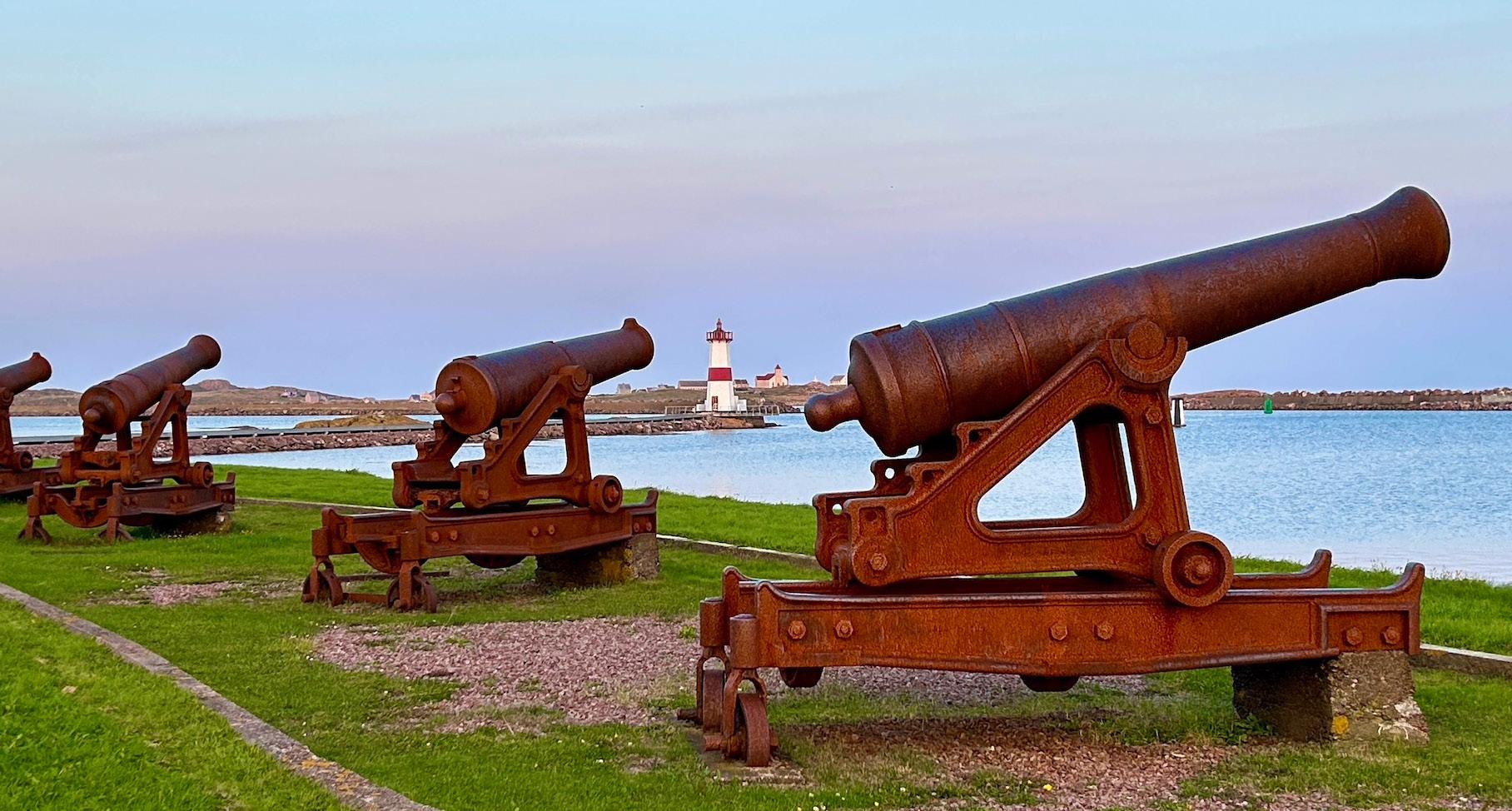
When you go
Saint Pierre and Miquelon welcome Canadian tourists and the tourism bureau will help with all aspects of planning your trip to these romantic islands. Some things to be aware of:
You need to bring adaptors for the European power outlets to charge your devices, but if you forget, the hotels can usually lend you one.
Canadian money and cards are accepted.
Your cell phone provider will charge you $16 a day to use your phone, treating you as if you were in France. Many travellers unfortunately find this out the hard way.
Remember your passport!
en.spm-tourisme.fr airsaintpierre.com tdpspm.com spm-ferries.fr

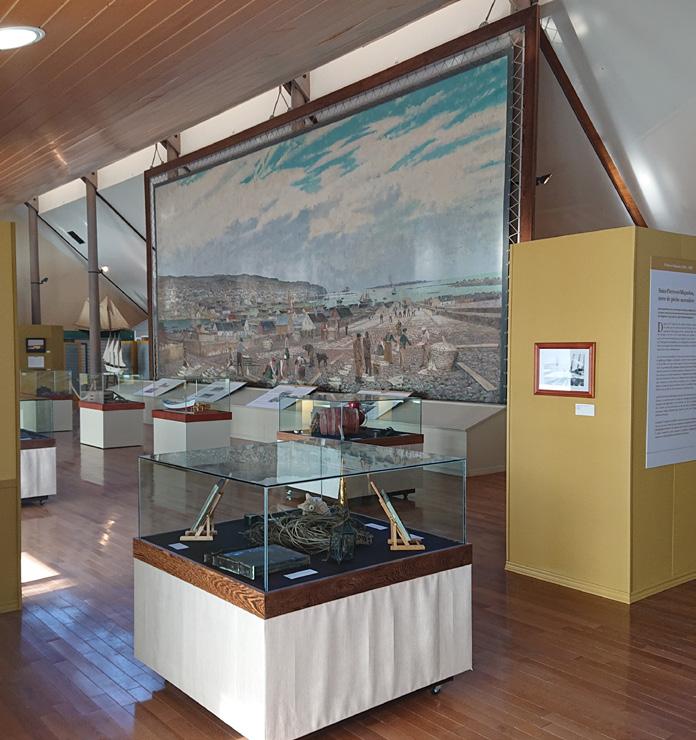 Four cannons sit where a fort once stood to defend Saint Pierre.
The view from Cap du Miquelon.
DALE DUNLOP
DALE DUNLOP
Four cannons sit where a fort once stood to defend Saint Pierre.
The view from Cap du Miquelon.
DALE DUNLOP
DALE DUNLOP
L’ARCHE
L’ARCHE MUSÉE ET ARCHIVES
L’Arche Musée et Archives is an extensive museum.
MUSÉE ET ARCHIVES
Displays in the museum trace local history.
63 SAINT PIERRE ET MIQUELON
The Right Notes
Beyond the big festivals, a cornucopia of choices
BY JOHN AND SANDRA NOWLAN
In addition to stunning landscapes, outstanding cuisine and friendly people, Atlantic Canada is renowned for its rich and diverse musical heritage. Every year the four provinces showcase outstanding local, regional and international artists in a series of major events like Fredericton’s Harvest Music Festival, Prince Edward Island’s Cavendish Beach Music Festival, the Halifax Jazz Festival, and the Newfoundland and Labrador Folk Festival.
These and other high profile concert venues attract large crowds and major media attention. Each Atlantic province also has a series of lesser known and more intimate music festivals that focus on the unique culture, sense of community, and superb talent in Eastern Canada and beyond. Here are a few of them.
NEW BRUNSWICK
Fundy Sea Shanty Festival (fundyseashantyfest.com)
St. Martins, on the Bay of Fundy, has a history of seafaring and shipbuilding dating back to 1783. It’s an ideal location for the third annual Fundy Sea Shanty Festival that celebrates the catchy tunes sung by sailors over the centuries while hauling sails or pulling on ropes. Artistic Director Gary Caines said that Sea Shanty Festivals are popular in Europe and he felt the time was right for one in Canada. The first two years were a roaring success. Visitors loved the picturesque seaside setting and the local and international talent.
The 2024 Fundy Sea Shanty Festival runs from August 9 to 11.
Larlee Creek Hullabaloo (larleecreekmusic.ca)
Known as “The Little Festival That Could”, the Larlee Creek Hullabaloo is an annual, mid-August celebration along the Wolastoq (Saint John) River in Perth Andover. Included in the busy weekend are performers from many musical genres, including blues, country, Indigenous, rock and street bands. The festival also has a boot camp for aspiring artists to learn the basics of guitar, drums, or vocals. Between festivals, the organizers host local events and contribute to school and community music programs.
New Brunswick Summer Music Festival (nbsummermusicfestival.ca)
Now more than 30 years old, this Fredericton festival focuses on classical

FUNDY SEA
SHANTY FESTIVAL/BOB BURGESS
64 ATLANTIC PROVINCES
Fundy Sea Shanty Festival.

music. Over the years it has grown from a modest, three day event into a popular, two week early August celebration. The music, performed by artists early in their careers as well as veteran professionals, varies from light classical to core repertoire pieces from Mozart, Debussy and others.
The festival now includes several informal community concerts and five formal chamber music concerts held mostly in Memorial Hall on the campus of the University of New Brunswick.
PRINCE EDWARD ISLAND
Festival of Small Halls (smallhalls.com)
For nine days every June, forty rural communities across Prince Edward Island host a wide variety of musical, dance or storytelling performances in halls, community centres, churches or intimate theatres.
Started in 2008, the Festival of Small Halls includes fiddlers, dancers, folk groups, jive, swing or soul music with two or three different concert venues each evening across all of P.E.I. The 2024 Festival will run from June 14 to June 24.
P.E.I.’s vision of bringing big music to small places has gained worldwide interest. There are now Festivals of Small Halls in Ontario and Australia.
Rollo Bay Fiddle Festival (rollobayfiddlefest.ca)
The third weekend of July comes alive with
fiddles, fiddlers and much merry music at the 48th Rollo Bay Fiddle Festival in Eastern P.E.I. Over the years it has attracted world class musicians like Natalie MacMaster, Ashley MacIsaac and Richard Wood. In the Tuning Room, built near the main stage, the party and the music continue well into the night.
Traditional music has always been a key part of Island life and this festival, with its added workshops and master classes, will keep this important tradition alive and growing. The 2024 festival happens July 19 to 21.
Tyne Valley Rock the Boat Music Festival (tvoysterfest.ca)
Combining some of Canada’s best rock bands with famous Malpeque oysters, the Rock the Boat Music Festival enters its tenth year in 2024.
The crowds in Tyne Valley’s Green Park tend to be young and enthusiastic. Combined with the Oyster Festival, established 50 years ago and the home of the Canadian Oyster Shucking Championship, early August in this picturesque part of P.E.I. is loud and exciting.
NOVA SCOTIA
Deep Roots Music Festival (deeprootsmusic.ca)
Based in Wolfville since 2004, the Deep Roots Music Festival, always held during the last week of September, is the major, closing event in a series of summer
concerts put on by the Deep Roots Music Cooperative.
Utilizing more than 130 volunteers and adhering to its mission “to create meaningful connections between cultures, community groups, artists and audiences”, the festival features a wide variety of acts including, blues, folk, roots, and Celtic.
The closing highlight is the Fresh Beat Rhythm Parade through downtown Wolfville where everyone is invited to wear costumes and join the lively parade with any kind of rhythm instrument.
Kitchen Fest (kitchenfest.ca)
Cape Breton kitchens are often the prime gathering place and centre of entertainment, keeping Gaelic traditions and music alive and thriving.
Kitchen Fest, now in its 11th year, promotes that unique culture through a series of Gaelic themed concerts throughout Cape Breton Island. For a week in midsummer, the kitchen ceilidh moves into lounges, pubs, inns and, of course, the Gaelic College auditorium for toe tapping music that celebrates a vibrant, living culture. Combined with Cape Breton’s gorgeous scenery, excellent food and friendly hospitality, it’s an ideal way to kick of the summer season. The 2024 dates are June 28 to July 6.
Lunenburg Academy of Music Performance (lampns.ca)
A decade ago Nova Scotian violist Burt
PAM SAMSON PHOTOGRAPHY
65 ATLANTIC PROVINCES
Musicials play a lively tune at Kitchen Fest in Cape Breton.
Wathen, then working in Italy, wanted to return to the province to establish a professional music school. The historic and magnificent Lunenburg Academy, built in 1895 with fine acoustics, was available and LAMP was born.
Now, young post-graduate artists and renowned performers are invited to this UNESCO World Heritage town for private study and public performances. Major late spring and early fall public concerts feature classical, opera, jazz, and world music. World recognized guest performers like British cellist Steven Isserlis and Nova Scotia-born opera singer and conductor Barbara Hannigan give workshops and join the young artists for those concerts. During the summer there are also twice-weekly public concerts in Lunenburg.
NEWFOUNDLAND AND LABRADOR
Brimstone Head Folk Festival (brimstonefestival.com)
The Fogo Island Folk Alliance, formed to promote interest in Newfoundland music, song and dance, started the first Fogo Island Folk Festival in 1984. Since then it has evolved into the Brimstone Head Folk Festival with the goal of exposing local artists and encouraging traditional music. The mid-August event has grown every year and now includes folk artists from across Newfoundland and Labrador and from beyond the province.
The festival is named for Fogo’s distinctive landmark, Brimstone Head, considered to be one of the four corners of the world by the Flat Earth Society. The 2024 festival happens August 9-11.

Sound Symposium (soundsymposium.com)
Called an “adventure in sound” or “sound beyond boundaries”, Sound Symposium features the best international music and sound art. Produced by the Sounds Art Initiative, this unique festival attracts sound artists from around the world every two years to St. John’s. They bring an eclectic mix of electronic and experimental music, jazz, traditional tunes, and improv. There’s clearly nothing else like it.
The 2024 event runs from July 19 to 27 and will include dozens of planned and impromptu public performances in concert halls, basements, by the ocean, or on street corners.
Tuckamore Music Festival (tuckamorefestival.ca)
This annual St. John’s festival focuses on chamber music with established and emerging artists from across North America. Its mission includes presenting
numerous world-renowned performers who are rarely heard in Atlantic Canada, and providing a mentorship program for about two dozen emerging artists each year. Chamber music is group playing without a conductor. It requires special skills to listen to and sense your fellow player’s intentions.
Taking its name from the tuckamore tree, a hardy and stunted fir evergreen unique to Newfoundland and Labrador, the two-week August festival broadens its reach with music events in communities beyond St. John’s. In 2024, the festival happens August 5 to18.

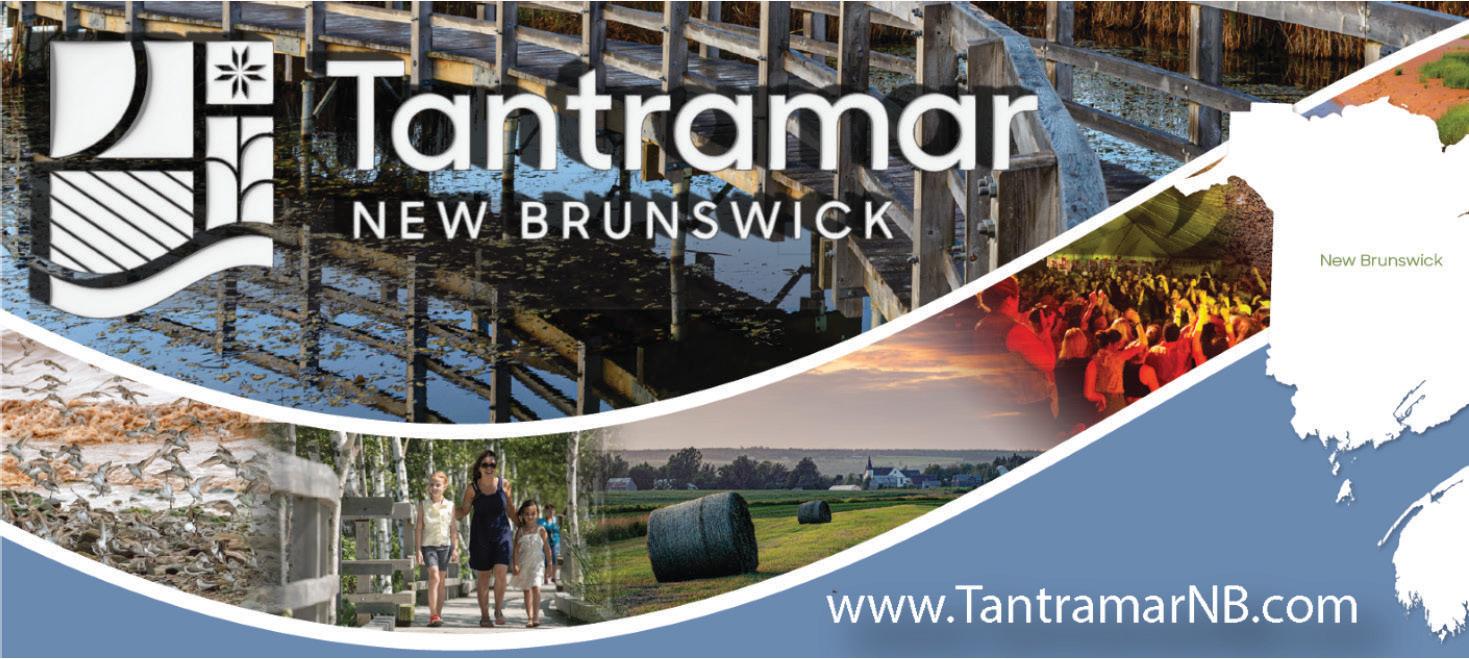
 DAVID EGUIGUREN GREG LOCKE
International music and sound art at Sound Symposium.
DAVID EGUIGUREN GREG LOCKE
International music and sound art at Sound Symposium.
66 ATLANTIC PROVINCES
Chamber music at Tuckamore.
WHERE MARITIME MEMORIES ARE MADE


With seven locations in Prince Edward Island, New Brunswick and Nova Scotia, experience Maritime hospitality at its finest at a Rodd hotel or resort this season!



RODD ROYALTY




To discover our seven locations across the Maritimes, visit roddvacations.com roddvacations +1 (800)
565-7633
MIRAMICHI RIVER
RODD BRUDENELL RIVER RESORT
CHARLOTTETOWN
RODD CROWBUSH GOLF & BEACH RESORT
Relax and recharge
Spas and wellness on the East Coast
STORY AND PHOTOGRAPHY BY SHELLEY CAMERON-MCCARRONN

From forest retreats to halo salt therapy, here are six great destinations for your next wellness escape.
Mysa Nordic Spa & Resort
Opened in December 2022, Mysa Nordic Spa & Resort, overlooking peaceful St. Peter’s Bay, is Prince Edward Island’s first Nordic spa, where whispers of self-care and peak relaxation abound. With 16 immersions on site, robe-clad guests pad off to cycle through the ancient Scandinavian practice of heat, cold and rest, a circuit designed to improve blood circulation, ease sore muscles, and activate the lymphatic system. And be enjoyable, of course.
Mysa has both balmy thermal bath and frigid Nordic bath options, a eucalyptus steam bath, and a dry sauna and a barrel sauna by the bay. Scattered through the grounds are a relaxation room,
swing chairs, cold showers, a gazebo, a greenhouse open for exploration, and several fire pits where guests sit under twinkling string lights and can read by the crackle of a wood fire, gazing over the bay. There are options to dine on site and stay overnight in water-view accommodations. mysanordicspa.com
301, Spa by the River
In 2021, Coral Shuai and Hao Hua added the intimate 301, Spa by the River to their eight-room By-the-River B&B, a 1903 Queen Anne-style home on the banks of the Wolastoq (Saint John) River in Fredericton, N.B., partly to say thanks. They opened the B&B in 2019 and soon after faced many COVID restrictions,
 Top: Delicacies to enjoy at Digby Pines; Above, the Mysa Spa, overlooking St. Peter’s Bay, P.E.I.
Top: Delicacies to enjoy at Digby Pines; Above, the Mysa Spa, overlooking St. Peter’s Bay, P.E.I.
68 ATLANTIC PROVINCES
but also much local support. Even across-the-street neighbours booked stays, say the couple, originally from Beijing.
Coral says they wanted to do something for locals. She says spa guests like the atmosphere, with trees and nature all around. Airy windows give peekaboo river views. “Most of the time, you can easily see the river. It helps you relax.”
A hit? The girls’ night package, combining spa, stay, and amenities like a charcuterie board or homemade Chinese dinner. “The spa and B&B together, it’s perfect.” 301spa.ca
Digby Pines Spa
A sense of arrival accompanies you driving into Digby Pines Golf Resort and Spa in Digby, N.S., with its 1929 Norman-style Chateau façade. The onsite spa, just beyond the outdoor heated pool on manicured grounds, keeps this zen going. The spa is known for its Eminence line of organic skin care, trained therapists, and careful attention to guest needs.
Taking a complimentary sauna and steam shower, or relaxing on their patio overlooking the Annapolis Basin, are dreamy ways to start or end the journey. “This is our little piece of paradise that we get to enjoy with so many special guests,” says spa manager Odessa Sloan. digbypines.ca/the-spa-at-digby-pines
Harmonia Saltwater Spa and Healing Centre
It’s easy to bliss out, soaking in Marble Inn Resort’s Harmonia Saltwater Spa & Healing Centre’s thermal cycle in Corner Brook, N.L. The circuit includes halo salt therapy, Labradorite steam room, dry sauna, a saltwater pool, and icy plunges.
Owner, master herbalist, and naturopath Sheri Dicks says they opened Harmonia in January 2022 to provide healthy options for relaxation and medicinal benefits. Long used in Europe, halo therapy (dry salt) is a natural treatment benefiting skin, scalp and lungs, she says, helping remove toxins from your respiratory system, cleansing the skin, and boosting the immune system. The thermal cycle can (among other benefits) help relieve pain and inflammation and boost the immune system.
Upcoming plans include an outdoor component with a wood-fired sauna and
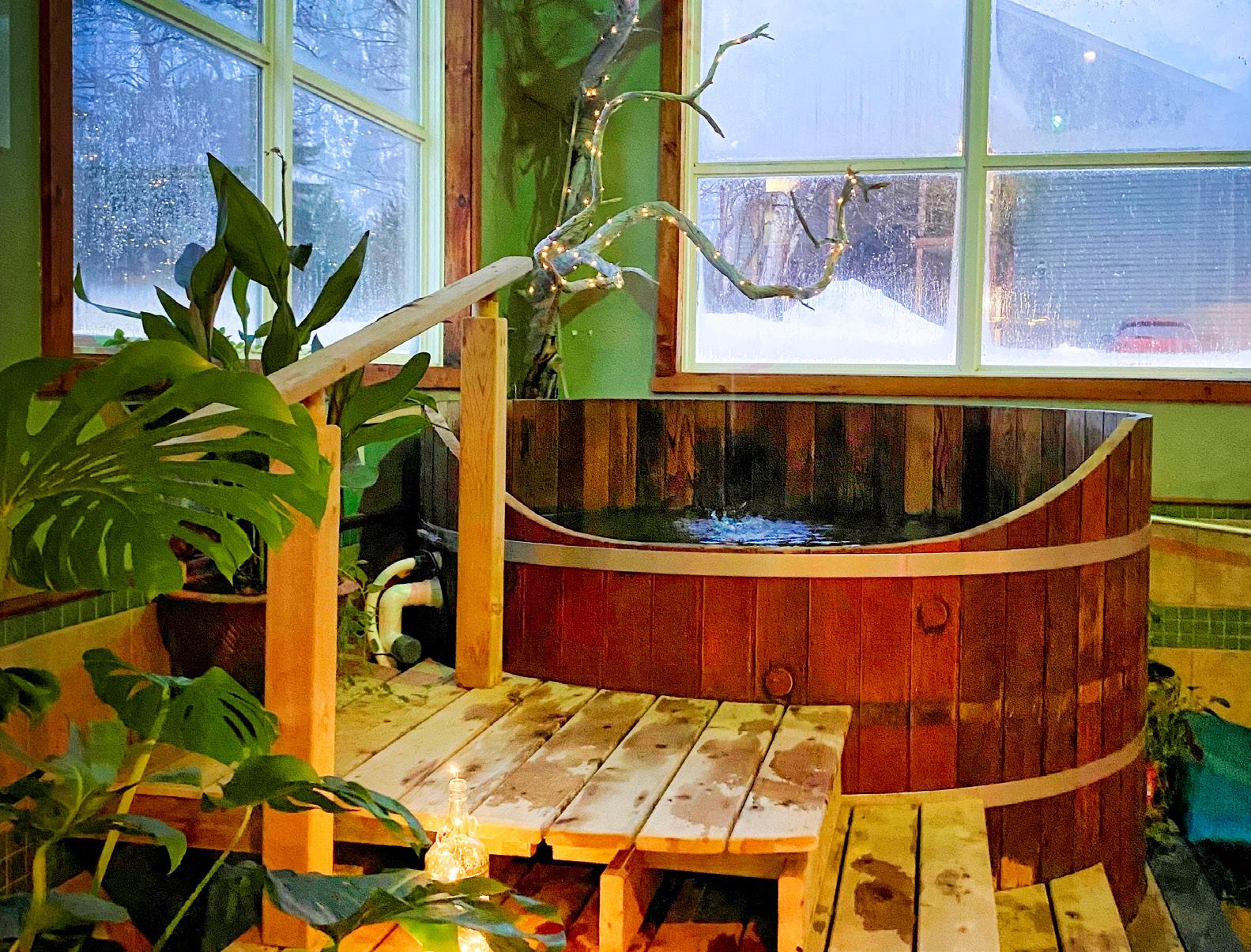

cold-water plunge in the Humber River. Harmonia also offers Reiki, massage, yoga, and facial treatments. explorenewfoundland.com/ unwindwithus
Creekside RnR
Imagine prioritizing your wellness by unwinding by a creek, in a forest, in oceanside Cocagne, N.B., a small Acadian community between Shediac and Bouctouche. Creekside RnR offers guests a serene experience with a Nordic spa, meditation and yoga offerings in a forest, with swish accommodations.
It offers five luxury geodesic domes, a tree tent, a converted luxury fishing boat stay, and two mirrored cabins (their all-mirror exterior gorgeously reflects
surrounding nature), which come with stargazing dome, red cedar hot tub, barbecue, and fire pit.
Co-owner Angele Miller says many spa-goers remark that hearing the birds and seeing wildlife gives a deep connection. “It really enhances the spa … I feel like I’m in Costa Rica, there’s so much birdsong and vibrancy in nature.” creeksidernr.com/nordicspa
Blue Forest Shores
On Nova Scotia’s Eastern Shore, in Head of Jeddore, Blue Forest Shores is a wellness and education centre spread over 40 hectares of forested coastline. The retreat offers pristine landscapes, access to five private wild islands via their trail system, and grounds with more than 100 useful medicinal plants cultivated within an extensive herb garden.
A special highlight is the Finnish-style wood-fired sauna, crafted from wood sourced from the property, and with a large window framing ocean views. Retreat facilities include a studio gathering space, community kitchen, outhouses, outdoor shower, swimming, snorkeling and kayak and canoe rentals. Lodging includes a water’s edge boathouse, the bell tent in the forest, and other forested campsites.
“We curate programs focused on holistic well-being, including herbal medicine, yoga, physical activities, creative arts, plant identification, and self-empowerment tools,” says owner Philip Darmos. blueforestshores.com
Relax in a red cedar hot tub at Harmonia Saltwater Spa, Corner Brook, N.L.
Digby Pines spa.
69 ATLANTIC PROVINCES








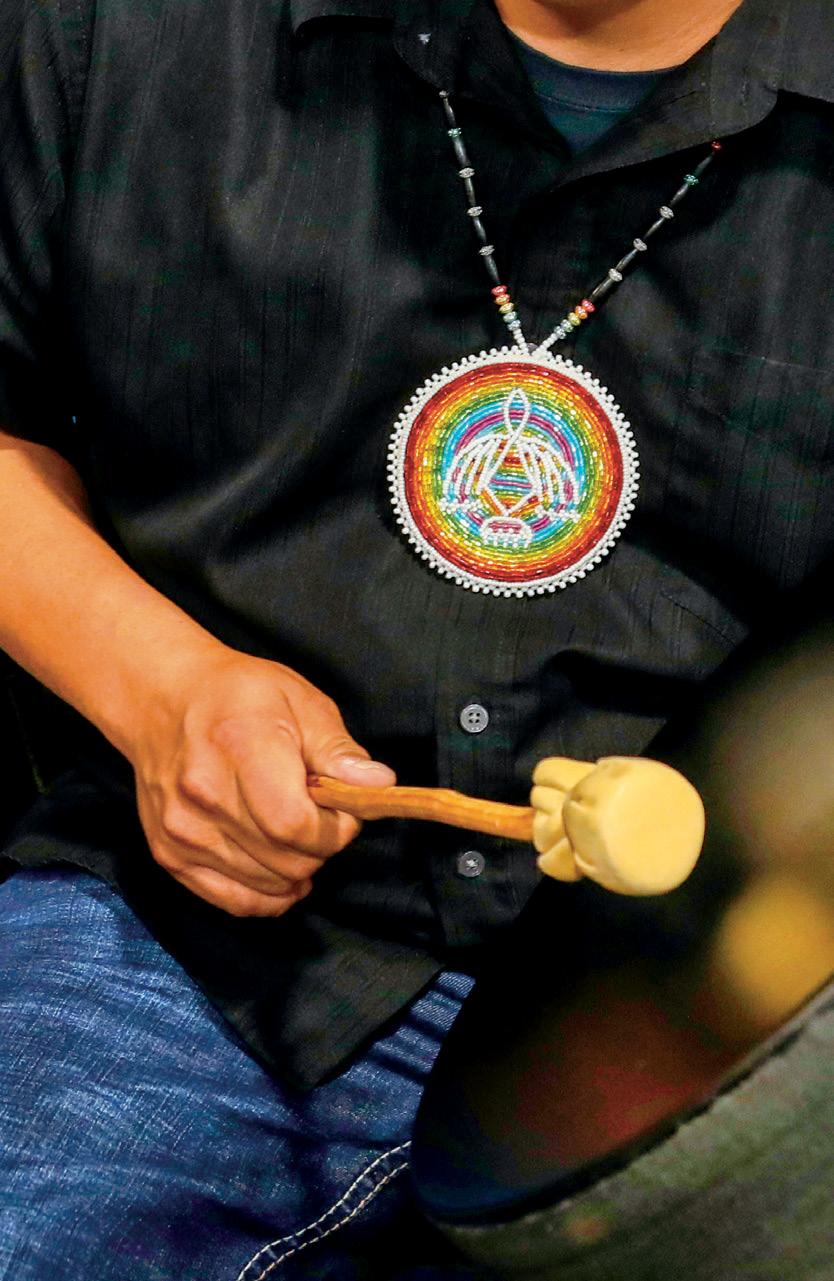













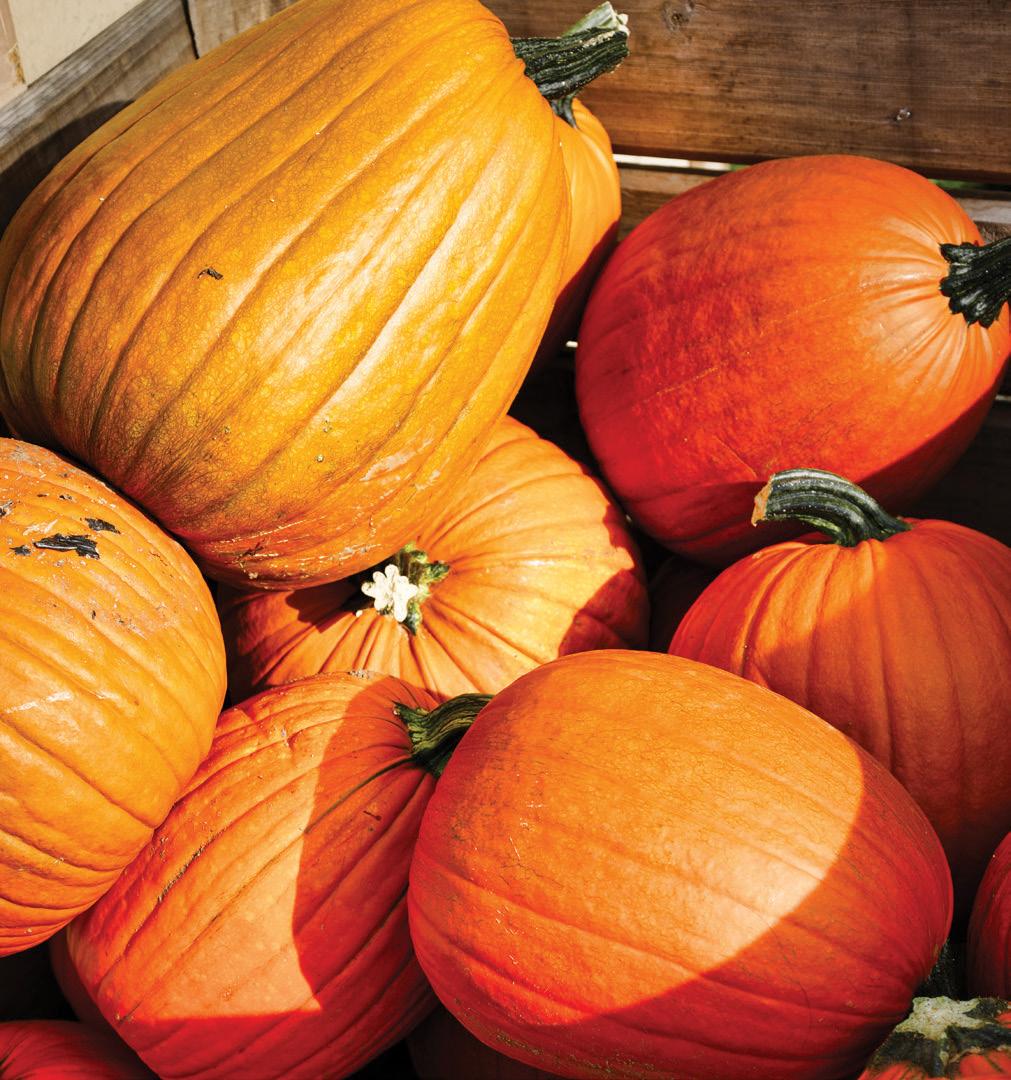



24 Follow us on For more information, contact Lisa: lsampson@saltscapes.com 902.464.7258 ext.1803 saltscapes.com Early vendor registration opens May 1 October 25-27 HALIFAX EXHIBITION CENTRE












Harvest Greets the Holidays



October 25 - 27, 2024
Halifax Exhibition Centre


If you think handmade and homespun are the key ingredients for a magical holiday, don't miss Saltscapes Fall East Coast Expo: Harvest Greets the Holidays! Filled with festive eats, drinks and farm-to-table inspiration, this jam-packed three day event won’t disappoint.




Keep your money where your heart is and meet the makers and business owners face-toface. Shop handcrafters, artisan retailers and local small businesses, while listening to festive live entertainment, sampling delicious food and beverage and experience live interactive demonstrations. Tickets go on sale

Wednesday, May 1, 2024.







Join us at Atlantic Canada's ultimate buy local show
Scan to purchase tickets.
The African heritage treasure hunt
Geocaching Black history in Atlantic Canada
STORY AND PHOTOGRAPHY BY DARCY RHYNO
Graham Nickerson’s eyes are glued to his phone as we scour a small cemetery beside a dirt road in Louis Head on Nova Scotia’s South Shore.
“We’re so close,” he says.
He’s carefully checking and rechecking coordinates that he’s pulled up from the geocaching.com website where he stores the Hidden Histories Geotour, a collection of Black history sites across the Maritimes, a collection he created and continues to build. The physical item we’re looking for is the headstone for a 19th-century Black woman who lived here.
“It’s just off to the side,” says Nickerson, who grew up in this part of the province. It’s been a while since he last visited this particular cache, so he’s having trouble recalling the headstone’s exact location. The coordinates take us over a stone wall beyond the cemetery. Nickerson regularly

searches the edges of cemeteries for the headstones of African Canadians, because they were often not permitted burial within their boundaries.
“I’ve had great support from the geocaching community,” says Nickerson. “The history is important to them. They learn things and believe the sport has a potential to create a safe space for people who want to look at alternate histories.”
At last, Nickerson spots the headstone. It’s just two metres into the bush. Stooping, we read, “Believed to be the grave of Marybelle, the last Black servant in Louis Head. Loved by all who knew her. Died about 1850.”
Since church cemeteries often excluded Black settlers, Marybelle may not be buried here. Nickerson’s not even sure if the woman’s name is Marybelle or perhaps Mary Bell because Bell is a local surname. “She was probably a Black Loyalist, enslaved until the 1820s or ‘30s.” Blacks often found work with boat builders and sea captains, but in her case, he says, “We don’t even know who we’re looking for.” Official records of the time may have excluded her because of her race.
Geocaching is a global, outdoor treasure hunt. Estimates via the website geocaching.com suggest there are more than 3,000,000 active geocaches in 196 countries around the globe. Each hidden geocache is discoverable by its GPS coordinates. This one in Louis Head is called a challenge cache because it requires the seeker to find a physical structure or object, (in this case, Marybelle’s headstone) that holds clues to the location of the cache itself.
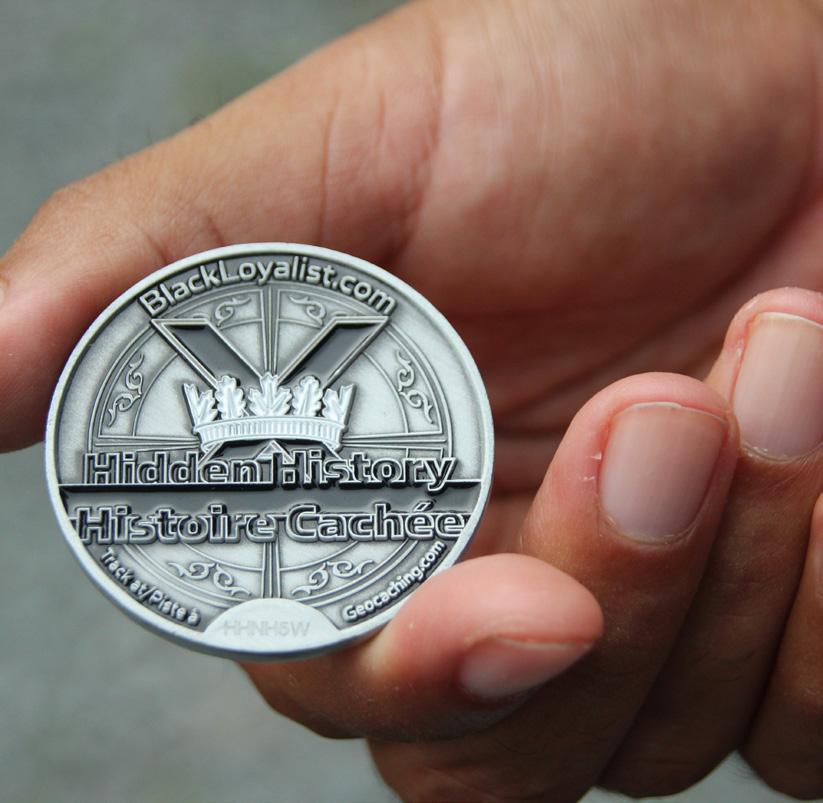
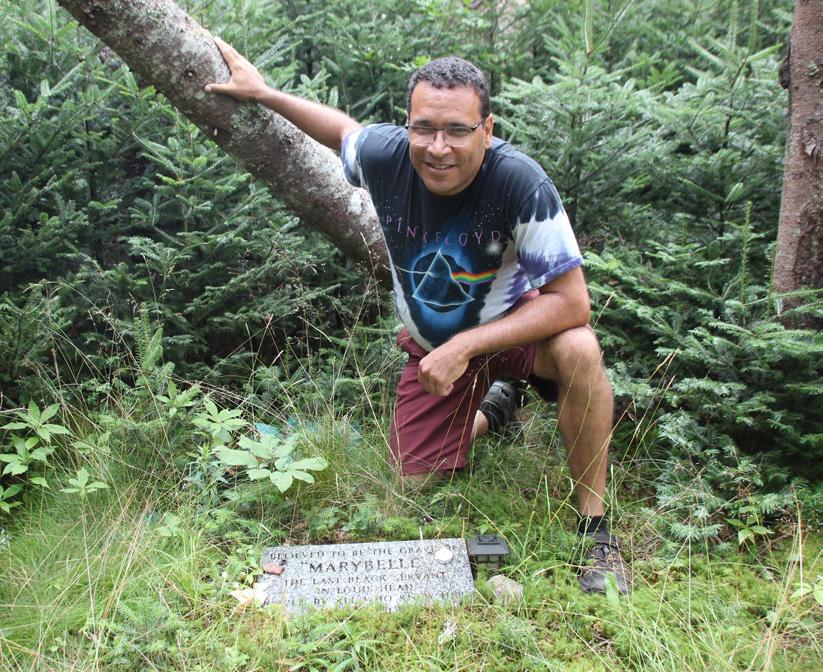
“I’d been thinking about doing this for some time,” says Nickerson of his Hidden Histories project. “It’s a way to get Black communities on a dynamic map.” When he began a new job as community inclusion liaison with Fredericton’s Office
Hidden Histories Geotour passport for the South Shore.
Graham Nickerson beside Marybelle’s reputed headstone.
72 ATLANTIC PROVINCES
Hidden Histories Geotour commemorative coin.

of Community Inclusion, he introduced the concept.
“Fredericton wants to be seen as a leader in inclusion and equity,” he says. He tells me about historical tensions in the city and current immigration trends, bringing more people of colour to the area. City officials are pleased that the collection has spread well beyond Fredericton. It demonstrates the city’s leadership in Black history.
This part of Nickerson’s geotour between Halifax and Yarmouth includes 10 caches. At each location, he stamps his Hidden Histories passport. Anyone who collects all 10 stamps can return the passport to the Black Loyalist Heritage Centre in Birchtown to receive a commemorative coin with the words “May slavery and oppression cease throughout the world.”
The words on the headstone are clues to the location of the actual cache, likely a waterproof container with a few items inside, which a member of the geocaching community created and stashed to support the project. Nickerson consults the webpage. It tells him how to decipher the clues to navigate from headstone to cache. In another location, a clue might be the number of windows in a museum that corresponds to the first number in the coordinates. Here, the clues are on Marybelle’s headstone, beginning with the year of her death.
The clues point us down the dirt road toward a beach and a thicket of bushes. Nickerson locates the cache, a plastic sandwich container in a net bag hanging from a limb. Opening it, he finds a logbook
and items other geocachers left behind. He selects an epaulet, a shoulder patch from a military uniform, this one with the word Canada on it, and replaces it with a small candle. Also in the box is a stamp to mark
his Hidden Histories passport, proving he’s discovered the Marybelle cache.
Returning to the cemetery and Marybelle’s headstone, Nickerson has one more task to complete, a personal act of respect and remembering. He retrieves a piece of chocolate, a few crackers and a small candle from his pocket and places them on the headstone. As a descendent of Black Loyalists himself, Nickerson shares a common heritage with Marybelle and the other historical figures he’s helping to remember with his Hidden Histories Geotour.
“I’m acknowledging the ancestors,” he says as he lights the candle.
KEYS MOMENTS IN ATLANTIC CANADIAN BLACK HISTORY
1605 Mathieu daCosta, the first Black man in Canada, arrives with Champlain.
1783 The Black Loyalists arrive.
1792 Over 1,000 Black Loyalists leave to found Sierra Leone in Africa.
1796 Jamaican “Maroons” arrive.
1810- Black settlers concentrate in the Charlottetown district called The Bog. 1900
1833 Britain abolishes slavery.
1854 African United Baptist Association founded, resulting in new churches.
1916 Canada’s first all-Black military regiment formed, the No. 2 Construction Battalion.
1920 Caribbean men arrive in Cape Breton to work in coal mines and steel mills.
1945 The Nova Scotia Association for the Advancement of Coloured People founded.
1958 Fredericton hockey player Willie O’Ree breaks the NHL’s colour barrier.
1964 Halifax decides to relocate residents of Africville.
1969 Black United Front of Nova Scotia founded.
1983 Black Culture Centre opens in Nova Scotia.
1984 Daurene Lewis becomes Canada’s first Black female mayor in Annapolis Royal, N.S.
2009 The Gordon House opens at Kings Landing, N.B., Canada’s first exhibit depicting Black family life.
2015 The Black Loyalist Heritage Centre opens in Birchtown, N.S.
2018 Viola Desmond recognized on Canada’s $10 bill.
73 ATLANTIC PROVINCES
Marybelle was reportedly the last Black servant in Louis Head.
Out in a Boat
Top experiences on East Coast waters
STORY AND PHOTOGRAPHY
BY DARCY RHYNO

The fog is so thick, it feels like the boat is sliding downhill. The feeling is an illusion because I’m aboard a 15-metre fishing boat converted into a whale watching tour boat. An hour after departing East Ferry, N.S., at the tip of the Digby Neck peninsula on the Bay of Fundy, I’m still staring into a wall of white. Looking toward the bow of the Passage Provider of Petit Passage Whale Watch, I decide that it’s the boat’s curved construction, the stillness of the ocean and the density of the fog that is creating the illusion. The sensation reminds me of driving through a snowstorm at night.
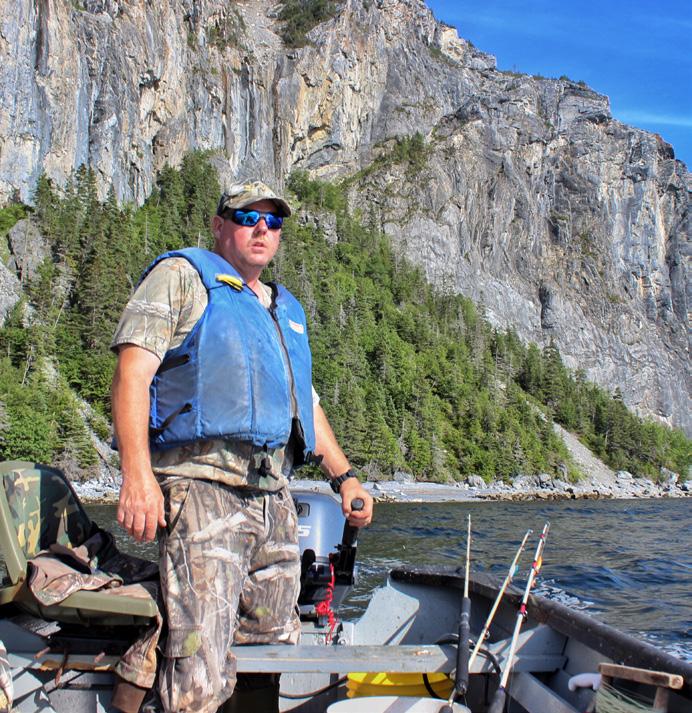
Suddenly, Captain Craig Theriault cuts the engine and asks passengers for five minutes of complete silence. In calm seas, he can hear a whale surfacing and breathing from a kilometre away. We sit completely still. It’s so quiet, we can hear waves washing over a distant shoal. Alas, we never hear a whale exhale. When five minutes are up, Theriault starts the engine and continues into the fog.
Taking a boat tour on Canada’s East Coast is the surest way to find adventure and experience memorable encounters with the natural world. For the wildest outings, head to northern and eastern Newfoundland to see massive icebergs calved from Greenland and Canadian Arctic glaciers. Twillingate Adventure Tours heads into “Iceberg Alley,” a stretch of Atlantic ocean which extends from the Labrador coast to the southeast coast of Newfoundland, including such communities as Battle Harbour, Red Bay, St. Anthony, Bonavista, Twillingate, and St. John’s — to spot these floating mountains. Along the way, visitors often glimpse whales and seabirds. Iceberg Quest Ocean Tours seeks bergs from Twillingate and wildlife from St. John’s. While in Newfoundland, book a cod-jigging fishing trip with Four Seasons Tours.
Boats at Digby wharf. Inset: Darren Park hosts a cod-fishing tour.
74 ATLANTIC PROVINCES

TOURING BY BOAT
Petit Passage Whale Watch, June to September, ppww.ca
Sea Watch Tours, June 25 to July 31, seawatchtours.ca/puffin-tour
Twillingate Adventure Tours, May 15 to September 15, twillingateadventuretours.com
Iceberg Quest Ocean Tours, May 2 to September 30, icebergquest.com
Four Seasons Tours, June to September, fourseasonstours.ca
Jolly Breeze, May 27 to October 16, jollybreeze.com
Donelda’s Bird Island Puffin Tours, May 21 to August 31, puffinboattours.com
Bird Island Boat Tours, May 18 to August 29, birdisland.net
Fiddling Fisherman, July 3 to September 30, fiddlingfisherman. com
Tranquility Cove Adventures, June 1 to October 5, tcapei.com
Bluenose II, June to September, bluenose.novascotia.ca
Lakeway Houseboats, June to October, lakewayhouseboats.com
Darren Park takes visitors out in his dory, then cooks up the catch.
From Grand Manan Island, N.B., in the Bay of Fundy, book a trip with Sea Watch Tours to remote Machias Seal Island, a scrap of Canadian land that the U.S. also claims. It’s also a bird sanctuary and home to 5,000 nesting pairs of Atlantic puffins and other seabirds. From nearby St. Andrews, Jolly Breeze offers whale watching tours either in a high-powered Zodiac or aboard a tall ship.
Along the northern reaches of Nova Scotia’s Cape Breton Island, Zodiacs and converted fishing boats carry passengers out to find whales, porpoise, seals, and seabirds. Donelda’s Bird Island Puffin Tours and Bird Island Boat Tours head for Bird Islands to see nesting puffins, nicknamed “clowns of the sea” for their multicoloured beaks and sad eyes.
For a more leisurely boat outing, book the Deckhand for a Day experience aboard the Bluenose II in Lunenburg, N.S., a replica of the original racing schooner Bluenose, still seen on Canadian dimes to this day, where you’ll learn knots, raise sails, and take a turn at the wheel.
In P.E.I., Captain J. J. Chaisson, AKA the “Fiddling Fisherman,” offers delightful evenings on the water. From Souris, he and wife Julie, and sometimes their three

kids, cruise along the red cliffs. Captain Chaisson finds a quiet spot to serve passengers a lobster dinner and fiddle traditional tunes.
Not far away, Captain Perry Gotell of Tranquility Cove Adventures slips out of Georgetown Harbour, P.E.I., on his way to wild Boughton Island for some clam digging or to visit his favourite mackerel fishing spots. When passengers catch enough mackerel, Gotell pops them on the barbecue for a fresh-fish feast. On the way back to port, he stops at buoys to check crab traps, mussel socks, and lobster traps, teaching about fishing techniques and shellfish physiology.
Perhaps the most fun on Eastern Canadian waters isn’t on the sea at all. Lakeway Houseboats rents what look like large, floating RVs. These slow but luxurious boats have 90 kilometres of New Brunswick’s Wolastoq (Saint John) River to cruise. Over a three-day weekend, my friends and I slowly motored up, then back down, this calm stretch of river, stopping at attractions like King’s Landing Museum and the small town of Nackawic. From the rooftop hot tub, we’d jump onto the slide, plunging off the stern into the river.
Back aboard the Passage Provider, a call comes over the radio from another tour operator who has just spotted a pair of humpbacks. Theriault eventually locates a Zodiac full of passengers, watching a cow and her calf lolling at the surface.
He cuts the engine. It’s so quiet, we really can hear the whales breathe. The little fellow seems to get permission from mom for a closer look. It approaches the stern of the boat and lingers, rolling over and splashing. Everyone on board gets a close look and takes lots of photos. At last, mom calls the little one away. On the return trip, the fog lifts. For the next hour, we spot porpoise and seabirds as the boat cruises on perfectly calm, flat seas with no downhill to them at all.
Fog sometimes deters tours in Petit Passage, Digby Neck.
Lakeway Houseboat in Nackawic, N.B.
75 ATLANTIC PROVINCES

Top of the leaderboard
Treat yourself to one of the great golf resorts in our region
BY DALE DUNLOP
The Atlantic provinces are fortunate to have some of Canada’s top golf courses, including one that ranks among the world’s best. Join us for a tour of these true vacation destinations, boasting accommodations, dining establishments outside of the clubhouse, and amenities beyond golf. We’ve included many that are family friendly, offering swimming pools and other attractions at reasonable prices.
Nova Scotia
Without doubt, the number-one golf resort in Atlantic Canada in terms of golf-play is Cabot Cape Breton. Score Golf Top 100 ranks its two courses, Cabot Cliffs and Cabot Links, first and fifth respectively in Canada. The Cabot Links course is the first and only true links course in Canada and offers an experience usually only found in Scotland or Ireland.

The Cliffs have been favourably compared to legendary Pebble Beach including by golf industry writers and travel publications such as Travel Industry Today People come from around the world to play these courses and they are expensive. A daily non-guest rate in 2024 is as high as $530 and the range, depending on the season, can be as low as $145 for Cape Breton residents in May and October. But for true golf enthusiasts, playing the course is a-once-in-a-lifetime experience. cabotcaprebreton.com
More down to earth and family friendly is Dundee Resort and Golf Club, which has a great location on the West Bay of the Bras D’Or Lakes. It has a nice 18-hole golf course that ascends up and down South Mountain, providing great views of the lake from a number of holes. On offer are a variety of stay-and-play packages that also include kayaking, hiking, swimming, and cultural activities. dundeeresort.com
DALE DUNLOP
The Lobster Claw at Cabot Cliffs.
NEW BRUNSWICK TOURISM Algonquin Golf Course. 76 ATLANTIC PROVINCES

New Brunswick
The top-rated course in New Brunswick is the Algonquin, on the shores of Passamaquoddy Bay in the town of St. Andrews. Affiliated with the historic Algonquin Resort, a Marriott Autograph Collection property, it’s the 20th-rated public course in Canada, and a chance to explore the many attractions of this resort town, which has drawn tourists for well over a century. If you’re looking for a golf resort

where you can also walk or bike and leave the car behind, this is a great choice. algonquinresort.com
Kingswood Resort in Fredericton caters as much to families as to individual golfers. Aside from its golf course, which was once rated the best new course in Canada by Score Golf, it features the largest entertainment centre in Atlantic Canada, with laser tag, bowling, and a play zone where kids can spend hours on their own. kingswoodpark.ca
Prince Edward Island
Long known as a golfer’s paradise, P.E.I. has many good golf resorts, and Rodd Brudenell River Resort is the most popular
with both golfers and families. It offers two championship courses, with Dundarave rated the number-28 public course in Canada, while the Brudenell River course features truly stunning holes alongside the river. Aside from golf, there is horseback riding, hiking, or cycling the Confederation Trail, and the chance to explore the nearby villages of Georgetown and Montague, which are tourist attractions in their own right. roddvacations.com
On the much less visited western portion of P.E.I., you’ll find the Mill River Resort, not far from the town of O’Leary. The resort has a much underrated 18-hole course that features some of the nicest holes on the island. Families will want to spend
 DALE DUNLOP
Dundarave in Cardigan, P.E.I.
DALE DUNLOP
The Algonquin course offers challenging play and stunning vistas.
FREDERICTON TOURISM
DALE DUNLOP
Dundarave in Cardigan, P.E.I.
DALE DUNLOP
The Algonquin course offers challenging play and stunning vistas.
FREDERICTON TOURISM
77 ATLANTIC PROVINCES
Kingswood Resort, Fredericton.
some time at the resort’s Aquaplex with its 30-metre waterslide and games room. For racquet sports enthusiasts, Mill River also has extensive tennis, pickleball and squash courts. For something different, visit the Canadian Potato Museum in O’Leary. millriver.ca
Newfoundland and Labrador
Although Newfoundland has had golf courses since 1896, golf resorts are a relatively new phenomenon. Luckily for residents and visitors, there are now two excellent places to play the game and enjoy a multitude of other activities on the Rock.
Terra Nova Golf Resort features 27 holes of golf right on the southern border of Terra Nova National Park in Glovertown, in central Newfoundland. The 18-hole Twin Rivers course is one of the most scenic in Atlantic Canada and water comes into play on several holes. The collection of par-threes on this course is perhaps the best in Atlantic Canada. The green fees are the lowest of any of courses in this article, making Twin Rivers a real bargain.

Before or after golf, visitors can partake in hiking, sea kayaking, or a boat cruise from the visitor centre at nearby Terra Nova National Park. terranovagolfnl.com
Closer to St. John’s, is the Wilds at Salmonier in Holyrood, about half an hour’s drive from the capital city, which has a championship golf course as part of a full-service resort. It offers inviting
stay-and-play packages at reasonable prices — 2023 packages were as low as $167 per person for two rounds of golf and shared accomodation. The added attraction here is the opportunity to do some fishing in the Salmonier River, one of the island’s legendary Atlantic fishing rivers which has three species of trout, plus salmon. thewilds.ca
Shop Savour Explore Unwind DiscoverPictou
What is a Links Course?
Entertainment & Events All Summer Long. Galleries, Museums and Waterfront Patios.
In Downtown Pictou & Waterfront
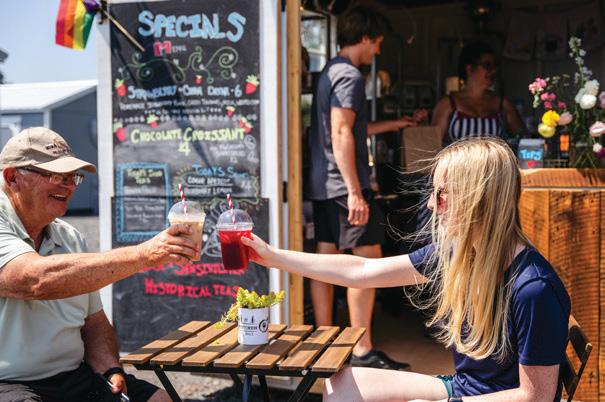
There are more than 39,000 golf courses in the world, but fewer than 250 are considered true links courses. There are many more that include the word “links” in their name, including three of the best in Atlantic Canada: Highlands Links and Northumberland Links in Nova Scotia, and The Links at Crowbush Cove in P.E.I. These are great golf courses, but they don’t fit the definition of a true links course.
So, what is the definition of a Links course? First of all, the word links is a corruption of the Old English word ‘hlinc’ which referred to a piece of sandy land between the seashore and farm lands further inland. Links courses developed naturally from the 13th century onward in these types of ecosystems, which are prevalent in Great Britain and Ireland. These coastal dune systems have little vegetation other than high grass and the infamous gorse, a thorny evergreen shrub that dooms any golf ball that lands in it.
Links courses are open to the elements, particularly high winds and often dense fog. They are the oldest golf courses in the world, but occasionally a new course fits the definition of a true links course. There are only five of these in North America and only one is in Canada, Cabot Links. So, if you want a true links experience in this country, head to Cape Breton.
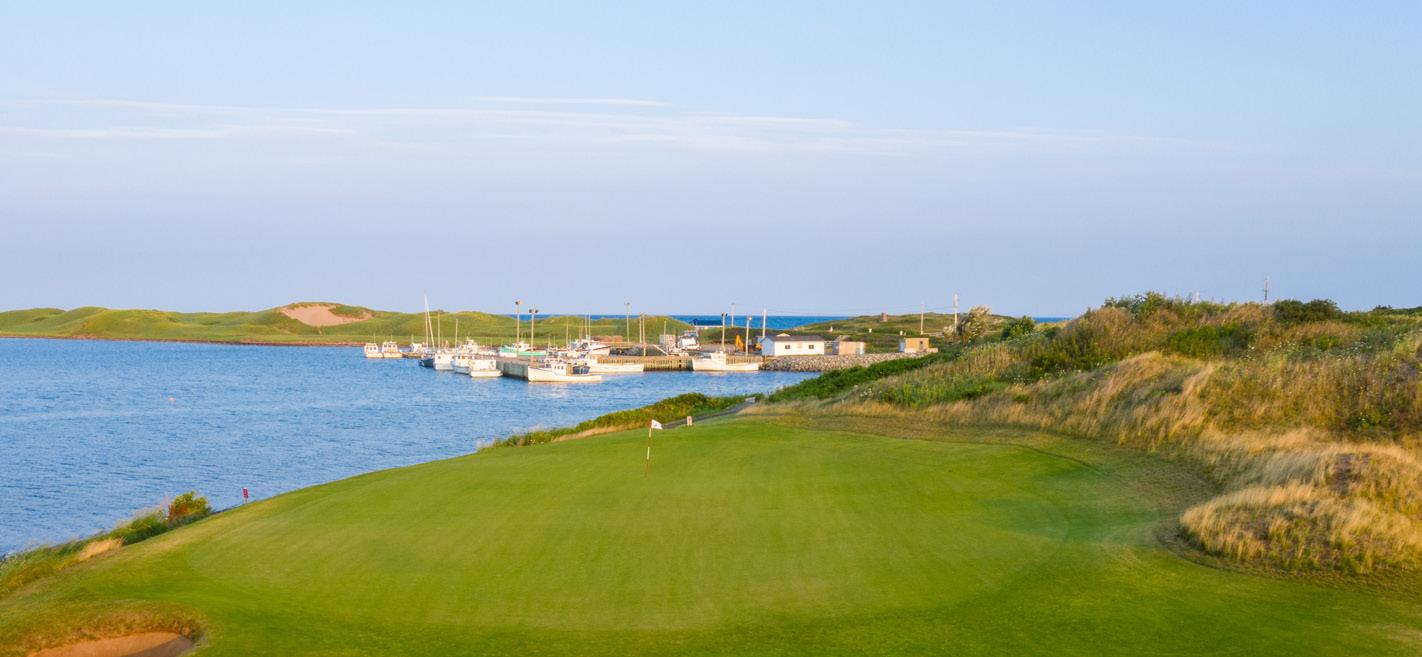
Visit www.discoverpictou.com for things to do and see!
DALE DUNLOP
The Twin Rivers course at Terra Nova Golf Resort.
DCBA/ADAM HILL
78 ATLANTIC PROVINCES

10 Reasons to travel by ferry in 2024
From sea views to saved time, Bay Ferries and Northumberland Ferries offers a scenic escape for all
Looking for a unique and memorable way to explore the stunning coastlines and charming villages of the Maritimes and Maine?
Book a ferry voyage with Bay Ferries and Northumberland Ferries and discover the beauty of slow travel. It’s a relaxed and leisurely approach to travel, where you can fully embrace every moment of your journey to and from Nova Scotia—savouring all the sights, sounds and experiences along the way.
Take a Break from Driving
Say goodbye to the worries of the road and let us handle the driving while you take a break! A ferry ride is a perfect opportunity to relax and recharge before getting back on the road, allowing you to spend more time with your travel companions. In addition to the breathtaking views, taking the ferry gives you a chance to get out and stretch your legs while enjoying this one-of-a-kind experience that’ll have you forgetting about, “Are we there yet!?”


Get There Faster
Not only will you experience views and ocean breezes on the ferry that you can’t duplicate on the road, but you’ll also reach your destination faster. Whether you sail across the Bay of Fundy between Digby, Nova Scotia, and Saint John, New Brunswick (in less than half the time it takes to travel by highway), or hop aboard The CAT for a high-speed journey between Maine and Nova Scotia, you’ll enjoy an unforgettable getaway with plenty of time to explore the sights at your destination.
Soak in Stunning Sea Views
Discover the Atlantic Coast from a different perspective, with views you can’t get from a car window. From the red sandstone cliffs of Prince Edward Island and the never-ending coastline of Nova Scotia, to the charming fishing villages of New Brunswick and the picturesque waterways of Maine, there’s no shortage of breathtaking scenery to discover. In fact, CNN recognized Saint John, New Brunswick as one of their top destinations to visit in 2024, praising its local charm, diverse range of accommodations and impressive culinary scene—and we couldn’t agree more!
80 ADVERTISING FEATURE
Family Fun
Take part in a Bay of Fundy information session by Stonehammer Geopark on select summer sailings. Keep an eye out for marine life such as seals, birds and even porpoises from our exterior decks. There’s simply no comparison between a trip by car and a relaxing ferry voyage with Bay Ferries and Northumberland Ferries. (Keep reading to see what else you can do together as a family on the ferry.)
Listen to Live Local Music
Picture yourself on the open water with your family, enjoying a bite to eat while a local artist serenades you with stories and songs from the Maritimes. Enjoy our music programs that feature a variety of artists showcasing their talents during select crossings throughout the summer. We guarantee you will have a toe-tapping good time.


You’ll enjoy an unforgettable getaway with plenty of time to explore the sights at your destination.
Bring Home a Piece of the Maritimes
Our onboard gift shops have you covered with authentic souvenirs, including a selection of locally made crafts, accessories and music. Be sure to stop by to find that perfect memento to remember your East Coast vacation.
Fuel Up on Food & Drink
Our ferries offer a variety of onboard dining options to satisfy every craving, so you can fuel up before the next leg of your journey. On your next voyage, enjoy tried-and-true favourites like the popular Islander Breakfast available on our PEI–Nova Scotia route, Digby scallops on the Bay of Fundy route or lobster rolls when you sail between Maine and Nova Scotia. We also offer everything from light, healthy snacks and desserts to a variety of hot and cold beverages.

Live entertainment, great local food and drink and wonderful scenery await you on your ferry adventure.
81 ADVERTISING FEATURE
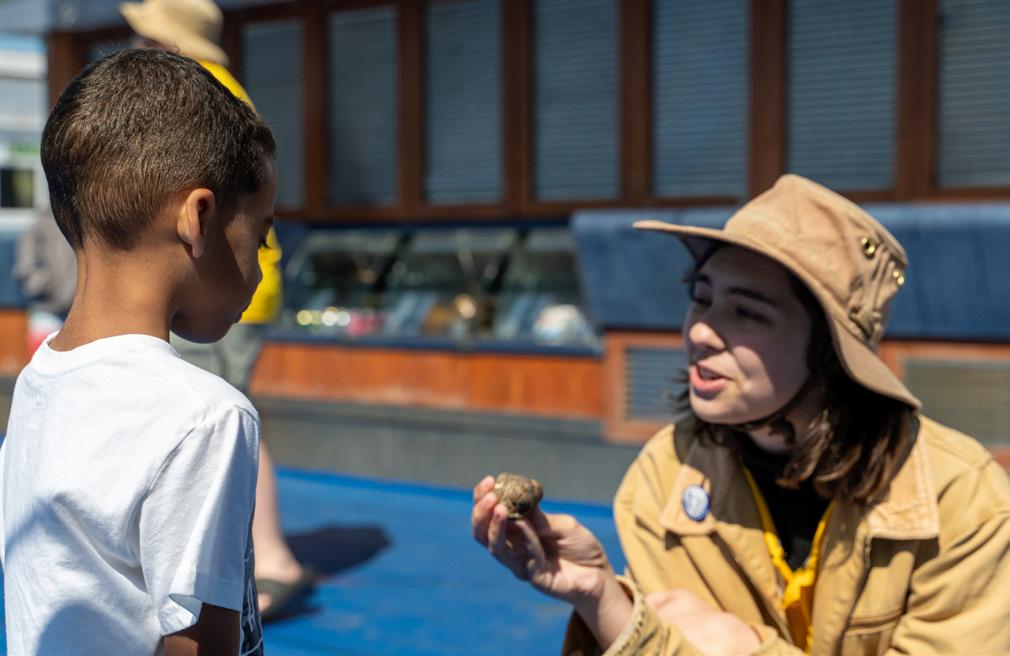
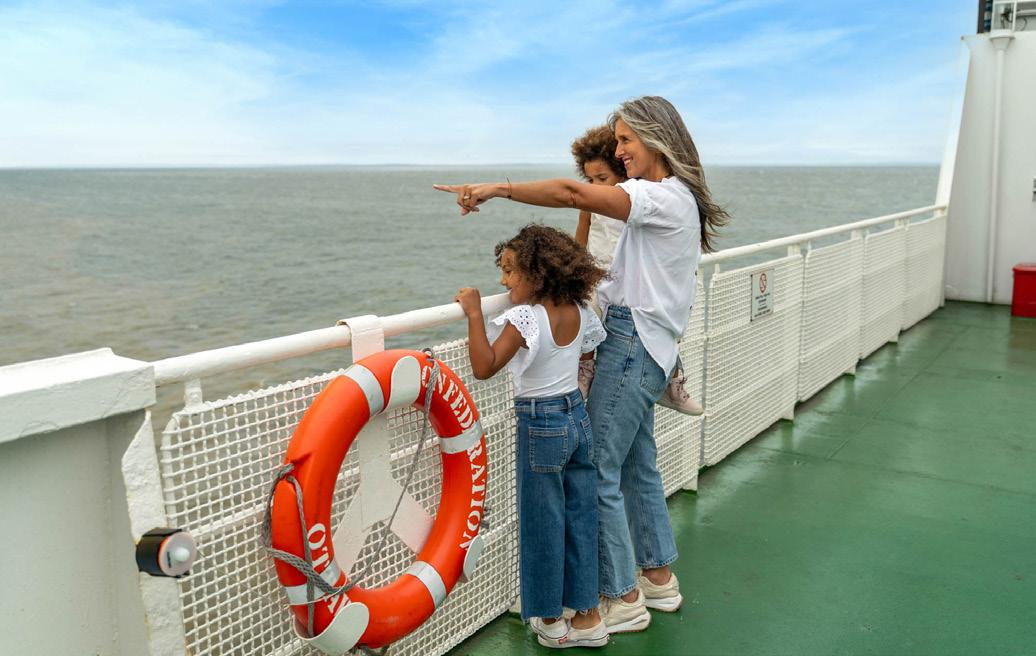
Your onboard experience offers many comforts and family-friendly activities.
Experience Maritime Hospitality
The Maritimes are known for their warm and welcoming hospitality, and the Bay Ferries and Northumberland Ferries teams are no exception! Our staff and crew members, including reservation agents, shore-based personnel and those on board who are eager to welcome you, are committed to ensuring that your trip is smooth sailing from port to port.
Kick Back and Relax in Comfort
Bid farewell to cramped cars and hello to comfortable spots where you can unwind, enjoy the views and relax while somebody else handles the driving. Grab a bite to eat, find a cozy seat or scope out a secluded spot on the open-air deck to unwind with the sea breeze. Your onboard experience offers many comforts and family-friendly activities, including daily movies on Bay Ferries and time for traditional card games.
Leave Nothing Behind
Nobody wants the added stress of fitting everything into a carry-on bag or paying extra to check their luggage. When travelling with your vehicle on a ferry, you can conveniently pack everything you need to make the most of your vacation. For example, you can bring a suitcase jammed full of your favourite items or a kayak strapped onto the roof rack.
Your Ferry Adventure is Calling
Between the ocean breeze, the incredible colours of the coastline and the adventures awaiting you on either side, a trip with Bay Ferries and Northumberland Ferries is one you’ll want to take again. Feeling inspired to sail with us? Visit www.ferries. ca to view our routes and schedules and start planning the ferry best adventure.

82 ADVERTISING FEATURE


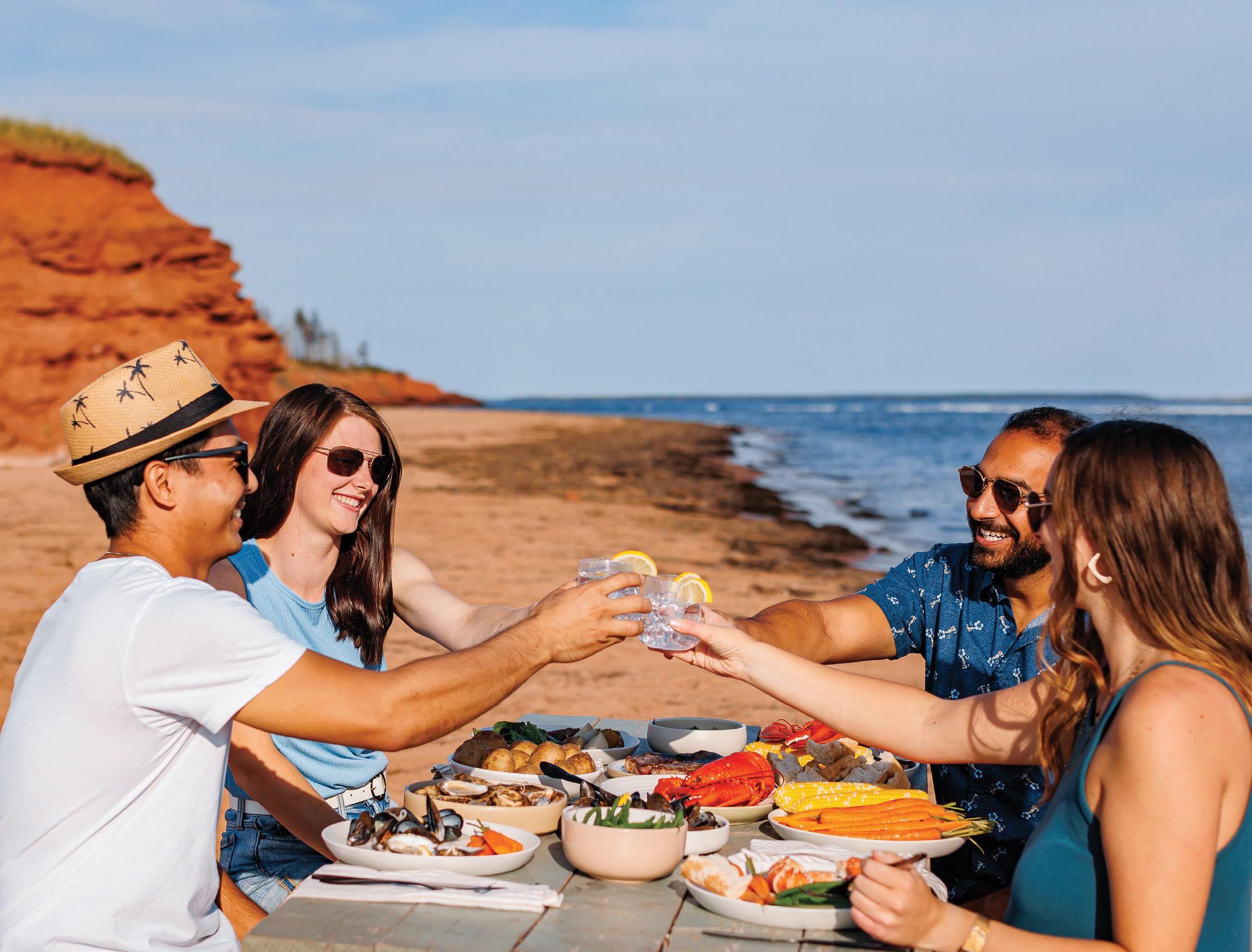


The Island is filled with wandering trails, endless beaches and over 400 fairways, culinary delights and not to miss festivals and events. Which will you explore first?
Come Find Your Island, Prince Edward Island.
Book your Prince Edward Island vacation today at ExplorePEI.com

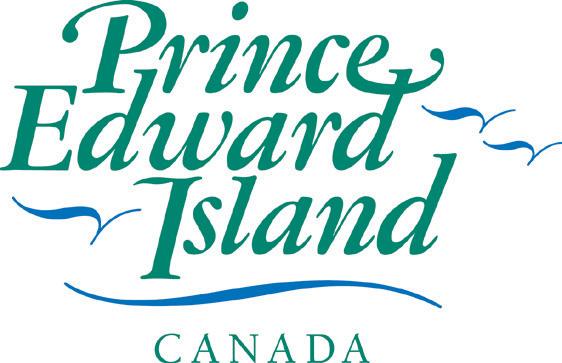







CHANGEOFSCENERY CHANGE OF SCENERY HEAD OVER FOR A



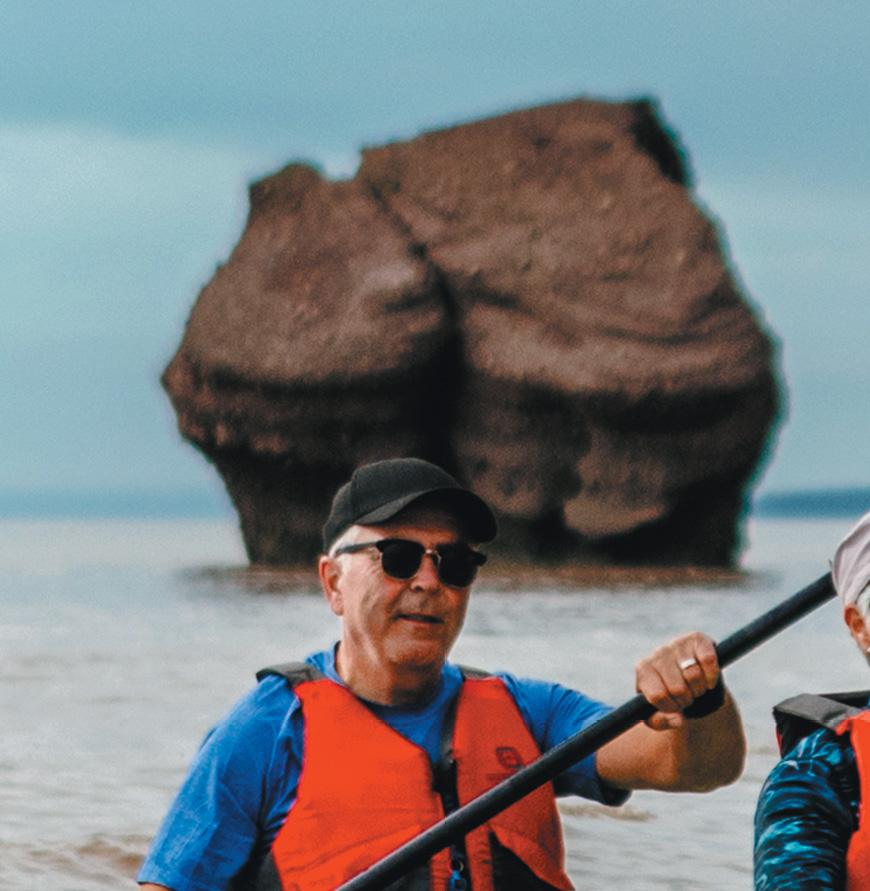















ALWAYS INVITING TourismNewBrunswick.ca HOPEWELL ROCKS PROVINCIAL PARK




















 BY DALE DUNLOP
BY DALE DUNLOP
 Boaters pull up at the marina, then head to the beer festival.
Pete Cole and Crystal Ford operate Big Axe Brewery and the beer festival.
Boaters pull up at the marina, then head to the beer festival.
Pete Cole and Crystal Ford operate Big Axe Brewery and the beer festival.







 The world’s largest axe is 15 metres tall and honours Nackawic’s forestry history.
The world’s largest axe is 15 metres tall and honours Nackawic’s forestry history.
 Fredericton’s 120-kilometre trail system extends on both sides of the Wolastoq (Saint John) River.
Fredericton’s 120-kilometre trail system extends on both sides of the Wolastoq (Saint John) River.















 Costumed actors stroll around the Garrison.
Costumed actors stroll around the Garrison.
 STORY AND PHOTOGRAPHY BY DALE DUNLOP
STORY AND PHOTOGRAPHY BY DALE DUNLOP








































 CAROL PATTERSON
CAROL PATTERSON
CAROL PATTERSON
CAROL PATTERSON

















 Photography by Garry Donaldson
Photography by Garry Donaldson






 BY SHELLEY CAMERON-MCCARRON
BY SHELLEY CAMERON-MCCARRON




 GREG LOCKE
GREG LOCKE
A sculpture commemorating Newfoundland musician Ron Hynes, “the man of a thousand songs.”
GREG LOCKE
GREG LOCKE
A sculpture commemorating Newfoundland musician Ron Hynes, “the man of a thousand songs.”








 GREG LOCKE
ST. JOHN’S TOURISM
GREG LOCKE
ST. JOHN’S TOURISM

 GYPSY SEA ADVENTURES
GYPSY SEA ADVENTURES









 Square dancers having a time in the SUF Hall.
Kevin Blackmore at House of Diamonds.
Square dancers having a time in the SUF Hall.
Kevin Blackmore at House of Diamonds.


















 DHA Motorcycle Rally June 2024
DHA Motorcycle Rally June 2024




 Marache Point Lighthouse.
A bonfire pit at Clairestone.
Marache Point Lighthouse.
A bonfire pit at Clairestone.

















































 Hand decorated regalia.
Hand decorated regalia.



 Quilts at Acadian Museum, Pubnico.
Site of Clare’s first cemetery, Belliveau Cove.
The old school in Belliveau Cove.
Quilts at Acadian Museum, Pubnico.
Site of Clare’s first cemetery, Belliveau Cove.
The old school in Belliveau Cove.



























 Argyle Courthouse and Gaol.
Argyle Courthouse and Gaol.












 DENNIS JARVIS
Place Savalette with view of Tor Bay. The Old Court House Museum in Guysborough.
DENNIS JARVIS
Place Savalette with view of Tor Bay. The Old Court House Museum in Guysborough.

 Cabotto Chocolate Shop and the Colouratura Art Gallery.
Cabotto Chocolate Shop and the Colouratura Art Gallery.




























 STORY AND PHOTOGRAPHY BY DARCY RHYNO
STORY AND PHOTOGRAPHY BY DARCY RHYNO

 Horses back in the barn after a trail ride at Lakeside Trail Ride.
Santana Gidney at Lakeside Trail Ride.
Horses back in the barn after a trail ride at Lakeside Trail Ride.
Santana Gidney at Lakeside Trail Ride.






 Red Shores Racetrack & Casino is a year-round entertainment property in the heart of Charlottetown.
58 Kensington Rd. Charlottetown (attached to Eastlink Centre)
Enjoying the scenery at Lakeside Trail Rides.
Red Shores Racetrack & Casino is a year-round entertainment property in the heart of Charlottetown.
58 Kensington Rd. Charlottetown (attached to Eastlink Centre)
Enjoying the scenery at Lakeside Trail Rides.











 WIKIPEDIA/ LEXAXIS7
WIKIPEDIA/ LEXAXIS7
 BY DALE DUNLOP
BY DALE DUNLOP




 Four cannons sit where a fort once stood to defend Saint Pierre.
The view from Cap du Miquelon.
DALE DUNLOP
DALE DUNLOP
Four cannons sit where a fort once stood to defend Saint Pierre.
The view from Cap du Miquelon.
DALE DUNLOP
DALE DUNLOP





 DAVID EGUIGUREN GREG LOCKE
International music and sound art at Sound Symposium.
DAVID EGUIGUREN GREG LOCKE
International music and sound art at Sound Symposium.










 Top: Delicacies to enjoy at Digby Pines; Above, the Mysa Spa, overlooking St. Peter’s Bay, P.E.I.
Top: Delicacies to enjoy at Digby Pines; Above, the Mysa Spa, overlooking St. Peter’s Bay, P.E.I.




























































 DALE DUNLOP
Dundarave in Cardigan, P.E.I.
DALE DUNLOP
The Algonquin course offers challenging play and stunning vistas.
FREDERICTON TOURISM
DALE DUNLOP
Dundarave in Cardigan, P.E.I.
DALE DUNLOP
The Algonquin course offers challenging play and stunning vistas.
FREDERICTON TOURISM












































